Popular Indonesia liveaboards Explore all liveaboards
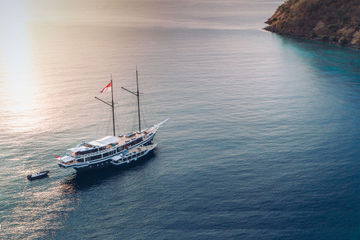
- Scubaspa Zen
- from $ 413 / day
- 9.5 Exceptional
- 19 Reviews
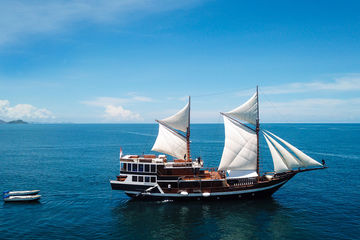
- Jelajahi Laut
- from $ 296 / day
- 9.4 Superb
- 31 Reviews
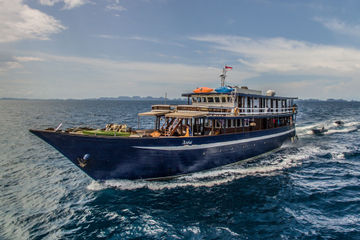
- from $ 496 / day
- 9.3 Superb
- 39 Reviews
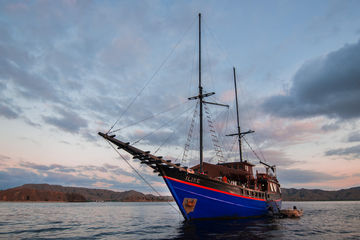
- from $ 287 / day
- 9.1 Superb
- 32 Reviews

- from $ 271 / day
- 26 Reviews
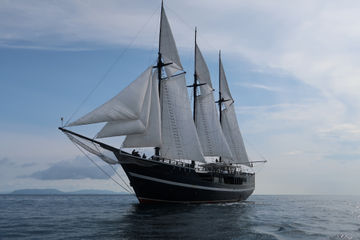
- Dewi Nusantara
- from $ 522 / day
- 6 Reviews

Liveaboard Diving in Indonesia
Liveaboard SCUBA diving in Indonesia boasts the greatest variety of marine life found throughout the world.
Indonesia is an undisputed liveaboard diving and SCUBA diving mecca. As the world's largest archipelago, Indonesia holds four times more ocean than land, stretching from Indian Ocean paradises to the Pacific's bursting biodiversity hotspots. This wealth of water makes liveaboard diving in Indonesia the best way to plunge into a kingdom of unparalleled sights and experiences. With 34,000 miles of coastline, 11,000 uninhabited islands, more than 500 species of coral, and over 2,000 species of fish, this really is what makes scuba diving in Indonesia such a diver's paradise.
Liveaboard dive trips in Indonesia can speed you off to Komodo National Park for sharks, mantas, dolphins, and tiny macro-critters or to Raja Ampat's pristine coral gardens and record numbers of crazy coral reef species. Explore the gin-clear waters of the Banda Sea and its undersea mountains, or feast your eyes on Alor's rugged volcanic terrain while enjoying unspoiled diving below the surface. Pioneers may choose Indonesia's untouched 'Forgotten Islands,' accessible only by liveaboard. And don't forget Lombok Strait for amazing drift diving along the walls of dramatic ridges and canyons.
Komodo National Park , a celebrated UNESCO World Heritage Site, sits at the center of the Indonesian archipelago. Its dazzling collection of offerings ranges from dugongs to seamounts to the legendary Komodo Dragon. Attractions of Komodo diving include wildlife large and small, nourished by deep upwellings and nutrient-rich waters. Komodo dive sites enjoy an abundance of mantas, sharks, whales, turtles, and hundreds of fish and coral species. Komodo offers everything from unique macro critters to larger marine life such as Hammerhead or Whitetip reef sharks and dolphins.
The length of most Komodo dive safaris is 8 to 12 days. Diving in Komodo can be done year-round, but the most popular months for liveaboard boat trips coincide with the Southeast Monsoon, from May to October. At this time, the water in the north of the park is warm (up to 30 C), and visibility is at its best. Budgets for Komodo liveaboard trips range from 200 to 500 euros per. day, though especially luxurious boats can run over 900 euros per. day.
Komodo liveaboards depart from Bima Bay (Sumbawa), Labuan Bajo (Flores), or Maumere (Flores), all about one hour's flight from Bali or Jakarta. However, trips that include Lombok dive sites begin in the port of Benoa on Bali. Dedicated Komodo liveaboard trips often visit dive sites around Sangeang Volcano and Sumbawa island. On dive safaris departing from Bali, many Indonesian liveaboard trips additionally include Moyo, Satonda, Gili Banta, and Gili Lawa Laut dive sites.
Escape to some of the world's most untouched scuba diving on a Raja Ampat liveaboard , where you will experience arguably the most pristine and diverse scuba diving in the world. The remote archipelago of Raja Ampat (also known as The Four Kings) in West Papua is considered the pinnacle of pristine biodiversity hotspots and the crown jewel of the Coral Triangle's many world-class dive areas. Jungle-clad islands brimming with tropical life complete the view above water.
Diving Indonesian liveaboards is truly an unforgettable experience that offers challenging dives for intermediate and experts and also easy diving for beginners. Many of the divers who visit Raja Ampat are well-seasoned, serious marine life enthusiasts treating themselves to a once-in-a-lifetime opportunity. At dive sites like Kri Island, Manta Ridge, and The Passage, you'll see a whopping 75 percent of the world's coral species, mantas and sharks, and hundreds of unique critters, creatures, and ecosystems that give Raja its claim to fame as the "global epicenter" of tropical marine biodiversity.
The length of most Raja Ampat itineraries is 7 to 12 nights. Diving in Raja Ampat can be done year-round, but most Raja Ampat liveaboards run their trips between October and April when the sea and skies are calmest. The water temperature ranges from 27-30 C. The budget for a Raja Ampat liveaboard ranges from roughly 200 to 500 euros per. day, though especially luxurious boats can run over 900 euros per. day. Raja Ampat liveaboards often depart from Sorong , reachable by domestic flights from Jakarta, Manado, Makassar, or Ambon. Liveaboards departing and landing in Sorong often spend their time between the well-endowed 1500 islands of Raja Ampat. Other boats offer adventurous tours that include the Banda Sea, whale sharks in Cenderawasih Bay, snorkeling in the Halmahera Sea , and more.
Surrounded by thousands of hectares of Marine National Parks, Sulawesi island is split into four peninsulas; the East Peninsula, the South-east Peninsula, Minahasa Peninsula to the north, and South Peninsula. The island and its surrounding dive sites are inaccessible by traditional means, meaning the best way to enjoy diving around Sulawesi is by liveaboard. The efforts made to preserve the stunning island have been rewarded with some of the most prolific dive sites in the world. One island alone, Bunaken , has over 70% of all fish species that exist in the Indo-Western Pacific Ocean. Gorontalo is a region that was originally formed by volcanic activity, and there is an incredible abundance of marine life. This Marine National Park has an area of thousands of hectares with pristine conditions in an area with one of the highest recorded species counts on the planet.
More Liveaboard Trips in Indonesia
- Be a pioneer and travel back in time to the Forgotten Islands , the most pristine, unexplored dive area in Indonesia and only accessible by Liveaboard boat.
- Enjoy the unspoiled Banda Sea alongside Dogtooth Tuna and the Ambon Scorpionfish.
- Beat the crowds in Alor and experience top-quality, crystal-clear diving all to yourself.
- Grab your camera for Lembeh Strait's unparalleled collection of wild and wacky critters.
- Take the plunge into far-flung Wakatobi's exclusive, vibrantly healthy reefs and tropical paradise islands.
Tips for Travellers
The best time to dive in Indonesia is between May and September; however, Indonesia's dive safari season really is year-round. The monsoon season usually hits in December and lasts through June. If you are looking to see sunfish, you should go between July and October. Water temperatures in Indonesia range between 20 and 28 degrees Celsius (71 and 85 degrees Fahrenheit) depending on what time of year and location. Visibility ranges between 6 to 50 meters (20 to 160 feet) or better, with depths going up to 40 meters (140 feet). Currents are generally mild but can be strong in some areas.
Departure Ports and How To Get There
Bali is one of the main departure locations for liveaboard diving Komodo via Lombok. Bali's main liveaboard departure port is Benoa, in the south of the island. SCUBA diving off Bali can include a visit to Crystal Bay for a chance of Mola Mola (Sunfish) encounters or a dive at the famously colorful Liberty Shipwreck, full of marine life in a shallow location. Bali dive sites hold a variety of underwater landscapes and special species; depending on where you choose, you can enjoy high-quality muck diving, large pelagics, or quiet, coral-filled bays. Expert divers will be challenged and excited by wild currents around Nusa Lembongan, and entry-level divers can find ample offerings of beautiful locations suitable for beginners and coursework.
International flights to Bali depart regularly from around the world, often with a transfer to a nearby Southeast Asian country like Kuala Lumpur or Singapore. If you're in Southeast Asia already, direct flights are available. Standard itineraries for liveaboards departing Bali are usually Komodo-bound. However, they stop at premier Lombok dive sites along the way, such as Moyo, Satonda, Gili Banta, and Gili Lawa Laut. Extended itineraries may additionally venture farther east from Komodo to Flores and Alor for serene, world-class diving without the crowds.
The port of Sorong , a city in the province of West Papua, is a major departure location for liveaboards in Indonesia traveling to Raja Ampat and Ambon. From Sorong, dive sites in Raja Ampat and nearby are easily accessible. Land tours for waterfalls and bird-watching add to the offerings, as well as Cassowary Cape, with its white-sand beach and cassowary trees. Snorkelers and divers alike can enjoy the area.
Domestic flights to Sorong depart from Jakarta, Manado, Makassar, and Ambon. Standard liveaboard itineraries departing Sorong are focused on the Raja Ampat area. Extended liveaboard boats departing or disembarking in Sorong offer a great variety of dive tours, some to/from Ambon and the Banda Sea, some to Cenderawasih Bay Bay for whale sharks, and some traversing the Halmahera Sea.
Indonesia Diving Reviews
- 612 Verified Reviews
- 10.0 Exceptional
fantastic. i hope the locals continue to protect the regions
Diving Indonesia in January on the Lady Denok
- 8.8 Fabulous
I would rate it as good to excellent. My perspective is based on 54 year of diving and more than 1000 logged dives.
Diving Indonesia in January on the Mari
Most diverse coral and fish I've ever seen. Water was warm and mostly calm.
Diving Indonesia in January on the Neomi Cruise
- Christines N
Very nice, water was a little murky.
Diving Indonesia in February on the Scubaspa Zen
- 9.6 Exceptional
This trip the weather was not so good and that impacted visibility. The $350 park fee was excessive.
Diving Indonesia in February on the Ilike
I’d only heard stories about how beautiful these reefs were and the sheer amount of life lived up to the hype. So many different species, all layered as far as the eye can see. More soft and hard corals than ive ever seen. Tons of tiny things and big things.
Diving Indonesia in February on the Jaya
- Christian D
The diving was great, just sad to see trash in the water in some areas.
Diving Indonesia in February on the Calico Jack
Excellent dispite the limited visibility
Diving Indonesia in February on the Lady Denok
8/10 due to the amount of plastic/garbage found in a lot of dive sites
Diving Indonesia in March on the Jelajahi Laut
Great diversity of fish and sea life along with vibrant corals
Diving Indonesia in March on the Solitude Adventurer
Very good, again, hoped for more pelagics, but the coral was the healthiest I've seen since in probably 10 years, tons of fish, lots of macro
Diving Indonesia in April on the Blue Manta
Very good. Some of the best in the world. Local fishing is taking a toll on mid to large animal populations for sure.
- 6.8 Review score
overall good experience but not adequately prepared for strong currents.
Diving Indonesia in April on the Queenesia
Above average. Very diverse
Diving Indonesia in April on the Neptune One
Would absolutely recommend everyone dive Komodo. The Manta Dive is spectacular.
Diving Indonesia in May on the Komodo Sea Dragon
Excellent, enjoyed the challenge of stronger currents on some dives, and more relaxing experiences on others. Quantity and variety of underwater sea life was wonderful, water temperature was pleasant. Very excited to return today! Highly recommend.
Diving Indonesia in May on the Neptune One
Incredible reefs and wildlife and will certainly be going again as soon as possible!
Diving Indonesia in May on the Scubaspa Zen
We saw at least 2 turtles on every dive! The coral is the most beautiful and lovely I’ve ever seen! The most beautiful place I’ve ever dove!
Diving Indonesia in June on the Nusantara
- 8.4 Very good
I dove in Raja Ampat in 2019, this is second location for Indonesia diving. The diversity of corals is a very real thing and should be experienced.
Diving Indonesia in June on the Moana
Overall great if you like macro and don’t mind long crossings between dives
Diving Indonesia in June on the Mermaid I
Beautiful reef with a great biodiversity.
Diving Indonesia in July on the Blue Manta
So much variety in Indonesia, absolut must.
Diving Indonesia in August on the Sokaraja
- Guinevere A
Loved the strong currents and pinnacle dive
Diving Indonesia in August on the Coralia
The trip was very good as well as the quality of the dive sites. I had hopes of seeing dolphins, and more reef sharks, but what we did see was still great! The night dives and macro life was a nice treat as well. The top 2 liveaboards I have experienced have been in Indonesia, better boat and service than we have experienced in amazing dive destinations like Socorro and Galapagos!
Diving Indonesia in August on the Solitude Adventurer
Incredible! The best dive sites we’ve ever been to! Amazingly healthy, vibrant reefs & outstanding wildlife.
Diving Indonesia in September on the Nusantara
The diversity of ecology, topography, conditions and marine life were breathtaking! Would highly recommend to anyone!
Diving Indonesia in September on the Anne Bonny
Excellent. Can’t be best for the sheer diversity of sightings.
Diving Indonesia in September on the Seahorse
- 8.0 Very good
Great trip and excellent reefs. I only worry that central Raja has already exceeded it's environmental carrying capacity of divers: many with bad habits, poor reef protection, using spray on sunscreens, etc.
Diving Indonesia in October on the Ilike
Picturesque, exactly as pictured, occasional strong currents - reef hook recommended
Diving Indonesia in December on the Amaya Explorer
Great!! Would love to explore more of this country!!
Diving Indonesia in December on the Carpe Diem
Incredible. The people and the staff were so warm and accommodating.
Diving Indonesia in December on the Solitude Adventurer
- Jean-Yves L
I’ve dived in Bali (Amed, Tulamben, Kubu, Pemuteran, Nusa Penida, Padangbai) a number of times. In my mind, corals and fish in both places are equivalent in terms of beauty and diversity except that there is much more current in Raja Ampat and greatly more Oceanic Mantas there.
Diving Indonesia in February on the Mari
Overall the holiday and diving experience was very good. I guess to have made it really outstanding the right conditions have to be met in terms of visibility. But that's tough luck. Still and amazing adventure at a very remote place with very friendly people and beautiful landscape above and below water.
Diving Indonesia in February on the Solitude Adventurer
- 5.6 Review score
Warm tropical diving.very enjoyable
Diving Indonesia in February on the Tiare Cruise
We had very bad visibility (10-15 m) for their standards. But it was as advertised other than that. High density of life and variety. Splendid Macro experience.
Diving Indonesia in February on the White Manta
- 6.0 Review score
Indonesia diving is known for its biodiversity.
Diving Indonesia in February on the Seaisee
- 6.4 Review score
Diving in Indonesia is a great experience because every spot is so beautiful overall. Even if it's not a highlight you will still see schools of reef fish everywhere and the corals are very healthy making it colorful and vivid. It's a joy to be part of the reef for the hour's dive and I'm always looking forward to the next dive. The currents in Raja Ampat can be harsh and some dives could be cancelled for rough weather. It's important to have the experience in how to deal with strong currents either way and a reef hook is definitely a way to save energy trying to stay in one place.
Diving Indonesia in March on the Putri Papua
- Christoph H
Perfect dive trip and great moments on some of the small islands!
Diving Indonesia in March on the Jaya
- Hisachika S
I believe the diving in Indonesia is a one of the best diving in the world. Because Can dive with many many kind of schooling fishes.
Diving Indonesia in March on the Seaisee
The very complicated logistics and the insecurity of not reaching the destination in a timely manner. That is all
The equatorial sea is rich in everything. I love Indonesia!
Diving Indonesia in March on the White Manta
Nice warm water Different levels of visibility - not all were great, but reasonable Lots of fish both large and small
Diving Indonesia in March on the Nusantara
A biodiverse marine world and in many places still healthy. Always a variety of experiences and observations. Always colourful. Some local communities are aware of looking after their vulnerable resource i.e. the ocean and tourists, while others unfortunately are not paying attention. It was sad to see the amount of plastic in Raja Ampat's oceans. Short legs of travel were frustrating because of untrustworthy airlines and loss of flights, resulting significant loss in funds for us. This is an obstacle for future travels in Indonesia, especially to more remote parts.
Diving Indonesia in March on the Akomo Isseki
Love diving in Indonesia. Warm waters, tons of life, incredible coral.
Diving Indonesia in March on the Neptune One
Indonesia is a fantastic country to dive. High quality Dive shops, experienced Dive masters/ instructors, varying locations/ types and diving marine life
Diving Indonesia in April on the Sokaraja
Indonesia is great. Most people are very friendly and welcoming. Prices are cheap and you get everything you need.
Amazing. It's my second time diving in Indonesia and Raja Ampat contains so many incredible dive sites, accessible via Liveaboard.
Diving Indonesia in April on the Neomi
World Class diving, pristine coral, lots of pelagics
Diving Indonesia in April on the Nusantara
- Alexandra R
Fantastic sightings, interesting dives. Not great visibility when diving central but Mistool was amazing visibility.
Diving Indonesia in April on the Mari
Very enjoyable but we did worry about the pollution & damage to the reef from boats getting too close to the dive sites & damaging coral with the current , maybe some Water Police to manage this & the clean the rubbish from the waterways .
Diving Indonesia in April on the Ikan Biru
A very enjoyable experience with good coral and fish life. Manta's were a bonus!
Diving Indonesia in April on the Adelaar
Definitely returning to Indonesia. Muck diving was incredible and the liveaboard area in Komodo was exciting.
Diving Indonesia in May on the Blue Manta
Great discovery in changing conditions (water temperatures) and underwater landscapes were very diverse
Diving Indonesia in June on the Scubaspa Zen
Amazing diving, most of the dives were not for beginners
Love it. Incredible variety, size and quality of diving, great level of divemasters. Hard to beat.
Diving Indonesia in June on the Neptune One
Diving in Indonesia, particularly in the coral triangle, is one of the most extraordinary things you can do in life. A feast for the eyes.
Diving Indonesia in June on the Bajak
The dive sites are well protected with colourful coral, many fishes and bigger stuff like Manta, sharks and Turtle. You never get bored, with a few drift dives for more fun!
Diving Indonesia in June on the Sokaraja
Great visibility, diverse underwater economy system, and fun current. It is a must-dive destination.
- Alexander F
Very special, great visibility and variety of fish! Currents can be daunting but with with the right boat and dive master so worth it!
Diving Indonesia in July on the Mikumba 2
Diving Indonesia in August on the Jelajahi Laut
At times challenging due to strong currents, but also rewarding, and overall amazing.
Diving Indonesia in August on the Mikumba 2
Very healthy reefs with an exceptional variety of species and diverse topography.
Diving Indonesia in August on the Akomo Isseki
It was the best experience. Such value for money!
Diving Indonesia in August on the Nusantara
Brilliant well lead dives . At times there were plenty of others divers around but you get that .the fish didn’t seem bothered so neither were we .
Diving Indonesia in August on the Busy Girl
A+++
- andré V
Diving is very good in terms of biodiversity, colors and reefs., but if you are not in a marine park you clearly see the overfishing: hardly any jacks, barraqcudas, snappers, tunas or sharks left.
Diving Indonesia in August on the Neptune One
Superb Culture and people
Diving Indonesia in August on the Ilike
- Francesca P
Very good. Between Bali (Nusa Penida) and komodo, 10 times komodo. Way more interesting and the water is warmer
Diving Indonesia in August on the Ikan Biru
great visibility with great people
- GUILHERME F
Very nice, we saw everything that we supposed to see. The currents added an extra good spicy for the divings, pretty fun!
Awesome, I recommend it to all people that have some advanced diving experience
Diving Indonesia in September on the Sokaraja
Varied, vibrant, excellent
Diving Indonesia in September on the Jaya
Much better than expected. Reef healthier than imagined and visibility better than previously experienced in Bali.
Diving Indonesia in September on the Scubaspa Zen
Overall, diving in Indonesia was great so far. Diverse sites for different experience levels. Currents can be strong, so be careful. It is advised to start diving in Indonesia in easy spots first, and then slowly get familiar with the current. The underwater show is incredible.
- Francisco S
Indonesia is world-class for biodiversity.
Diving Indonesia in October on the Epica
It's mostly great diving in Indonesia, but poor weather conditions can change itineraries to visit poorer dive sites
Diving Indonesia in October on the Mari
Outstanding. I will be back for more!
Diving Indonesia in October on the Jakaré
Raja Ampat was the best
Its my second time in indonesia and I love it here. From people to diving to hiking to exploring cultural villages. You get everything! Absolutely recommend!
Diving Indonesia in October on the Nusantara
Diving Indonesia in October on the Mermaid II
Huge Biodiversity!
Diving Indonesia in November on the Sokaraja
Colourful and still so many fishes and corals, such a blast
Diving Indonesia in November on the Moana
Indonesia is some of the worlds best diving for reefs & sharks. But the muck diving is, frankly, depressing - plastic everywhere. One guest on our boat was seriously ill after diving in polluted Ambon Bay.
Diving Indonesia in November on the Blue Manta
So colorful
This was my first time diving in Indonesia and it exceeded my expectations. From the variety of dive sites and creatures there was so much to see, and even after an 11-day liveaboard it felt like each day was a new adventure.
Diving Indonesia in November on the Queenesia II
Wonderful ocean, divers that care and a genuine care for the environment
Diving Indonesia in December on the Tiare Cruise
One of the best for macro sighting and photography.
Diving Indonesia in December on the La Galigo
Diving Indonesia in December on the Raja Ampat Aggressor
Love diving in Indonesia, so many places to explore
Diving Indonesia in December on the Kira Kira
Hopefully in future goverment and other parties will invest more in to litter management. Would be an absolut horror if the garbage takes over the dive sites even more than it is already now.
Amazing! Great corals and good visibility with a lots of life
Diving Indonesia in January on the Queenesia
- Jacqueline Dolores K
Great corals, a lot of fish, diverse dive sites, healthy environment, manta rays & sharks, somestimes not the best visibility, we were mostly the only boat at the dive sites which was cool
Diving Indonesia in January on the Nusantara
Very friendly people, and musical.
Diving Indonesia in January on the Raja Ampat Aggressor
- Niklas Christian P
Great biodiversity!
Diving Indonesia in January on the Gaya Baru Indah
Great experience, there is No better macro diving in the world then in indonesia
Diving Indonesia in January on the Mermaid II
Raja is one of those places that once you've been there you want yo go back. 20 dives in 6 days on the mikumba so it's pretty full on, but the sites are quite close. Very comfortable boat, coral gardens that are extraordinarily good and marine life is mind blowing. Visibility was c10-15 metres and there are considerable currents to bear in mind. It takes 2 days+ to get there but worth it.
Diving Indonesia in January on the Mikumba Dua
Be sure to bring 3mm wetsuit. The water can still be 26 during summer
Diving Indonesia in February on the Pearl of Papua
Loved it. Still unique and a lot if intact reefs
Diving Indonesia in February on the Raja Ampat Aggressor
Visibility was not as good as expected but it was low season so I think it was great
Diving Indonesia in February on the Queenesia
- 4.4 Review score
Diving was incredible and I would thoroughly recommend Komodo National Park. Be aware that visibility can be only 10-15m in March.
Diving Indonesia in March on the Queenesia
We’re here to help, 24/7.
Find available liveaboards.
- AUD Australian Dollar
- BRL Brazilian Real
- CAD Canadian Dollar
- CHF Swiss Franc
- CNY Chinese Yuan
- CZK Czech Koruna
- DKK Danish Krone
- GBP British Pound
- HKD Hong Kong Dollar
- HUF Hungarian Forin
- ILS Israeli New Sheqel
- INR Indian Rupee
- JPY Japanese Yen
- KRW Korean Won
- MXN Mexican Peso
- MYR Malaysian Ringgit
- NOK Norwegian Krone
- NZD New Zealand Dollar
- PHP Philippine Peso
- PLN Polish Zloty
- RON Romanian Leu
- RUB Russian Ruble
- SEK Swedish Krona
- SGD Singapore Dollar
- THB Thai Baht
- TRY Turkish Lira
- TWD New Taiwan Dollar
- USD US Dollars
- ZAR South African Rand
Connect with our expert travel consultants to plan your next trip.
- Call us 1 (844) 334-1666
- Email Us Send us a message
- About us Read more
- Cayman Islands
- Dominican Republic
- Papua New Guinea
- Philippines
- Saudi Arabia
- Solomon islands
- Turks and Caicos
- Virgin Islands
- Admiralty Dream
- Adriatic King
- Adriatic Princess
- Adriatic Queen
- Akomo Isseki
- Alaskan Dream
- All Star Cuan Law
- All Star Red Sea
- Amadeus Thailand
- Amalia Indonesia
- Amaya Explorer
- Amba Liveaboard
- Aqua Tiki II
- Aqua Tiki III
- Archipell I
- Atlantis Azores
- Bahamas Aggressor
- Bahriyeli C
- Bahriyeli D
- Baranof Dream
- Belize Aggressor III
- Belize Aggressor IV
- Black Pearl
- Blackbeards Morning Star
- Blackbeards Sea Explorer
- Blue Dolphin
- Blue Force One
- Blue Horizon
- Blue Maldives
- Blue Melody
- Blue Shark 2
- Blue Voyager
- Bulan Purnama
- Burc-u Zafer
- BVI Aggressor
- Cachalote Explorer
- Caledonian Sky
- Calico Jack
- Calipso Cruise
- Calipso Dive
- Captain Bota
- Captain Sparrow
- Caribbean Explorer II
- Carpe Diem Indonesia
- Cayman Aggressor IV
- Chichagof Dream
- Christianna VII
- Cocos Island Aggressor
- Coral Adventurer
- Coral Discoverer
- Coral Geographer
- Coral I and II
- Coral Sea Dreaming
- Cormorant II
- Crucero Amazonas
- Cruisenautic
- Deep Andaman Queen
- Discovery Alaska
- Discovery I
- Discovery II
- Discovery Palawan
- DiveRACE Class E
- Dolce Vita Egypt
- Dolphin Dream
- Dolphin Queen
- Duke of York
- Duyung Baru
- EcoPro Mariana
- Elite Galapagos
- Emperor Asmaa
- Emperor Elite
- Emperor Explorer
- Emperor Harmoni
- Emperor Leo
- Emperor Raja Laut
- Emperor Serenity
- Emperor Superior
- Emperor Voyager
- Expedition Antarctica
- Fascination
- Fiji Princess
- Freedom III
- G Adventures Croatia
- G Adventures Greece
- G Adventures Thailand
- Galapagos Aggressor III
- Galapagos Horizon
- Galapagos Legend
- Galapagos Master
- Galapagos Sea Star
- Galapagos Sky
- Galaxy Diver II
- Galaxy Orion
- Galaxy Sirius
- Gaya Baru Indah
- Gemini Explorer
- Gentle Giant
- Ghazala Explorer
- Golden Dolphin
- Golden Dolphin II
- Golden Dolphin iii
- Golden Dolphin IV
- Grand Daphne
- Grand Majestic
- Grand Queen Beatriz - Galapagos
- Hammerhead II
- Harmony G Cape Verde
- Heaven Saphir
- Heritage Explorer
- Hondius Antarctica
- Hondius Arctic
- Humboldt Explorer
- Idriva Comfort Plus
- Idriva Deluxe
- Idriva Premium
- Indo Master
- Infinity Galapagos
- Jardines Avalon Fleet
- Jaz Crown Jewel
- Katarina Line Deluxe
- Katarina Line Deluxe Superior
- Katarina Line Premium Class
- Katarina Line Premium Superior
- Katarina Line Traditional En-Suite
- Kimberley Quest II
- Komodo Sea Dragon
- Lucky Marine Liveaboard
- Maldives Aggressor II
- Maldives Blue Force 3
- Mama Marija
- Mama Marija II
- Manta Queen 1
- Manta Queen 2
- Manta Queen 3
- Manta Queen 5
- Manta Queen 7
- Manta Queen 8
- Merit Dahabiya
- Mikumba Dua
- Mutiara Laut
- MY Odyssey Liveaboard
- Natural Paradise
- Nautilus Belle Amie
- Nautilus Explorer
- Nautilus Explorer Costa Rica
- Nautilus Gallant Lady
- Nautilus Two
- Nautilus Under Sea
- Neptune One
- Nile Queen II
- Northern Dream
- Ocean Albatros Antarctica
- Ocean Albatros Arctic
- Ocean Divine
- Ocean Hunter 3
- Ocean Lovers
- Ocean Quest
- Ocean Sapphire
- Ocean Spray
- Ocean Victory
- Odyssey Dive
- Okeanos Aggressor II
- Ombak Putih
- Ortelius Antarctica
- Ortelius Arctic Diving
- Pacific Master
- Palau Aggressor II
- Palau Siren
- Palau Sport
- Panorama Greece
- Panorama II Polynesia
- Pearl of Papua
- Philippine Siren
- Philippines Aggressor
- Plancius Antarctica
- Plancius Antarctica Diving
- Plancius Arctic
- Plancius Arctic Diving
- Plataran Phinisi Ambasi
- Polar Pioneer
- Princess Aloha
- Princess Dhonkamana
- Princess Haleema
- Princess Haseena
- Princess Rani
- Princess Sara
- Princess Ulua
- Putri Papua
- Queenesia II
- Quino el Guardian
- Raja Ampat Aggressor
- Raja Ampat Explorer
- Red Sea Aggressor II
- Red Sea Aggressor IV
- Red Sea Blue Force 2
- Reef Endeavour Diving
- Reina Silvia Voyager
- Rembrandt van Rijn Arctic
- Roatan Aggressor
- Rocio del Mar
- Royal Evolution
- Royal Evolution - Saudi Arabia
- Running on Waves
- Safari Endeavour Alaska
- Safari Explorer
- Safari Explorer Hawaii
- Safari Quest
- Safari Voyager Mexico
- San Spirito
- Saudi Explorer
- Saudi Pioneer
- Sawasdee Fasai
- Scubaspa Yang
- Scubaspa Ying
- Sea Bird Cruise
- Sea Pearl Cruise
- Sea Safari 8
- Sea Safari VI
- Sea Scorpion
- Sea Serpent
- Sea Serpent Contessa
- Sea Serpent Excellence
- Sea Serpent Grand
- Sea Star Alaska
- Seafari Explorer 2
- Seahorse II
- Seaman Journey
- Seawolf Dominator
- Seven Seas Egypt
- Shore Thing
- Situju7 Cruise
- Smiling Seahorse
- Snefro Love
- Snefro Pearl
- Snefro Spirit
- Snefro Target
- Solitude Adventurer
- Solitude One
- Southern Sport
- Spirit of Freedom
- SS Glorious Miss Nouran
- SS Serena Dreams
- Steigenberger Legacy
- Steigenberger Minerva
- Steigenberger Regency
- Steigenberger Royale
- Stella Maris
- Stella Maris Explorer
- Stella Oceana
- Sunshine Egypt
- Thailand Aggressor
- The Phinisi
- Thunderbird
- Tiare Cruise
- Tiburon Explorer
- Tranquility
- Treasure of Galapagos
- Turks and Caicos Aggressor II
- Turks and Caicos Explorer
- Vita Xplorer
- Water And Wind
- Westward Alaska
- Westward Mexico
- White Manta
- White Pearl
- Wilderness Discoverer
- Yasawa Princess Cruises
- Zephyria II
Polar Regions
- New Zealand
Ask a question
Fill in the form below and LiveAboard’s customer service will get back to you as soon as possible.
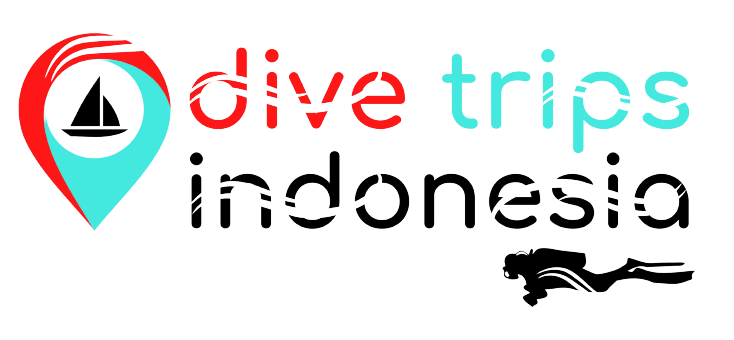
PT Dive Trips Indonesia
Scuba diving trips & luxury liveaboard indonesia, embark on a journey beneath the waves.
Indonesia, a sprawling archipelago blessed with an abundance of natural beauty, stands as a beacon for avid divers worldwide. Its crystalline waters teem with vibrant marine life, offering a mesmerizing playground for enthusiasts seeking unforgettable underwater experiences.
Exploring Indonesia's Diverse Dive Sites
From the majestic waters of Raja Ampat to the remote allure of Komodo National Park, Indonesia boasts a plethora of dive sites that cater to all levels of expertise. Dive into the kaleidoscopic coral gardens of Bunaken, where an underwater tapestry of colors awaits, or venture into the depths of Wakatobi, renowned for its pristine reefs and dazzling biodiversity.
Encountering Breathtaking Marine Life
Prepare to be awestruck as you encounter an array of marine creatures in their natural habitat. Glide alongside graceful manta rays, marvel at the intricate dance of pygmy seahorses, and witness the gentle giants of the ocean, the majestic whale sharks. Indonesia’s waters are alive with a symphony of underwater wonders, promising encounters that will leave a lasting impression.
The Thrill of Wreck Diving
For those craving a dash of adventure, Indonesia offers an exhilarating array of wreck diving opportunities. Explore sunken relics steeped in history, such as the iconic USS Liberty in Bali or the haunting remnants of Japanese WWII ships in the waters of Raja Ampat. Each wreck tells a story, waiting to be unraveled by intrepid divers eager to delve into the mysteries of the deep.
Preserving Indonesia's Marine Ecosystem
As stewards of the ocean, it is imperative to prioritize conservation efforts to safeguard Indonesia’s precious marine ecosystem. Responsible diving practices, such as reef-friendly sunscreen usage and proper buoyancy control, play a pivotal role in preserving the health and vitality of coral reefs. Additionally, supporting local marine conservation initiatives and advocating for sustainable tourism practices are crucial steps towards ensuring the long-term sustainability of Indonesia’s underwater treasures.
Planning Your Dive Adventure
Whether you’re a seasoned diver or a novice explorer, Indonesia offers an unparalleled playground for underwater enthusiasts. With a myriad of dive resorts catering to every need, planning your dream dive trip has never been easier. From luxurious liveaboards to eco-conscious dive resorts, there’s something for everyone in this aquatic paradise.
Dive Trips Indonesia
Indonesia beckons adventurers from across the globe to immerse themselves in its enchanting underwater realm. With its breathtaking dive sites, diverse marine life, and commitment to conservation, Indonesia stands as a premier destination for unforgettable dive experiences. So, pack your gear, dive into the unknown, and discover the magic that awaits beneath the surface of Indonesia’s azure waters.
Scuba Diving Packages
Scuba diving trip, scuba diving course, komodo tour packages 3 days 2 nights, komodo liveaboard, private charter, deluxe liveaboard, luxury liveaboard, luxury yacht, raja ampat liveaboard, trip gallery.
We are a company in the tourism sector, which serves the largest scuba diving activities, scuba diving courses, and boat rentals in Indonesia.
We have served many customers from various countries, we can help every tourist need, talk to our team about your needs.
PT. DIVE TRIPS INDONESIA
Jl. Dewi Sartika No. 312, Rt.9/Rw.4. Cawang, Kec. Kramat Jati, Kota Jakarta Timur, Daerah Khusus IbuKota Jakarta 13630
- [email protected]
- +62 821 5161 1193
© Copyright 2022 Dive Trips Indonesia. All right reserved.
- Skip to main content
- Skip to primary sidebar
- Skip to footer

DIVE Magazine
Scuba Diving Luxury Travel Magazine

Ten best places to dive in Indonesia
25 November 2021 6 minutes
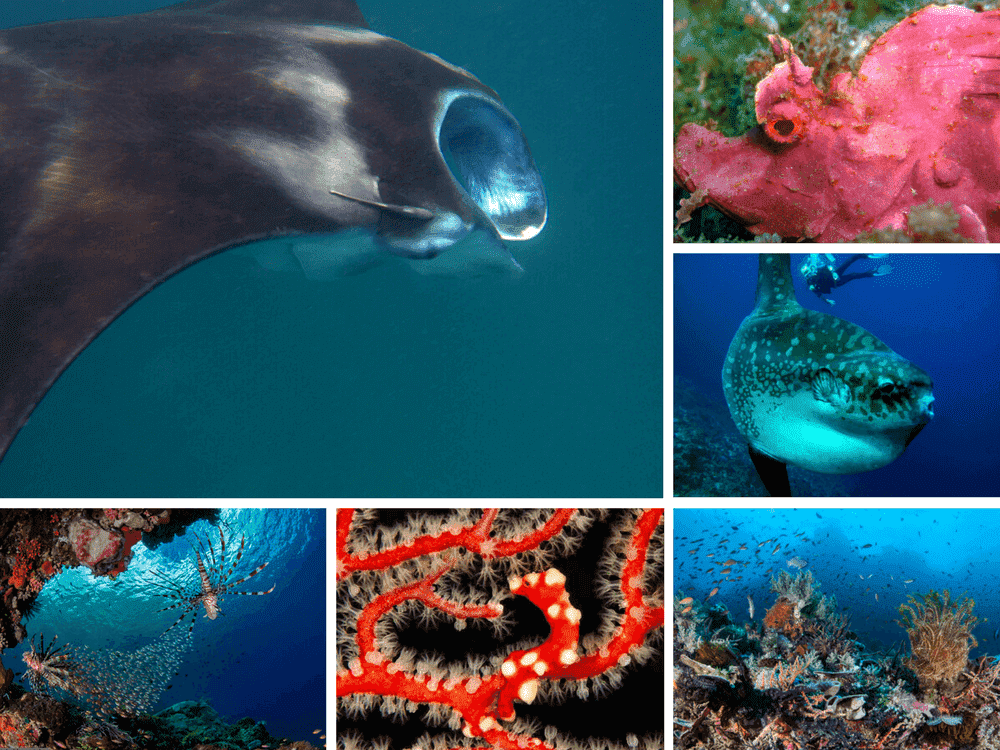
Indonesia regularly tops DIVE’s annual travel awards – here’s our selection of Indonesia’s best diving spots from a vast archipelago which is made up of more than 17,500 islands that stretch over an area more than 5,000km in length

1) Pulau Weh, Sumatra; 2) Sangalaki, East Kalimantan; 3) Bunaken Marine Park, Sulawesi; 4) Lembeh Strait, Sulawesi; 5) Raja Ampat, West Papua; 6) Ambon, Maluku; 7) Wakatobi, Sulawesi; 8) Alor – Lesser Sunda Islands; 9) Komodo National Park, Flores and 10) Lembongan, Bali
1) Pulau Weh – Sumatra
2) sangalaki – east kalimantan, 3) bunaken marine park – north sulawesi, 4) lembeh – north sulawesi, 5) raja ampat – west papua, 6) ambon bay – maluku, 7) wakatobi – southern sulawesi, 8) alor – lesser sunda islands, 9) komodo national park – flores, 10) lembongan – bali.

This volcanic island at the northern-most point of the Indonesian archipelago at the tip of the vast island of Sumatra is where the Indian Ocean meets the Pacific. It has a wonderful range of diving with more sites regularly being discovered and while it is not as well known and the infrastructure is not as developed as some areas, it has a wild, untouched vibe. A bit like Bunaken 30 years ago. Best to visit during the April to November dry season.
This is one of the world’s top spots to dive with mantas. Visibility can be a problem during the rainy season (November to March), but for the rest of the year, you can immerse yourself in manta madness in the shallow waters around this isolated reef off the east coast of Borneo. Full moons are best and you can be surrounded by more than 20 of these wonderful fish feeding near the surface and using a number of cleaning stations. Also worth checking out the freshwater jellyfish lakes on nearby islands for another unique immersive experience.
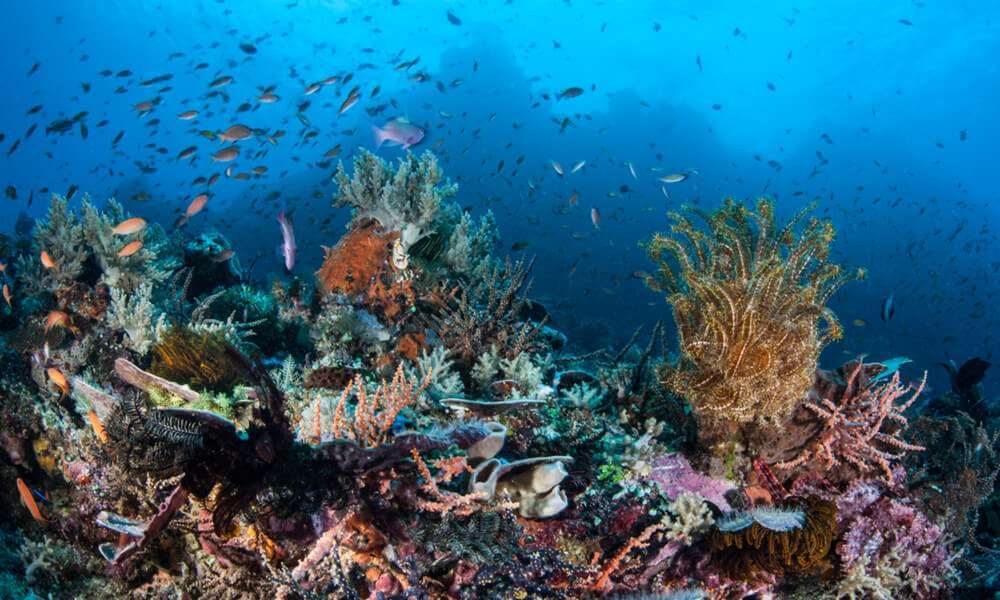
The islands of Bunaken and Siladen are off the city of Manado on the northern tip of Sulawesi. They are surrounded by high-energy walls and rolling coral gardens which have some of the most exhilarating drift dives through forests of soft and hard coral and crowds of reef fish. Turtles abound and sharks, eagle rays and other pelagic predators all revel in this protected zone. You can stay in the resorts surrounding Manado and enjoy a 45-minute commute out to the reefs, but far better is to stay in the small but wonderful dive hotels on either Siladen or Bunaken.

Two hours’ drive and a short boat ride from the North Sulawesi capital Manado is the island of Lembeh, and the associated straits between island and mainland are renowned for their amazing muck diving. A large percentage of the critters you will find there will be unique to the region and, in fact, you may not realise that some of them are actually living creatures until the guide points them out. Most of the dive sites are only a short boat ride from your resort of choice and slack currents, shallow water and the colourful sea life contrasted against the black sand make Lembeh a macro photographer’s paradise. Diving is year round, but peak time for critters is probably July and August.
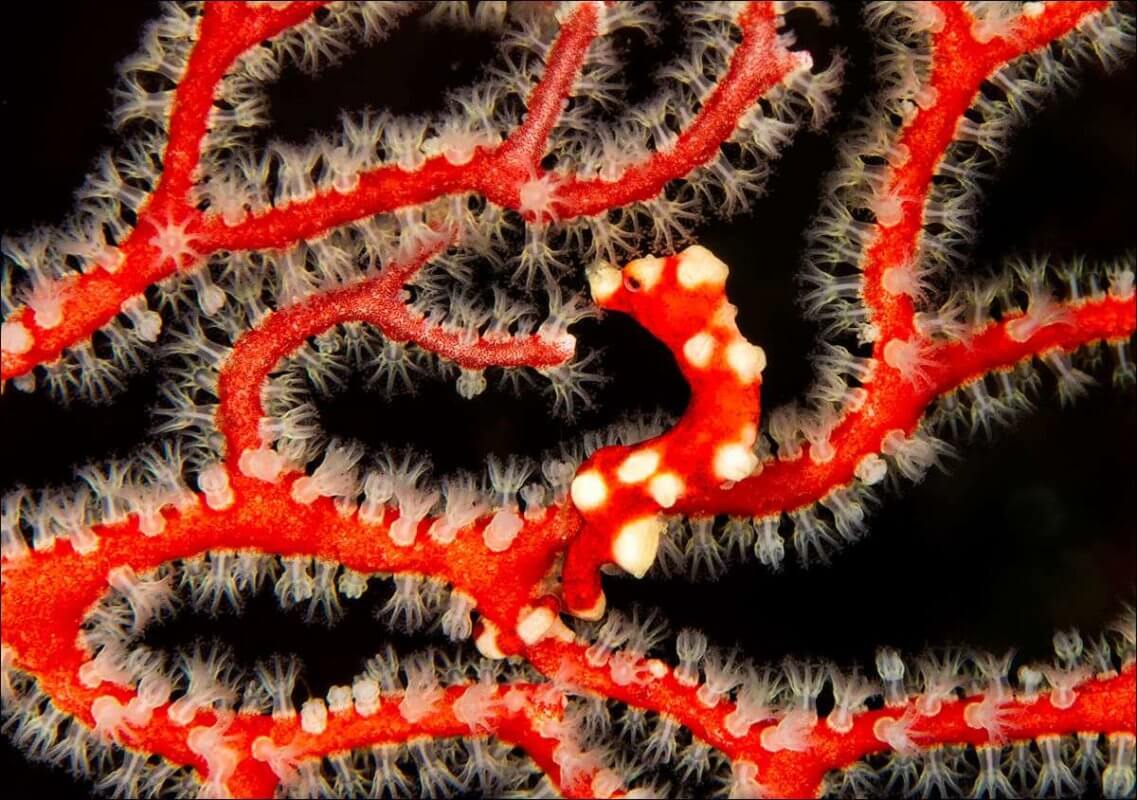
Raja Ampat – ‘the four kings’ is an archipelago of more than 1,500 small islands of which Misool, Salawati, Batanta and Waigeo are the largest. According to some marine biologists, Raja Ampat may be the most biodiverse marine habitat in the world with over 1,500 species of fish and 550 types of coral – around 75 per cent of all known species. From sharks and mantas, dugongs and leatherback turtles to the minuscule pygmy seahorse and fish in some of the largest schools found in the oceans, Raja Ampat has to be top of the list for diving in Indonesia – if not the world.

Ambon Bay is fast becoming one of muck diving top destinations with underwater photographers ticking off blue-ringed octopus, wonderpus, flamboyant cuttlefish, rhinopias and mating mandarin fish. There are some reasonable reefs and walls to the eastern side of this long protected bay and the Duke of Sparta a short boat ride out is a world-class wreck that has hardly been explored.
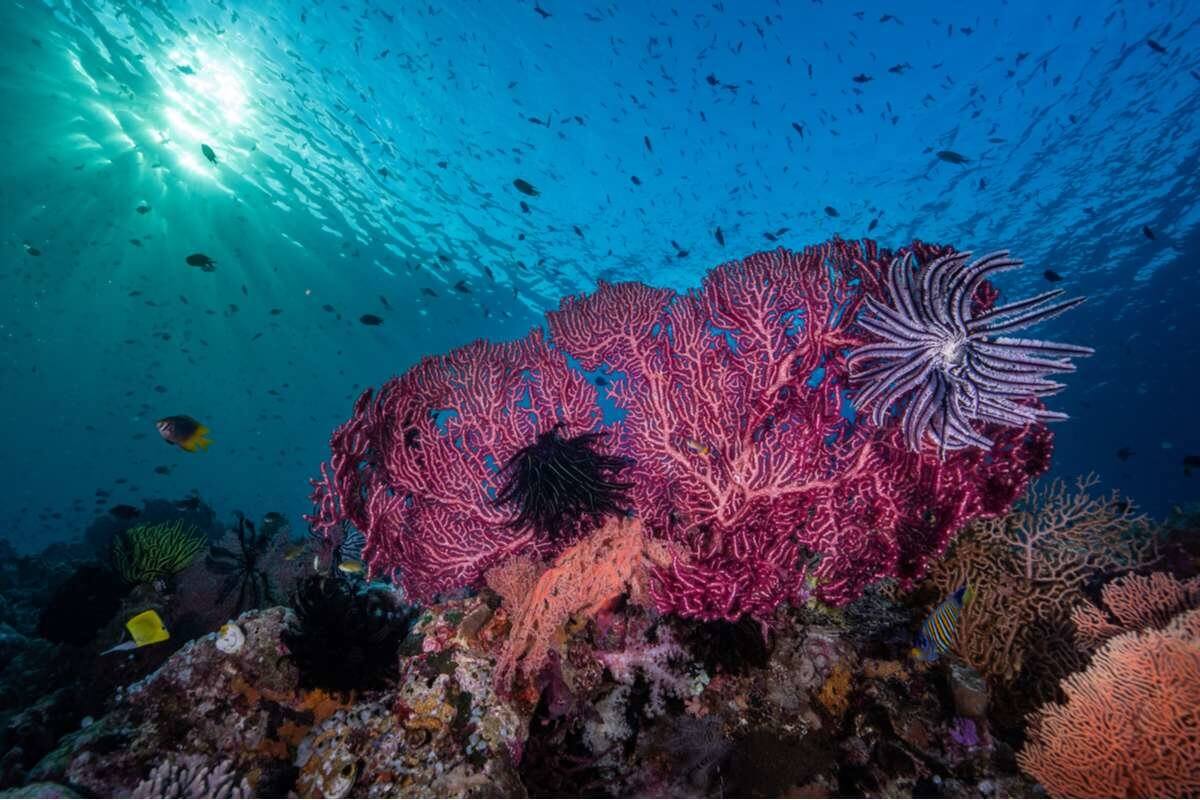
Wakatobi is an extremely isolated dive resort in the heart of the Tukangbesi archipelago off the southern tip of Sulawesi. You fly in on a light aircraft and can explore some of the most pristine reefs on the planet from the luxury of a purpose-built dive hotel. The house reef is a world-class dive in its own rights and there are nearly 40 other stunning sites to explore. This is an underwater photographer’s paradise with some of the most vibrant and biodiverse reefs on the planet. Dynamite fishing and other dubious practices had taken their toll over the years and the amount of large pelagic life might not compare with other areas but growing conservation awareness is improving that and the sheer quality and beauty of the reefs more than compensates.
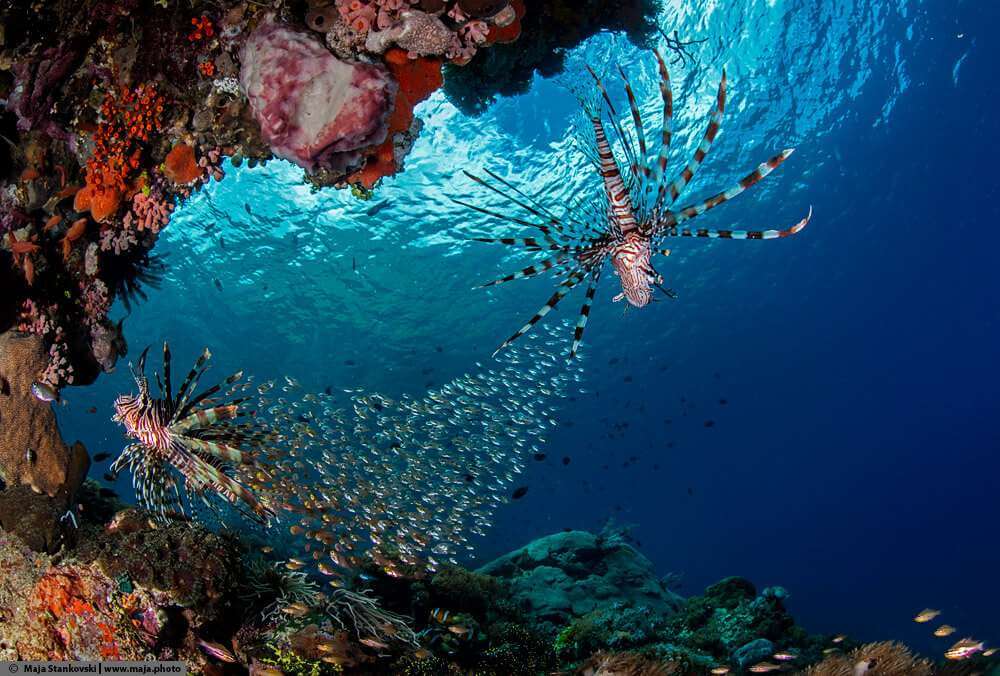
The island of Alor is towards the remote eastern end of the Indonesian islands. Best dived from a liveaboard for that reason, the location remains mostly unspoilt by human activity and offers a wide diversity of wildlife and diving. Schools of hammerheads are frequently sighted, as are pilot whales and dolphins. Currents on the reef can be strong and so some experience is required, but there are sheltered spots which, due to the volcanic nature of the island and the resulting black sandy sea bottom makes Alor an excellent place for both muck-diving with macro lenses and wide-angle shots of the bigger stuff. Diving is year-round but the best is from September to November when the currents are at their strongest.
Komodo National Park, designated a World Heritage Site in 1991 by UNESCO, is most famous for the Komodo Dragon, the world’s largest lizard and endemic resident of the island, but the marine diversity, like most of Indonesia, is also spectacular. The park includes the lesser-known Padar and Rinca and 26 smaller islands, and affords divers the opportunity to explore different marine environments. The northern regions of the park, filled with bright coral and cruising reef sharks, are generally warmer and clearer than the south, where cold upwellings drive nutrients towards the surface leading to a decrease in visibility but an increase in mantas!

Nusa Lembongan is one of three islands approximately 30 minutes by speedboat from Sanur harbour in Bali. Most of the diving actually takes place around the larger island of Nusa Penida, famous for sightings of the southern mola at Crystal Bay and the resident population of reef manta at feeding and cleaning stations along the southern coastline. The islands are prone to large swell and big currents, although by and large they are fairly easy to manage – even for novices – through good diving practice and sound dive centre planning. Although the islands can be dived on a day trip from Bali, it’s much better to make the journey to Lembongan to take advantage of the earlier access to the dive sites. Aside from the manta and occasional visits from other large pelagic, there is plenty of macro for the keen-eyed photographer, it’s just not always easy to stay in the same place long enough to photograph them!
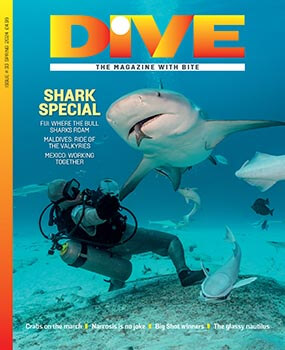
FOLLOW DIVE
Want to access DIVE on your tablet or smartphone? Press the Apple, Android or PC/Mac image below to download the app for your device

More from DIVE
- Advertise with DIVE Magazine
- Terms & Conditions
- Privacy Policy

"No matter how much you travel, if you haven’t dived, you can't truly say you've seen the world. Seventy percent of the Earth is covered by water."
Photo: RossiBali
Trident Dive Indonesia
An eco-conscious scuba diving center..
🌊 Welcome to our locally-owned Dive Center nestled in the heart of scuba diving paradise, Bali, Indonesia! 🌴
🤿 Ready to embark on an underwater adventure like no other? Look no further! Whether you're a beginner or a seasoned diver, our Dive Center in Amed offers a plethora of unforgettable experiences.
📜 PADI Dive Courses & Specialties : Dive deep into the world of scuba diving with our PADI-certified courses and specialty programs, including Deep Dive, Night Dive, Sidemount, and Wreck Dive.
🐠 Fun Dives : Explore the mesmerizing underwater world of Amed, Tulamben, Nusa Penida, Menjangan/Pemuteran, Candidasa, and Padang Bai with our experienced guides.
💡 Discover Scuba Dive : New to scuba diving? No problem! Dip your toes into the exhilarating world beneath the waves with our beginner-friendly Discover Scuba Dive program.
🔎 Hunt for Macro Photography : Unleash your inner photographer as you hunt for the tiniest treasures and capture breathtaking macro shots amidst Bali's diverse marine life.
🪸 Coral Transplantation Program : Join us in preserving the beauty of Bali's coral reefs through our Coral Transplantation Program. Make a difference while exploring the underwater wonders.
🗺️ Custom Dive Trips : Can't decide where to dive? Let us customize a dive trip tailored to your preferences, whether it's exploring the renowned sites of Nusa Penida or venturing off the beaten path.
🚨 Special Prices & Discounts : Enjoy special prices on dives and PADI courses, along with exclusive group and family discounts. Dive into savings while experiencing the best of scuba diving in Bali.
✨ Group/Family Discounts : Gather your loved ones and embark on an unforgettable underwater journey together. With our group and family discounts, creating memories has never been more affordable.
Don't miss out on the opportunity to explore the enchanting world of scuba diving in Bali. Contact us today to book your dive adventure and immerse yourself in the wonders of Nusa Penida, Amed, Tulamben, and beyond! 🐟🌊🌺
We are now also featured in www.readybali.com
Courses. Trips. Packages.
Why Choose Us?
Your ultimate dive adventure partner, safety is our anchor.
Your safety is non-negotiable for us. We go above and beyond to ensure that every dive is not just thrilling but also secure .
Eco-Warriors of the Deep
Beyond being divers, we humbly embrace the role of guardians for the ocean. Our steadfast commitment to protecting the marine realm guides our every exploration.
Dive into Unadulterated Fun!
Adventure should be exhilarating, we want your experience to be enjoyable. Explore our awe-inspiring dive sites for a truly memorable journey.
PADI Dive Courses
Elevate your scuba expertise through our range of padi dive courses. whether you're aspiring to become a certified diver or looking to enhance your skills, our advanced diving courses offer the perfect progression for your journey..
Description
If you are new to scuba diving or are not a certified diver, then this is the option for you. Before gearing up, your dive master will provide you with a briefing on basic dive techniques such as mask clearing, BCD and regulator use, hand signals, and safety principles. If it’s your first time diving or if you would simply like to refresh your skills, you will also get a chance to practice these techniques in a pool or water with pool-like conditions before your dive. Each beginner diver will be accompanied by their own dive master during the entire dive. Since your first dive will be mainly focused on getting you comfortable using the gear underwater, we highly recommend doing a second dive so that you can fully appreciate and enjoy the unique experience of diving. (This is also known as the PADI Discover Scuba Diving Program).
Free Photos & Videos
Includes free photos and videos, taken by your dive guide, to help you remember your dives.
Requirements
No prior diving experience is required; however divers must be at least 12 years old, have adequate swimming skills, and be in good physical health.
2-6 Hours, depending on number of dives
Price: IDR 1.600.000,- (~ ca. USD 102 or ~ ca. SAR 383)
The PADI Open Water Course is the most popular introductory certification for scuba divers. Upon completing this course, you will receive your PADI Open Water Diver Certification and be able to dive to a maximum depth of 18 meters/60 feet. During the course, you will learn how to use your scuba equipment and perform the diving skills necessary to ensuring that your dives are safe, fun, and rewarding. The Open Water Course consists of the following:
Knowledge Development: Through a combination of reading, short exercises, quizzes, and instructor-led training, you’ll learn the basic principles, concepts, and terms you need to know to safely enjoy scuba diving.
Confined Open Water Dive: Your first dive will take place in the pool and your instructor will help you put the skills you’ve learned about into practice.
4 Open Water Dives: You’ll head out to some of Tulamben’s best dive sites to review and perfect the skills you’ve learned. These dives will also give you a chance to explore the sea and discover Tulamben’s fascinating marine environment.
Final Exam: In order to successfully complete the course and receive your Open Water Certification, students must pass a written Final Exam.
Includes free photos and videos to help you remember your dives.
No prior diving experience is required to participate in this course; however students must have adequate swimming skills, be in good physical health, and be at least 15 years old to receive their Open Water Diver Certification or 12-15 years old to receive their Junior Open Water Diver Certification.
Price: IDR 6.100.000,- (~ ca. USD 385 or ~ ca. SAR 1445)
Build upon the basic scuba diving knowledge you learned in your PADI Open Water Diver Course. Upon completing this course, you will receive your PADI Advanced Open Water Diver Certification and be able to dive to a maximum depth of 30 meters/100 feet. During this course, you’ll receive an introduction to deep diving, learn about more advanced underwater navigation techniques, and get to try out a few more specialized underwater activities. The Advanced Open Water Course consists of the following:
Knowledge Development: Through a combination of reading, short exercises, quizzes, and instructor-led training, you’ll learn more specialized skills and techniques related to each of the Adventure Dives you select. Five Adventure Dives: All students are required to complete one Deep Dive and one Underwater Navigation Dive.
Free Photos & Videos Includes free photos and videos to help you remember your dives.
Requirements To enroll in this course, students must already have their PADI Open Water Diver Certification, be in good physical health, and be at least 15 years old to receive their Advanced Open Water Diver Certification or 12-15 years old to receive their Junior Advanced Open Water Diver Certification.
Price: IDR 6.300.000,- (~ ca. USD 398 or ~ ca. SAR 1,493)
This course will prepare you to prevent and manage different types of emergencies that can occur while diving. It is one of the more challenging courses, but also one of the most rewarding. You’ll walk away not only more prepared to keep your buddy safe, but also yourself! In addition to becoming more confident at managing crisis situations, upon completing this course you will also receive your PADI Rescue Diver Certification. The PADI Rescue Diver Course consists of the following:
Knowledge Development: Through a combination of reading, short exercises, quizzes, and instructor-led training, you’ll learn how to think like a rescue diver and become familiar with the techniques you may need to use when responding to emergencies. Topics include:
-Self rescue
-Recognizing and managing stress in other divers
-Emergency management and equipment
-Rescuing panicked divers
-Rescuing unresponsive divers
Rescue Dives: Through a series of rescue exercises in the pool and the sea, you’ll get the opportunity to put your Rescue Diver knowledge and skills into practice.
Final Exam: In order to successfully complete the course and receive your PADI Rescue Diver Certification, students must pass a written Final Exam.
To enroll in this course, students must already have their PADI Advanced Open Water Diver Certification, have completed an Emergency First Response (EFR) training, and be in good physical health.
Length 3 days Price: IDR 9.000.000,- (~ ca. USD 600 or ~ ca. SAR 2,251)
Description: The Sidemount Diving Specialty is an advanced certification course tailored for divers interested in exploring underwater cave systems. It equips divers with specialized knowledge and skills necessary for safe and responsible cave diving. Cave environments present unique challenges, including restricted spaces, potential entanglement hazards, and limited visibility, making proper training essential for those wishing to venture into these fascinating underwater realms.
Knowledge Development: This specialty course covers a wide range of topics essential for safe cave diving, including cave geology, buoyancy control, guideline usage, communication techniques, emergency procedures, and dive planning. Divers learn about the formation and structure of underwater caves, how to navigate in confined spaces using guidelines, and how to manage potential risks associated with cave diving. They also study specialized equipment such as sidemount harness systems, reel systems, underwater lights, and redundant gas supplies.
Requirements: To enroll in a Sidemount Diving Specialty course, divers must hold an Advanced Open Water Diver certification or equivalent, as well as a Nitrox Diver certification. Additionally, divers must have a minimum number of logged dives, typically ranging from 25 to 50 dives. Prior experience with navigation and buoyancy control is also highly recommended to ensure a solid foundation for cave diving training.
Length: The duration of a Sidemount Diving Specialty course typically spans several days to a week, depending on the level of experience of the divers. The course includes classroom sessions to cover theory and safety procedures specific to cave diving, confined water or pool sessions to practice essential skills such as buoyancy control and guideline usage, and multiple open water dives in actual cave environments under the guidance of experienced cave diving instructors. Upon successful completion of the course, divers receive a certification card indicating their qualification to conduct cave dives within the limits of their training and experience. Price: IDR 10.000.000,- (~ ca. USD667 or ~ ca. SAR 2.502)
Deep Dive Specialty for scuba divers is an advanced certification course designed to equip divers with the skills and knowledge necessary to safely explore deeper underwater environments beyond the typical recreational diving limits. This specialty allows divers to descend to depths of up to 40 meters (130 feet) or more, opening up a whole new world of underwater exploration and adventure.
The Deep Dive Specialty focuses on teaching divers the techniques and procedures required for safe deep diving. It covers topics such as gas management, nitrogen narcosis, decompression sickness, dive planning, equipment considerations, and emergency procedures specific to deep-diving environments. Divers learn how to effectively manage their air supply, monitor their depth and bottom time, and recognize the signs of nitrogen narcosis and other potential hazards associated with deeper dives.
Knowledge Development
The course typically includes a combination of classroom sessions, practical exercises, and open water dives. Divers learn about the physiological effects of increased pressure at depth, how to calculate and manage gas consumption and decompression obligations, and how to use specialized equipment such as dive computers and redundant air supplies. They also study dive planning techniques, including how to assess potential risks and create contingency plans for emergencies.
To enroll in a Deep Dive Specialty course, divers must hold at least an Advance Open Water certification or equivalent from a recognized diving agency such as PADI or SSI. Typically would require divers to have completed a certain number of logged dives before enrollment, typically around 20-30 dives.
2 days - include 4 open water dives
Price: IDR 5.000.000,- (~ ca. USD320 or ~ ca. SAR 1,200)
The PADI Divemaster certification is an intermediate level in the PADI system and serves as a crucial step for those seeking to become professional divers . It marks the beginning of a journey towards leadership in the world of scuba diving.
Program Highlights:
Leadership Development: Gain skills to supervise and assist with both training and non-training dive activities.
Knowledge Enhancement: Deepen your understanding of dive theory, dive physics, physiology, equipment, and decompression theory.
Skill Refinement: Perfect your scuba diving skills to demonstration-quality levels.
Supervised Practical Application: Apply your knowledge and skills through practical training exercises and real-world scenarios.
Mentorship: Learn to assist with PADI courses under the guidance of a PADI Instructor.
Professional Responsibility: Understand the ethical and professional responsibilities of a Divemaster.
Reasons to take PADI Divemaster:
Leadership Skills: Develop the skills to lead and supervise a variety of diving activities, fostering confidence in your diving capabilities.
Career Advancement: A crucial step for those aspiring to pursue a career in scuba diving instruction or related fields.
Deepened Knowledge: Enhance your understanding of dive theory, making you a more knowledgeable and responsible diver.
Diverse Opportunities: Opens doors to various opportunities within the diving industry, from guiding certified divers to assisting with training programs.
Personal Growth: Challenges you to reach higher levels of proficiency, boosting self-confidence and competence in the underwater environment.
Contribution to Dive Community: Become an integral part of the dive community by supporting and guiding fellow divers.
Taking the PADI Divemaster course is not just a certification; it's a transformative step towards becoming a skilled and responsible diving professional.
Price: IDR 20.000.000,- (~ ca. USD 1,280 or ~ ca. SAR 4,800)
Let's Start the Journey!
Explore indonesia's majestic dive spots at depths: dive into adventure with our unforgettable trips.
Prepare for an aquatic adventure of a lifetime with our extraordinary diving trips in Indonesia! As a leading diving center, we're thrilled to invite you to discover the unparalleled beauty and diversity of Indonesia's underwater landscapes.
🐙 Indonesia's Underwater Wonderland: Immerse yourself in the mesmerizing beauty of Indonesia's underwater world, where vibrant coral reefs, mysterious wrecks, and enchanting marine life await your exploration. From the pristine waters of Raja Ampat to the legendary dive sites of Komodo National Park, each destination offers a unique and unforgettable diving experience.
🌅 Tailored Adventures for Every Diver: Whether you're a novice diver or a seasoned underwater explorer, our diving trips are meticulously crafted to cater to divers of all skill levels. With personalized guidance from our expert instructors and dive masters, you'll feel confident and empowered to dive into the depths of Indonesia's marine wonders.
🚤 Seamless and Stress-Free: Sit back, relax, and let us handle the logistics. Our diving trips include seamless transportation, top-of-the-line diving equipment, and carefully curated itineraries designed to optimize your time beneath the waves. Focus on the thrill of diving while we take care of the rest.
🏝️ Beyond the Dive: Dive deeper into the magic of Indonesia with our immersive cultural experiences and eco-friendly adventures. Explore lush tropical islands, encounter exotic wildlife, and connect with local communities as you uncover the rich tapestry of Indonesia's natural and cultural heritage.
👨👩👧👦 Create Memories to Treasure: Whether you're traveling solo, with family, or with a group of friends, our diving trips offer the perfect opportunity to forge unforgettable memories and lifelong friendships. Join our community of fellow ocean enthusiasts and share in the joy of exploring Indonesia's underwater wonders together.
Ready to embark on the diving adventure of a lifetime? Book your diving trip with us today and prepare to be awed by the breathtaking beauty and endless wonders of Indonesia's underwater realms. Your next diving escapade awaits! 🌊
IF the trip you're looking for is not here, let us know, we can customize the trip for you.
Amed and Tulamben are two popular diving destinations located on the northeastern coast of Bali, Indonesia. Here's a summary of what each area has to offer for diving:
- Coral Reefs : Amed is famous for its vibrant coral reefs, which are teeming with a diverse array of marine life. Divers can explore healthy coral gardens and encounter colorful reef fish, sea turtles, and various invertebrates.
- Wreck Diving : One of the highlights of diving in Amed is the USAT Liberty Shipwreck, which lies just off the coast of Tulamben. This World War II-era wreck is covered in corals and has become a haven for marine life, including schools of fish, moray eels, and nudibranchs.
- Macro Life : Amed is also known for its excellent macro diving opportunities. Divers can find an abundance of small critters such as pygmy seahorses, frogfish, and ghost pipefish hiding among the coral reefs and sandy bottom.
- Relaxed Atmosphere : Amed offers a more laid-back and tranquil diving experience compared to some other dive destinations in Bali. The area is less developed and has a quieter atmosphere, making it perfect for those seeking a peaceful dive getaway.
- USAT Liberty Shipwreck : Tulamben is perhaps best known for the USAT Liberty Shipwreck, which is one of the most famous dive sites in Bali. This sunken ship lies just a short distance from the shore and is covered in a stunning array of corals and marine life.
- Night Diving : Tulamben offers excellent night diving opportunities, allowing divers to experience the underwater world in a whole new light. Night dives around the shipwreck reveal a different side of the marine ecosystem, with nocturnal creatures such as crabs, shrimps, and octopuses coming out to hunt.
- Macro Photography : Similar to Amed, Tulamben is also known for its fantastic macro diving. Divers can spend hours exploring the reef and searching for tiny critters to photograph, making it a paradise for underwater photographers.
- Easy Access : The USAT Liberty Shipwreck is easily accessible from the shore, making it suitable for divers of all experience levels. There are also other dive sites nearby, including Coral Garden and Drop-Off, offering a variety of underwater landscapes to explore.
- Resorts and Services : Tulamben has a range of dive resorts, guesthouses, and dive centers catering to divers' needs. Whether you're looking for budget-friendly accommodations or luxury resorts, there are plenty of options available in Tulamben.
Package includes:
- 3 x Dive (1 day)
- Free Transport from Hotel in Amed or Tulamben
- Free snacks
- Free drinks (coffee, tea, and mineral water)
Nusa Penida is a small island located southeast of Bali, Indonesia. It's part of the Nusa Islands, along with Nusa Lembongan and Nusa Ceningan. Here's a summary of what Nusa Penida has to offer for diving:
- Marine Biodiversity : Nusa Penida is renowned for its rich marine biodiversity. Divers can encounter a wide variety of marine life, including manta rays, reef sharks, colorful coral reefs, turtles, and a plethora of tropical fish species.
- Manta Point : One of the most famous dive sites around Nusa Penida is Manta Point, where divers have the opportunity to swim with majestic manta rays. These graceful creatures are often spotted gliding through the crystal-clear waters, offering a thrilling and unforgettable experience.
- Crystal Bay : Another popular dive site, Crystal Bay, is known for its stunning visibility and vibrant coral reefs. Divers can explore the underwater landscape teeming with marine life, including reef sharks, giant trevallies, and various species of reef fish.
- Giant Oceanic Sunfish (Mola Mola) : Nusa Penida is one of the few places in the world where divers can encounter the elusive Mola Mola, or oceanic sunfish. These massive fish, known for their peculiar appearance and unique behavior, are a highlight for many divers visiting the area.
- Challenging Conditions : While Nusa Penida offers incredible diving opportunities, it's important to note that some dive sites can have strong currents and challenging conditions. Divers should have appropriate experience and skills to safely navigate these waters.
- Free Transport from Hotel in Sanur or Seminyak
- Free lunch 1 x
Price above is for a group/joined trip (where we join other dive center as well).
Price for a private trip (1 person): IDR. 14.000.000
Menjangan Island is located off the northwest coast of Bali, within the boundaries of the West Bali National Park. Here's a summary of what Menjangan National Park has to offer for diving:
- Marine Biodiversity: Menjangan Island is renowned for its pristine coral reefs and diverse marine life. The underwater ecosystem here is home to a wide variety of coral species, colorful reef fish, sea turtles, and other marine creatures.
- Wall Diving: One of the highlights of diving at Menjangan Island is the opportunity for wall diving. The island's underwater terrain features dramatic drop-offs and vertical walls covered in vibrant corals and sponges, creating a stunning backdrop for diving.
- Crystal Clear Waters: The visibility at Menjangan Island is often excellent, with crystal clear waters providing fantastic views of the underwater scenery. This makes it an ideal destination for underwater photography and videography.
- Macro Life: In addition to the impressive coral formations and larger marine species, Menjangan Island is also known for its macro life. Divers can spot various critters such as nudibranchs, shrimp, and crabs hiding among the coral reefs and rocky outcrops.
- Conservation Area : Menjangan Island is part of the West Bali National Park, which is a protected area aimed at preserving the island's natural beauty and biodiversity. Divers visiting Menjangan National Park can contribute to conservation efforts by adhering to responsible diving practices and supporting sustainable tourism initiatives.
- Accessibility: Menjangan Island is easily accessible from the mainland, with dive operators offering boat trips from various locations in Bali, including Pemuteran and Lovina. The journey to Menjangan Island typically takes around 30-45 minutes by boat, making it a convenient day trip destination for divers staying in the region.
- Dive Sites: Some of the popular dive sites around Menjangan Island include Eel Garden, Anker Wreck, and Pos II. Each of these sites offers unique underwater landscapes and marine encounters, ensuring a memorable diving experience for visitors.
- Free Transport from Hotel in Menjangan or Pemuteran
Price above is for a minimum of 2 pax.
For a private trip (1 pax): IDR 6.300.000 (ca. USD 412)
Let's Choose Your Package!
Discover our exciting dive packages today.
Nusa Penida (Mola & Manta Hunt)
Price: IDR 3.200.000,-
(~ ca. USD 213 or ~ ca. SAR 799)
- Hotel Transport
- Plane Ticket
- Airport Transfer
Tulamben - Amed 3 days (9 dives)
- Price: IDR 5.250.000,-
- (~ ca. USD 350 or ~ ca. SAR 1.312)
Tulamben - Amed 5 days (15 dives)
- Price: IDR 12.000.000,-
- (~ ca. USD 771 or ~ ca. SAR 2889)
Tulamben - Macro Hunt 3 Days (9 dives) + Nitrox (Free)
- Transport to dive sites
- Diving equipments
- Airport transfer
- Plane Tickets
Shore Entry:
- 2X dives: Price: IDR 1.250.000,- (~ ca. USD 79 or ~ ca. SAR 574)
- 3X dives: Price: IDR 1.800.000,- (~ ca. USD 114 or ~ ca. SAR 428)
- 5X dives: Price: IDR 2.750.000,- (~ ca. USD 174 or ~ ca. SAR 653)
Boat Entry:
- 2X dives: Price: IDR 1.750.000,- (~ ca. USD 110 or ~ ca. SAR 413)
- 3X dives: Price: IDR 2.300.000,- (~ ca. USD 145 or ~ ca. SAR 544)
- 5X dives: Price: IDR 9.950.000,- (~ ca. USD 663 or ~ ca. SAR 2.487)
- Diving Equipments
Testimonials
What people say, at trident, we take pride in providing exceptional service that exceeds expectations. don't just take our word for it – hear what our satisfied customers have to say about their experiences diving with us. from our knowledgeable instructors to our top-notch equipment, we ensure every dive is safe, enjoyable, and unforgettable. read on to learn why divers trust us for quality service and leave with smiles of satisfaction..
Was a great experience with Trident. Would highly reccomend if you are trying out diving for the first time. Me and my friend had no knowladge at all but the guys helped us a lot and encourage us to complete the open water course. The instructor are proffesional, their explanations are really good and they make you feel comfortable.

We booked a package of 10 dives over 5 days with Made and the Trident team. They geared us with top notch equipment and showed great expertise both in & out of the water. Exceptional service and friendliness, one of the best diving experiences we had. My father dove in 15 countries with a total of over 200 dives. I myself am an advanced diver with close to 30 dives and my sister had just finished her open water certificate. They adjusted the dives to each of our skill levels and took care of us individually while enabling us to dive in a group.

Thoroughly enjoyed my Advanced Open Water diving course with Trident Dive Indonesia. The instructors were able to guide well and provided very clear instructions on the dives. The well-maintained equipment and safety measures further added to the overall professionalism of the course. Highly recommend!

We booked our PADI course and diving stay and had MADE as our instructor through GS-diving in Singapore. It was the best decision ever to do our course in BALI instead due to convenience and flexibility. Our flight was delayed when we arrived in BALI, but we managed to complete the course within the time frame. It was an enjoyable and great learning experience with MADE. He has made the entire course so easy to understand. He was patient but yet firm that we all benefited from and completed our PADI course. I strongly recommend that anyone who likes to do diving or get certified, BALI, and Trident Dive would be the 1st and best place to consider. Thank you for making this an unforgettable experience for us, MADE. 🥰🥳

Best experiences ever. Understanding, Flexible and great service! Friendly, knowledgeable and willing to share their knowledge.

Located where everything is accessible. In terms of dive experience, they are awesome. Flexible in the types of dive sites you wish to explore. Facilities are kept in good condition. Would recommend ☺️

Truly one of the best dive centres there are in Bali. Very experienced instructor, that’s very patient, prioritises their students development above anything else. Takes the time to explain, ensure the students understand and are safe underwater. They have a wonderful support team that goes above and beyond in ensuring customer’s satisfaction, and always ready to assist you with all your needs and requests. They also provide complimentary photos and videos during your course to keep as memories and also used as a learning aid! 11/10 would recommend

Took Open Water and Advanced Open Water certification here. Super clean and neat dive center. Excellent service and nice staffs. It was a great experience diving with Trident Dive!

Mantap Jiwa Trident Dive Indonesia. I had the best experience diving with them even tho I couldn’t complete the course due to unforeseen circumstances. Going for the course with them, you will be ensure that you will received top notch service. From the gear rental, to the lesson package, facilities and etc. It’s all properly planned. You do not need to worry for any hiccups as their team are always one step ahead. Once I’m better, I will surely come back and dive with Trident. See you in a few months time ❤️❤️❤️

The cutest dive center! The staff is so friendly and went out of their way to make sure we had the best time. Diving the liberty wreck was amazing! They showed us all the cool spots. 100% recommend to dive with Trident Divers Indonesia in Amed!! ❤️❤️❤️

Dive Deeper: Explore Our Gallery
Discover the wonders of the deep through our curated photo gallery. dive into a world of vibrant marine life and breathtaking underwater landscapes captured by fellow adventurers. let these images ignite your passion for exploration and inspire your next dive with us. scroll through our gallery and experience the thrill of the ocean from the comfort of your screen..

Meet our lovely family
Trident's crew, at trident, we're not just a diving center – we're a family of ocean enthusiasts dedicated to providing you with an unforgettable underwater experience. our warm and friendly crew is here to ensure that every aspect of your diving journey is filled with joy, safety, and exceptional customer service..

Need Help? Chat with us
Where we dive and sail
Bikini Atoll
Philippines
Truk Lagoon
- Pacific Master
- Galapagos Master
Egypt (Red Sea)
- Blue Horizon
- Blue Melody
Indo Master
- Blue Voyager
- The Phinisi
- Palau Siren
- Philippine Siren
Solomon Islands
- Solomons Master
- Schedules & Prices
Liveaboard diving in Indonesia
- Prices from
per person per night

Average yearly temperatures
Air: Water:
27°C | 81°F 29°C | 84°F
Rich marine life
Thriving reefs and corals
Something for every diver
Black Manta
Stunning natural topography
Indonesia liveaboard diving
A liveaboard trip in Indonesia is not just a vacation; it’s an immersive experience that plunges you deep into the world’s most bio-diverse marine environments. From the spectacular creatures that you encounter to the topographies that will leave you awe-struck, liveaboard diving in Indonesia is an adventure that beckons divers from all corners of the globe.
Stretching across more than 17,500 islands nestled in the Coral Triangle , Indonesia undoubtedly claims one of the world’s most expansive underwater realms. The sheer size of this archipelago makes it one of the ultimate diving destinations on the planet. When you opt for scuba diving in Indonesia, you are signing up for a smorgasbord of dive experiences that range from tranquil to adrenaline-pumping.
The country boasts the highest marine biodiversity worldwide, serving as home to 15% of the world’s coral reefs. Moreover, over 4,000 different species of fish and invertebrates, many of which are endemic to the region, thrive here. Scientists speculate that numerous species are yet to be identified, which adds an element of discovery to your diving.
Swimming alongside manta rays and diverse shark species like white tip, grey reef, and wobbegongs is part of the allure. The muck diving is equally compelling, with sites filled with intricate macro-life including rare critters and a variety of fish. Simply put, an Indonesia liveaboard promises an unforgettable, all-encompassing dive experience that you’ll cherish forever.
The advantages of choosing a liveaboard trip over land-based operations are numerous. Liveaboards provide the convenience of diving multiple locations in a single trip. Indo Master has dive guides who possess deep knowledge of the local waters, ensuring you visit only the best spots at the optimal times. Not to mention, the onboard amenities include comfortable accommodations, delicious cuisine, and equipment rentals, adding comfort and convenience to your adventurous dive journey.
In summary, scuba diving in Indonesia via a liveaboard is an unparalleled experience, bringing divers face-to-face with a cornucopia of marine life and stunning underwater topographies. From popular to less-visited diving destinations, a liveaboard in Indonesia caters to all types of divers and fulfills even the wildest of underwater fantasies. Whether you’re an experienced diver or someone looking to explore the underwater world for the first time, an Indonesia liveaboard is a journey that will surpass all expectations.
Indonesia is home to 15% of the World's coral reefs and has over 4,000 recorded different fish & invertebrate species - with many more yet to be identified. Diving in Indonesia is so varied and there is plenty to appeal to even the most seasoned diver, from muck diving and the fast paced currents around Komodo to the soft corals and colourful fish dives in Raja Ampat, or discover new sites in off shore islands of the Banda sea.
Where to dive in indonesia.
We’ve got 9 itineraries to help you fully experience the best liveaboard diving in Indonesia .
In the heart of the Indonesian archipelago, Komodo National Park beckons as a UNESCO World Heritage Site filled with underwater wonders. Diving here introduces you to everything from the elusive dugongs to awe-inspiring seamounts and, of course, the iconic Komodo Dragon. The waters are teeming with life—mantas, sharks and turtles are just the start. Diving itineraries are 7 to 10 nights, and although you can dive year-round, the prime time is between May and October during the Southeast Monsoon.
Liveaboard Indonesia trips to Komodo often depart from Bima Bay or Labuan Bajo, both an hour’s flight from Bali or Jakarta. The excursions not only explore Komodo but also venture to dive sites around Sangeang Volcano and Sumbawa Island.
Another jewel for divers is Raja Ampat , a secluded archipelago that stands as a testament to marine biodiversity. Opting for an Indonesia liveaboard experience here is often a once-in-a-lifetime opportunity, especially for avid marine enthusiasts. Dive sites like Kri Island and Manta Ridge expose you to a remarkable 75% of the world’s coral species, not to mention the diverse range of fish, mantas, and sharks. Raja Ampat itineraries are also 7 and 10 nights, with optimal diving conditions from October to April.
Trips set sail from Sorong, accessible via domestic flights from various Indonesian cities. With over 1500 islands, Raja Ampat presents a nearly endless array of dive trip possibilities.
Our Indonesia liveaboard doesn’t limit you to just the well-known areas; Indo Master also offers the chance to explore untapped territories like the Banda Sea , Halmahera, the Spice Islands , and Triton Bay . These remote locations are the epitome of underwater adventure, teeming with unique marine ecosystems and species rarely encountered elsewhere.
Our liveaboard in Indonesia
Indo Master welcomes up to 18 guests in 9 spacious cabins, ensuring that there is ample space to relax. This boat will take you on an unforgettable journey around the joyous waters of Indonesia.
Dive Indonesia aboard our award winning liveaboard and experience diving some of the world’s top rated dive sites in comfort and ease.
What to see in Indonesia
During a liveaboard trip in Indonesia, a scuba diver is treated to an underwater spectacle unlike any other. The rich biodiversity is immediately evident as you descend into the warm, clear waters. Vivid coral reefs stretch out like underwater gardens, housing an array of marine life that ranges from the minuscule to the monumental.
Tiny critters like nudibranchs, pygmy seahorses, and porcelain crabs often captivate macro photographers. Muck diving offers even more opportunities to observe rare and unusual creatures like the mimic octopus and the flamboyant cuttlefish.
For those more interested in pelagic action, it’s common to spot sharks of many kinds, manta rays gracefully gliding, and even the elusive Mola Mola or sunfish. Indonesia’s underwater world includes an impressive variety of reef sharks including white tip and grey reef sharks. Sea turtles often make an appearance, lazily swimming by or munching on coral.
Visibility often extends up to 30 meters, allowing for a panoramic view of the underwater vistas. Soft and hard corals, sponges, and anemones provide a colorful backdrop to this bustling marine community. All of this comes together to make scuba diving during a liveaboard trip in Indonesia a truly memorable experience.
Customer Reviews
Have a look at what our customers have said about our liveaboard in Indonesia .

Do you have questions about Indonesia?
Whilst we have much information on our website you may find you have additional questions about our Indonesia liveaboard , diving in Indonesia or general location information. Via the following link you can find answers to some commonly asked questions. Should you have other questions or queries, please contact our reservations team who will be pleased to assist you.
Indonesia is a tropical country with a climate that is fairly even all year round. Influenced by the East and West Monsoons, there are two distinct seasons, ‘wet’ and ‘dry’, which differ depending on which part of the country you are in. The easiest rule to follow is that diving is best when it’s drier.
For Komodo and the Banda Sea, May through October is the best time for diving. For Raja Ampat, Triton Bay and North Moluccas, the opposite is true, so November through as late as May. The transitional period between the two seasons alternates between gorgeous sun-filled days and occasional thunderstorms.
The two main international airports for travellers arriving in Indonesia are:
Jakarta – Soekarno–Hatta International Airport (CGK)
Bali, Denpasar – Ngurah Rai International Airport (DPS)
Additional domestic flights are required to and from the embarkation and disembarkation points for all Indo Siren liveaboard trips. For most itineraries there are domestic flight options from both Jakarta and Bali, although some are not direct routes. For further advice on suggested routes, please refer to the itinerary specific trip information which can be found under the Indonesia – Useful trip information section of the downloads page .
Our ‘ How to get to Indonesia ’ blog also provides a lot of helpful information about Indonesia as a country, international flight routes and the best point of entry for domestic connections.
PLEASE NOTE: Flight cancellations and schedule changes are a common occurrence in Indonesia. We strongly recommend that you arrive at least one day before the start of your liveaboard and depart at least one day after.
Should domestic flights that you or your agent have booked be delayed or cancelled, our ground handler can offer assistance although an administration fee will be charged for the service.
In accordance with our Terms & Conditions all guests are required to have adequate travel insurance. We strongly advise you to ensure that your policy will cover all costs that may be incurred in the event of flight changes.
Master Liveaboards is able to provide assistance with booking domestic flights, hotels and transfers within Indonesia. Should you wish us to do so, please contact our reservations team at [email protected]
On all Indo Master liveaboard itineraries we usually offer at least 1 included land visit and, where possible, 2 may be offered depending on the itinerary, logistics, weather and sea conditions.
The place(s) visited may differ from one trip to the next although there are some that are always included, e.g. Penemu Viewpoint in Raja Ampat and, on Komodo itineraries, we go ashore to see the Komodo Dragons. Others may be a village visit, sunset and drinks on the beach, a waterfall, caves or other areas of interest, some of which may incur additional charges.
Please refer to your chosen itinerary’s information document on the downloads page for details of the land visits that may be included on your trip. Some visits may involve walking or climbing over or through uneven terrain so it is recommended to bring trainers (sneakers) or comfortable walking shoes with you.
Much of the liveaboard diving in Indonesia is generally not suitable for newly certified or inexperienced divers due to strong currents throughout the region and the exposed nature and depths of some sites on certain itineraries.
We recommend a minimum PADI Advanced Open Water certification for all our trips with at least 50 open water dives on all itineraries.
Safety Note: Any guests who do not fulfil the recommended minimum requirements for the itinerary they are joining, or who the crew feel have insufficient experience in certain conditions, may be denied participation in some or all dives during the liveaboard.
We offer a choice of International and locally inspired cuisine on your liveaboard in Indonesia and can cater to special dietary requirements with advance notice. Should you have any specific dietary needs, allergies, or special requests, please advise your sales consultant at the time of confirming your liveaboard trip to ensure we are able to make provisions for your needs.
Meals are provided on a full board basis including a light breakfast, full breakfast, lunch, dinner and snacks with unlimited drinking water, tea, coffee,fruit juices, and soft drinks. Local lager (beer), wine and spirits from our cocktail bar are available for an additional fee.
Please note: It can be very difficult to find some products that are common elsewhere. While we always do our best to accommodate dietary requests, please consider bringing some of your own foods if the lack thereof may constitute a health risk or seriously compromise your enjoyment of your holiday
Passport validity
Your passport must have at least 6 months validity from the date of arrival into Indonesia.
Visa Information
A visitor visa is required for all travellers entering Indonesia for the purpose of tourism. Indonesia offers a visa on arrival (VOA) service for many nationalities which allows visitors to stay in the country for up to 30 days ( Visa Type B213 ) and costs 500,000 IDR (approx. 35 USD).
A list of nationalities eligible for visa on arrival and other information can be found here: https://molina.imigrasi.go.id/front/info/evoa
We strongly recommend applying for an e-VOA before travelling via the Indonesian Government’s Official e-Visa Website . Applications can be submitted via the portal 14 days before your planned date of arrival; however, we advise doing so no less than 48 hours before travelling. If you do not obtain an e-VoA before you arrive in Indonesia, you can purchase a Visa on Arrival at the VoA counter in the airport arrivals hall.
If you are not eligible for a Visa on Arrival, or are planning to remain in Indonesia for longer than 30 days but no more than 60 days, you should apply for a Tourism Single entry Visitor Visa ( Type 211A ) either on-line through the Indonesian Government’s Official website or the Indonesian Consulate or Embassy in your home country before you travel.
As visa and passport regulations and requirements differ per country, and can change at short notice, we advise checking your home country’s government travel advisories (e.g. US https://travel.state.gov , UK https://www.gov.uk , AU https://www.smartraveller.gov.au , etc.) or your nearest Indonesian embassy or consulate for any updates or changes to visa procedures.
Proof of onward travel
Immigration officials in Indonesia may ask for proof of onward travel (e.g. a return or onward air ticket). Some airlines have refused to board passengers without evidence of onward travel.
All travellers to Indonesia are required to complete an electronic customs declaration which must be presented to customs officials after collecting their luggage. There is no charge for the e-CD which can be completed on-line no more than 3 days before arrival via the official government website ( https://ecd.beacukai.go.id/ ), or at the airport; pre-registration is highly recommended to save time. Once the electronic declaration form has been completed you will receive a QR code which must be shown to customs officers at your arrival airport. Paper customs declaration forms are no longer available.
Stay informed
Join the ever growing Master Liveaboards family and be the first to hear about our special offers. We’ll also keep you informed about the latest happenings from around the world and make sure you get plenty of dive travel inspiration.
© 2024 Master Liveaboards
Interested in hearing from us regularly?
Sign up for our free newsletter....
...and get the latest Master Liveaboards news, advice and money-saving offers, straight to your inbox, before everyone else!
Fill in your details here

- Liveaboards
- Yacht Charters
- Destinations
Special Offers
Get in touch.
Contact a travel expert here in Indonesia to discuss your next adventure.
- Booking Enquiry
- Partner with us

LIVEABOARD INDONESIA
Compare & Book 160 Liveaboards in Indonesia
BEST PRICE GUARANTEED
Free dive insurance, no booking fees, expert support, flexible payments, exclusive deals and offers, scuba diving adventures with liveaboard indonesia.
The Indonesian Archipelago consists of over 17000 islands and sits in the heart of the Coral triangle. With so many incredible diving locations that exist in Indonesia, Raja Ampat is famed for being the most biodiverse location on the planet, with over 1000 species of marine life. Indonesia has much incredible marine life for you to share and witness, from Manta Rays, Whale Sharks, and Dolphins. Looking for Whale Sharks then book a Liveaboard Indonesia trip to Cenderawasih Bay or Sumbawa. Indonesia has a vast Landscape and Ocean and booking a trip with Liveaboard Indonesia gives you the perfect opportunity to explore. Generally, Scuba Diving itineraries range from 2 – to 20 days, depending on the location you choose. The conditions for diving and the weather, make Indonesia a perfect Scuba Diving destination all year round.
Liveaboard Indonesia choice dive locations
Banda islands, komodo national park.
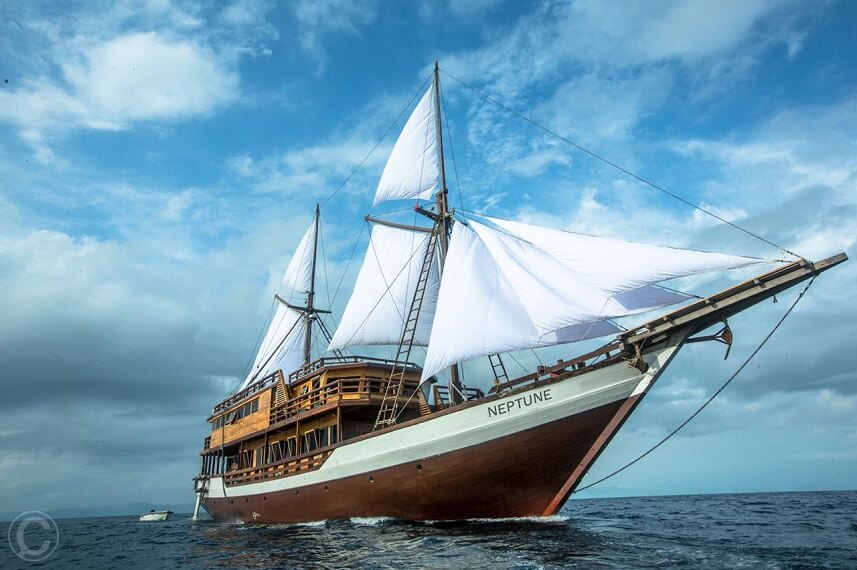
Shared trips from $3300 pp
Shared trips from $3300pp.
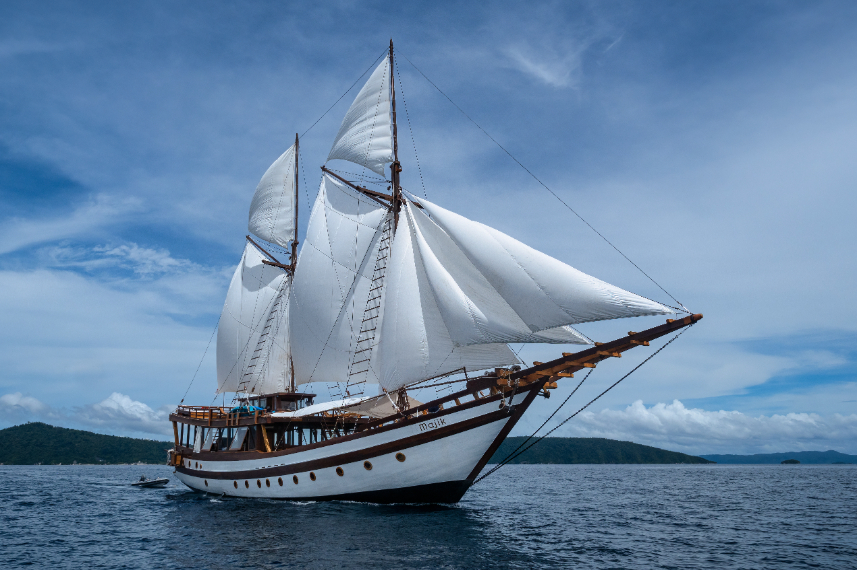
Shared trips from $6900 pp
Shared trips from $6900pp.
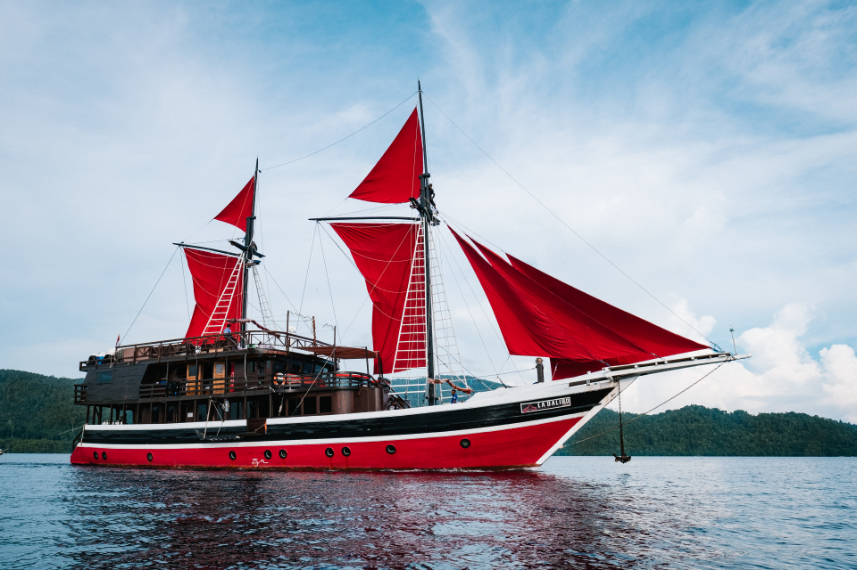
La Galigo Liveaboard
1 review(s), shared trips from $2160 pp, shared trips from $1944pp.
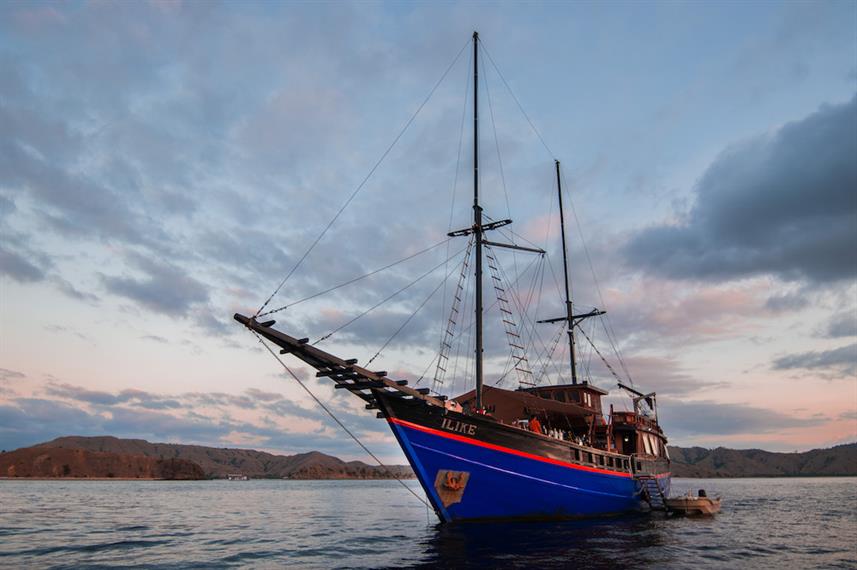
Shared trips from $4512 pp
Shared trips from $4512pp.
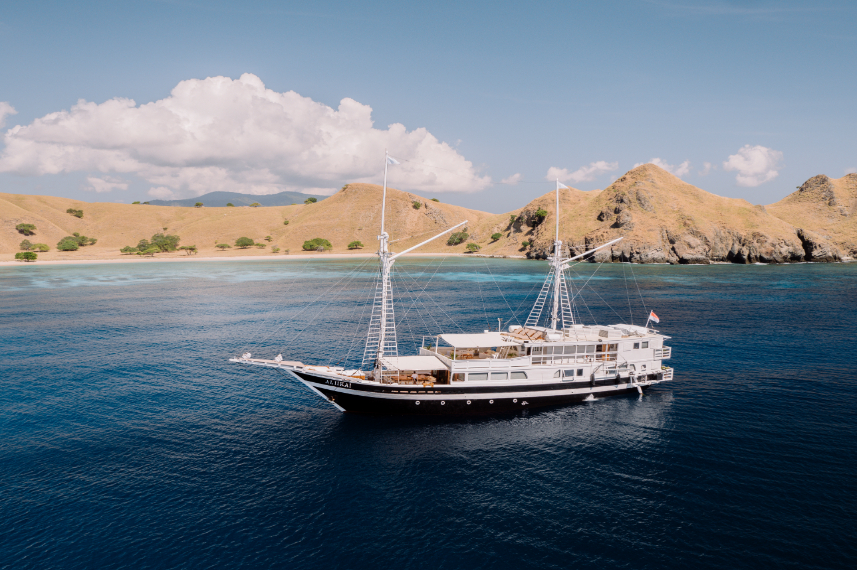
Aliikai Voyage
Shared trips from $4140 pp, shared trips from $4140pp.
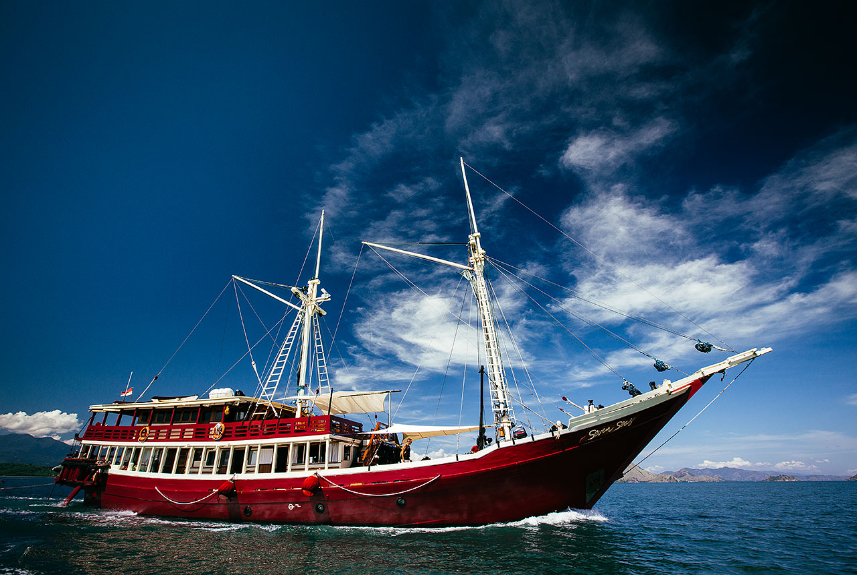
Shared trips from $4500 pp
Shared trips from $4500pp, recommended by liveaboard indonesia, shared trips.
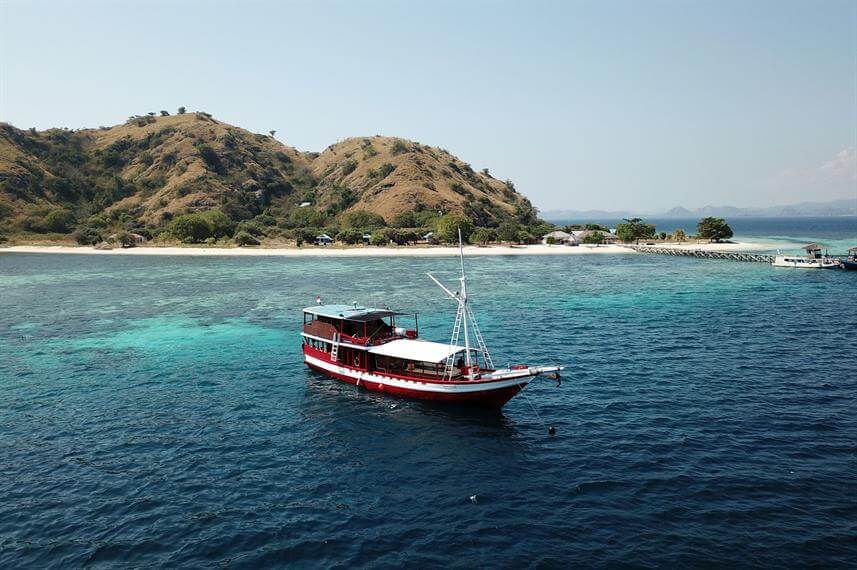
2 Review(s)
Shared trips from $1300 pp, shared trips from $910pp.
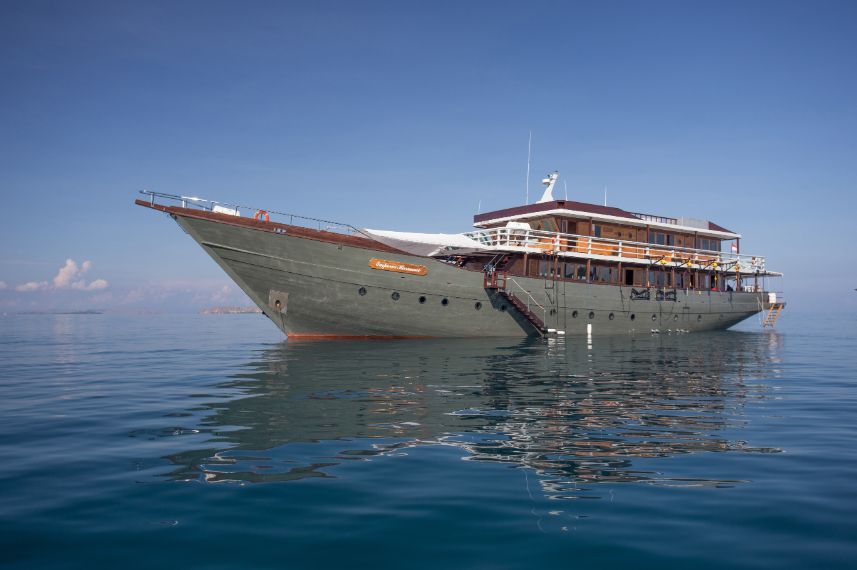
Emperor Harmoni
Shared trips from $3812 pp, shared trips from $3812pp.

Shared trips from $2170 pp
Shared trips from $2170pp.
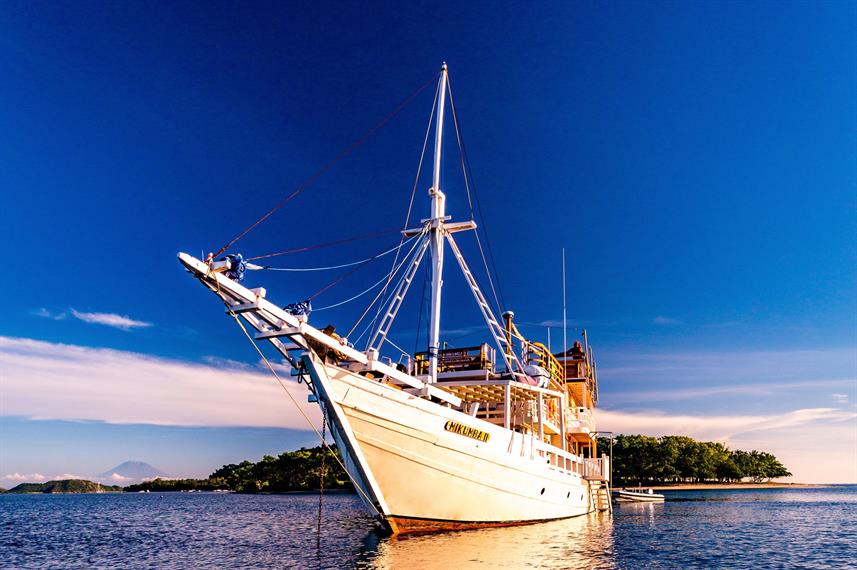
Shared trips from $1599 pp
Shared trips from $1599pp, private charters.
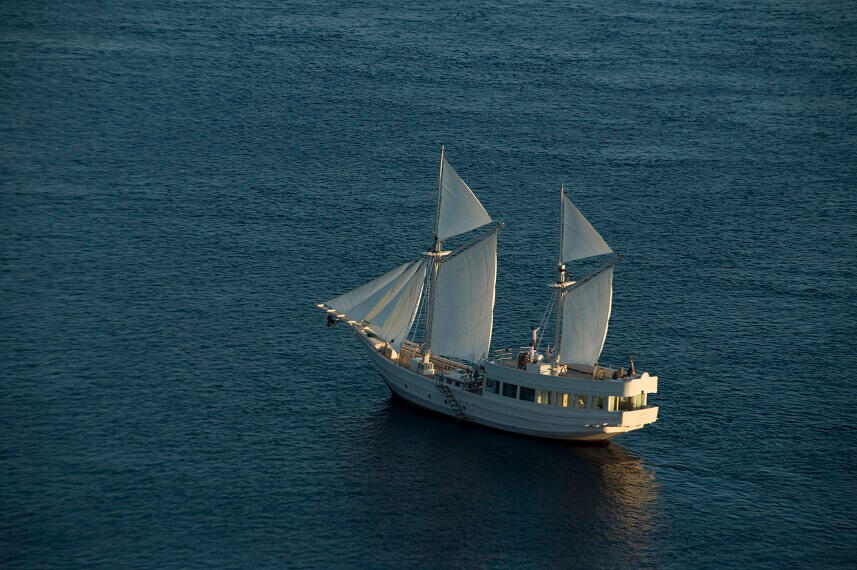
Gammara Phinisi
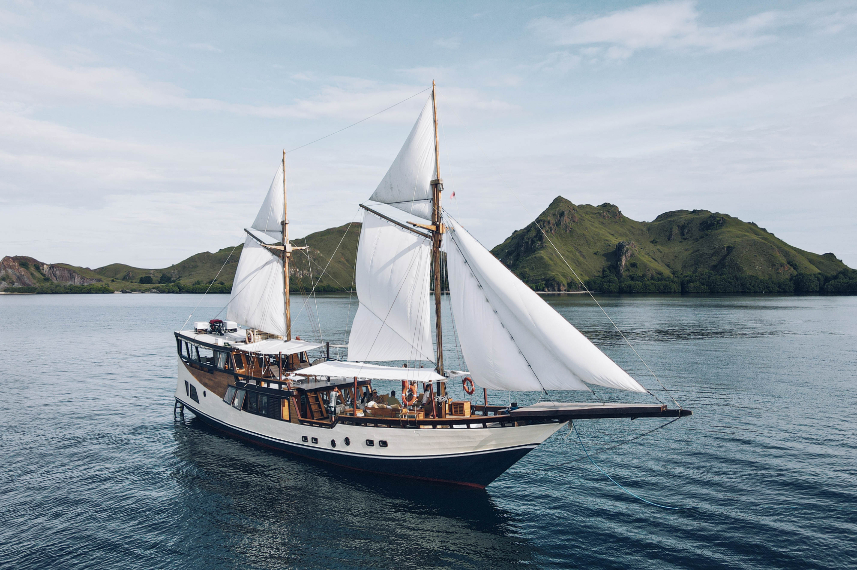
Some Good Reasons to Book with us
Still not excited about your next liveaboard diving trip? Well…
160+ Liveaboards
We've got all the best liveaboard boats in the best destinations and we're adding more daily. Keep checking back with us for the best offers.
Full online booking
We have realtime availability, direct from the liveaboard and a full online reservation and booking system, including a personalised user area to manage your bookings.
Customer Rewards
Repeat customers are rewarded with free gifts, liveaboard discounts and freebies to dream of. Join us today and start to benefit!
Diving with Liveaboard Indonesia
Explore the Indonesian Archipelago with Liveaboard Indonesia and you can choose to spend your days cruising or Scuba Diving some of the incredible locations in which Indonesia has to offer. Liveaboard Indonesia .com offers the largest selection of itineraries for cruising, snorkelling, or Scuba Diving. One of the star attractions in Indonesia is the stunning Komodo Island and Rinca Island, which are all located in the main Komodo National Park where you get the chance to visit the prehistoric Komodo Dragon. Komodo National Park is located about 45 Minutes from the magical island of Bali.
Book Liveaboard Indonesia and sail further east and you will discover Raja Ampat , namely Four Kings in English, and you will find the heart of The Coral Triangle, with its Sandy beaches, Pristine Coral Reefs, and a terrain that is something from a different world. Both of these destinations have to be in your bucket list for diving in Indonesia. Whether you are a Diver or a Snorkeler, we can guarantee there certainly is something for everyone on board one of the many liveaboards that operate in Indonesia. Aside from Komodo National Park and Raja Ampat you have other incredible destinations like Flores , Maumere, Alor, Maluku, Banda Islands , Triton Bay and Cenderawasih Bay to name but a few.
Liveaboard Indonesia offers trips that range from a few days to a couple of weeks, with all types of budgets to suit backpackers and travellers to those looking for a little bit of luxury during their stay. A liveaboard enables you to explore the unknown regions of Indonesia which are not easily reachable should you decide to stay in an Indonesian hotel or resort.
Whether you are travelling alone, a couple, family or even a large group of Divers and non-divers, there is the perfect Liveaboard to suit your requirements. Many budget Liveaboards have shared facilities whereas the more expensive, come with a room you would expect from a high-end resort, private or luxurious. Don’t delay and book with Liveaboard Indonesia today.
- [email protected]
- (+62) 0811 3830 4646
Top Liveaboards
Jelajahi laut, emperor raja laut.
All Liveaboards A – Z
Top Diving Destinations
The forgotten islands, lembeh strait.
All Indonesian Dive Sites
- Travel Support and Logistics
Useful info
- Terms and Conditions
- Privacy Policy
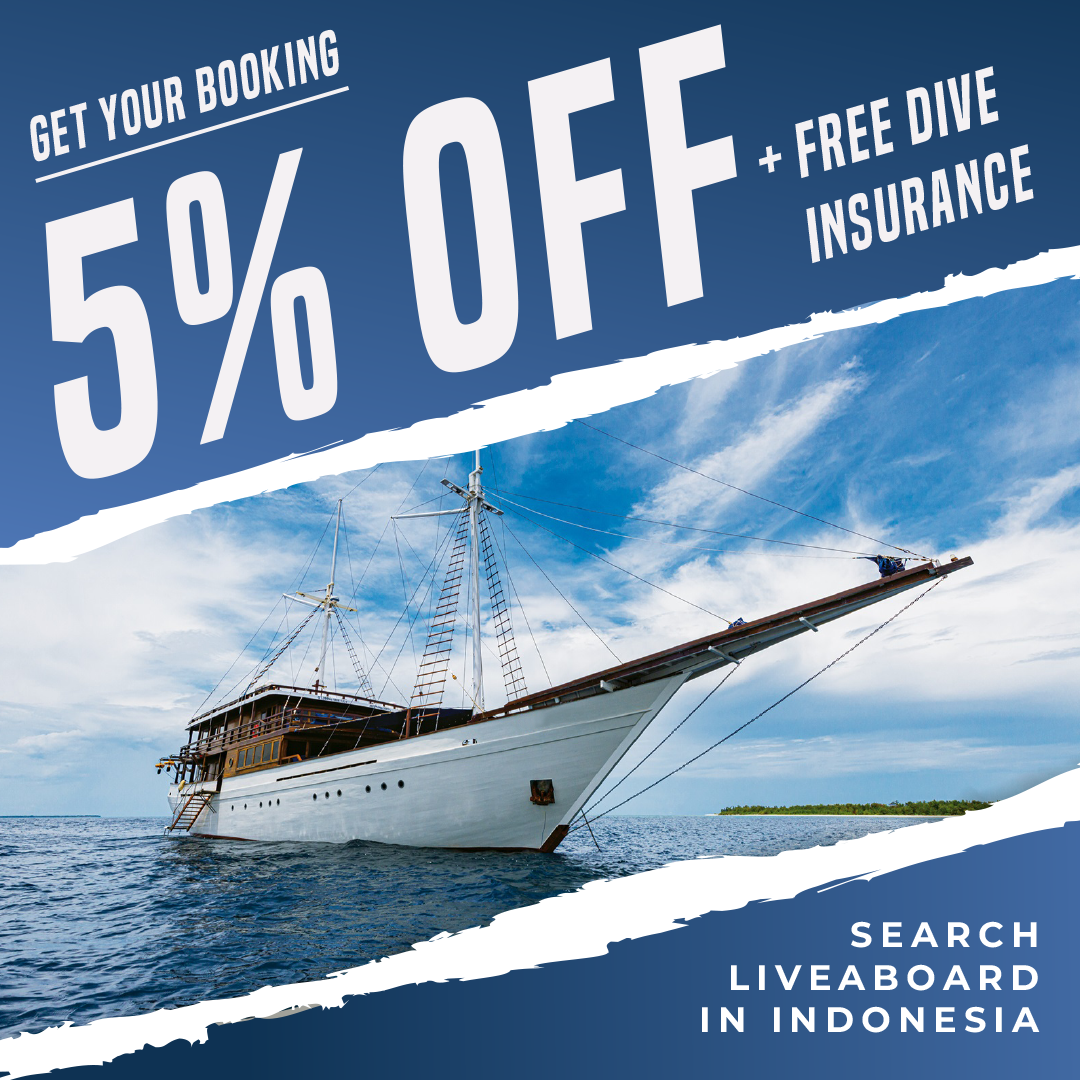

- Booking / Enquiry
- Booking / Enquiry Form
- Location/Contact
- Location / Contact Info
- Bali Specials
- All Special Offers
- Mola Mola Specials
- Limited Time Specials
- Online eNews
- Beyond Bali
- Groups & Clubs
- Subscribe to eNews
- Plan your Trip
- One Day Dive Trips
- Popular Dive Safaris [p1]
- Popular Dive Packages [p2]
- Bali Holiday Ideas
- Hotels & Resorts
- DAN Dive Insurance
- Bali Diving Info
- Dive Areas & Dive Sites
- Bali Dive Sites Map
- Underwater Photography
- Holidays Throughout Indonesia
- Dive Training
- Learn to Dive
- Extend Your Dive Training
- PADI eLearning (all courses)
- Become a Pro
- Professional Options
- Divemaster Programme
- DM Internship for Indonesians
- Specialty Dive Courses
- PADI Specialties
- Children’s Diving
- About Aquamarine
- Our Company
- Support Staff
- Unique to AMD-B
- Terms & Conditions
- Conservation
- Eco Awareness Bali
- Diver’s Review
- Bali Travel Information
- Interactive Bali Map
- About Indonesia
- Clubs & Groups
- Groups & Dive Clubs
- Agents & Dive Centres
- Travel Agents Information
- Approved Agents Only (coming soon)
Only Bali’s Better Dive Sites
Diving in bali – individual and group diving british owned – padi 5 star resort dive your own schedule – any dive site – any day – any length.
Small enough to offer personal service and custom itineraries yet large enough to provide complete travel services at competitive rates.
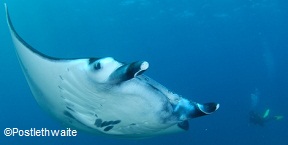
Popular Multi-day
Dive safaris.
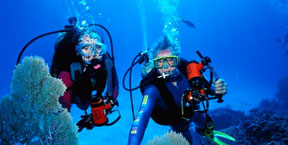
Learn To Dive
Padi courses.
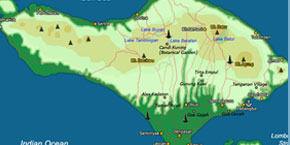
Discover Bali's
Amazing diving.
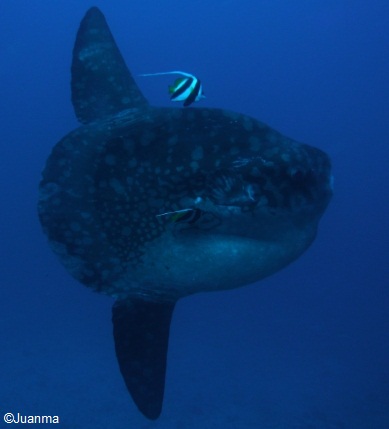
Why Choose to Dive with AquaMarine?
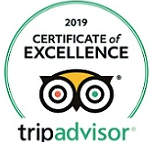
The level to which AMD-B customises trips is absolutely unique in Bali. The focus at AquaMarine is to provide both high quality service and the best possible diving for guests, offering programmes to suit each diver’s interests, experience and preferences. You will find suggested itineraries on our website to be used as a starting point for your holiday plans.
Our divemasters are professionals, all Indonesian, who chose diving as a career. Over 70% are PADI instructors. Many have worked for us for over 10 years and often train dive guides for other companies. Expect your dive package holiday, or day of diving, to be well-organised and safe, and well as beautiful and fun!
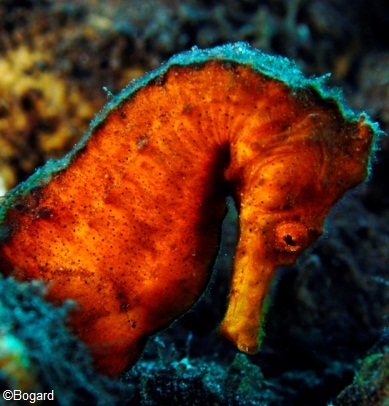
Bali Diving Trips & Safaris (Dive Packages)
Indonesia’s diving is among the best in the world. Diving in Bali is an easy and inexpensive way to see the best of Indonesia. Often overlooked by divers headed elsewhere in Indonesia, Bali SCUBA diving is special in its own right. Either as an add-on to an Indonesia diving trip or as a complete and inexpensive dive vacation with the added benefits of Bali’s unique culture and shopping for the creations of Bali’s many artists.
AquaMarine Diving – Bali operates One Day and Multi-Day Bali Diving Safaris (Dive Packages) throughout our island. Custom dive trips are our speciality.
Dive Tulamben Bay for the 120m USAT Liberty Wreck Dive and superb macro underwater photography. Visit Secret Bay for weird muck diving critters. Plan to dive Nusa Penida for Mola Mola (in season), sharks and Manta rays. Or combine all these into a customised Bali Diving Safari (Bali Dive Package with accommodation).
Bali Diving Holidays
Your customised Holiday Dive Package can include resorts & hotels that suit from luxury to budget tastes. AquaMarine works directly with many of Bali’s best hotels and resorts to build your unique itinerary. We’ve provided sample Bali Diving Holiday and Dive Safari itineraries to help you plan your trip in Bali. Contact our Dive Travel Consultants to organise your custom holiday package including the hotels, dive sites, and other activities you love.
Beyond Bali – Indonesia Dive Trips
Bali diving is wonderful but our island is not the only place in Indonesia with phenomenal diving. To ensure we provide a complete service for our clients we are an agent for other reputable dive resorts and liveaboards throughout Indonesia including but not limited to Komodo, Raja Ampat, Wakatobi and Lembeh Strait/Bunaken.
Get Our Newsletter:
- Hidden Email2
- Email Address *
- First Name *
- Last Name *
- Bali Only (4/year)
- Beyond Bali (monthly)
- Clubs & Groups (4/year)
- Country Country Afghanistan Albania Algeria American Samoa Andorra Angola Anguilla Antarctica Antigua And Barbuda Argentina Armenia Aruba Australia Austria Azerbaijan Bahamas Bahrain Bangladesh Barbados Belarus Belgium Belize Benin Bermuda Bhutan Bolivia Bosnia and Herzegovina Botswana Bouvet Island Brazil British Indian Ocean Territory Brunei Darussalam Bulgaria Burkina Faso Burundi Cambodia Cameroon Canada Cape Verde Cayman Islands Central African Republic Chad Chile China Christmas Island Cocos (Keeling) Islands Colombia Comoros Congo Cook Islands Costa Rica Côte d'Ivoire Croatia Cuba Curacao Cyprus Czech Republic Democratic Republic of the Congo Denmark Djibouti Dominica Dominican Republic Ecuador Egypt El Salvador Equatorial Guinea Eritrea Estonia Ethiopia Falkland Islands Faroe Islands Fiji Finland France French Guiana French Polynesia French Southern Territories Gabon Gambia Georgia Germany Ghana Gibraltar Greece Greenland Grenada Guadeloupe Guam Guatemala Guernsey Guinea Guinea-Bissau Guyana Haiti Heard and Mc Donald Islands Honduras Hong Kong Hungary Iceland India Indonesia Iran Iraq Ireland Isle of Man Israel Italy Jamaica Japan Jersey (Channel Islands) Jordan Kazakhstan Kenya Kiribati North Korea South Korea Kosovo Kuwait Kyrgyzstan Laos Latvia Lebanon Lesotho Liberia Libya Liechtenstein Lithuania Luxembourg Macau Macedonia Madagascar Malawi Malaysia Maldives Mali Malta Marshall Islands Martinique Mauritania Mauritius Mayotte Mexico Micronesia Moldova Monaco Mongolia Montenegro Montserrat Morocco Mozambique Myanmar Namibia Nauru Nepal Netherlands Netherlands Antilles New Caledonia New Zealand Nicaragua Niger Nigeria Niue Norfolk Island Northern Mariana Islands Norway Oman Pakistan Palau Palestine Panama Papua New Guinea Paraguay Peru Philippines Pitcairn Poland Portugal Puerto Rico Qatar Reunion Romania Russia Rwanda Saint Kitts and Nevis Saint Lucia Saint Vincent and the Grenadines Samoa San Marino Sao Tome and Principe Saudi Arabia Senegal Serbia Seychelles Sierra Leone Singapore Sint Maarten Slovakia Slovenia Solomon Islands Somalia South Africa South Georgia and the South Sandwich Islands Spain Sri Lanka St. Helena St. Pierre and Miquelon Sudan Suriname Svalbard and Jan Mayen Islands Swaziland Sweden Switzerland Syria Taiwan Tajikistan Tanzania Thailand Timor-Leste Togo Tokelau Tonga Trinidad and Tobago Tunisia Turkey Turkmenistan Turks & Caicos Islands Tuvalu Uganda Ukraine United Arab Emirates United Kingdom United States of America Uruguay USA Minor Outlying Islands Uzbekistan Vanuatu Vatican City Venezuela Vietnam Virgin Islands (British) Virgin Islands (U.S.) Wallis and Futuna Islands Western Sahara Yemen Zambia Zimbabwe
- Club or Group Name
- Club/Group Website (http://www.myclub.org)
- Email This field is for validation purposes and should be left unchanged.
Groups & Clubs
Whether you are a member of a dive club or a group of friends travelling together, AquaMarine will develop a programme to suit all members of your group irrespective of age, experience, needs, divers and/or non-divers. Several of our Dive Travel Consultants specialise in looking after enquiries/bookings for 5+ guests.
By letting us know your ‘Wish list’ and if your group has any special requests, AquaMarine can build the ideal package for your group to dive in Bali. For example, if you’re a photography group, we will assign you our best spotters; and groups of school children will be taught by instructors experienced in working with young people. We have taught PADI courses to school groups from Bali and overseas; hosted workshops; and organised Day Trips, PADI courses and Dive Safaris for women-only groups.
Travel Agents & Dive Shops
As an agent you have the surety of dealing with a long established, well respected dive operator offering outstanding services. You can have confidence in the support we offer to you as an agent and for your clients during their stay in Indonesia. We aim to answer your queries within 24 hours.
At AquaMarine we will tailor an itinerary for each enquiry you send us or we can customise exclusive packages for individual travel agents so you can target your market precisely. Packages may include accommodation, diving, transfers, domestic flights, land tours and other activities.
ON THE PALAU SIREN!

Search form
- Best Scuba Diving In The World
- Best Diving in Asia
- Best Diving in Africa
- South Africa
- Zanzibar, Tanzania & Kenya
- African Land Safaris
- Tanzania Land Safari
- Australia Best Diving
- Great Barrier Reef
- Caribbean Best Diving
- British Virgin Islands
- Cayman Islands
- Dominican Republic
- Jardines de la Reina
- Roatan, Utila & Guanaja
- Saba, St Kitts & St Eustatius
- St. Vincent and the Grenadines
- Tiger Beach
- Trinidad & Tobago
- Turks and Caicos
- Best Diving in Costa Rica
- Cocos Island
- French Polynesia Best Diving
- Galapagos Islands
- Andaman Islands
- Indonesia - Top 10 Areas
- Cenderawasih Bay
- Derawan Islands
- Lembeh Strait
- Manado and Bunaken
- Raja Ampat Area
- Wakatobi National Park
- Best Scuba Diving in Mexico - Top 9
- Baja California
- Cabo San Lucas
- Guadalupe Island
- Isla Mujeres
- San Ignacio Gray Whales
- Sea of Cortez
- Socorro Islands
- Micronesia Dive Guide
- Bikini Atoll
- Truk Lagoon
- Saudi Arabia
- Southeast Asia - Top Areas
- Philippines - Top Areas
- Cebu and Bohol
- Malapascua Island
- Puerto Galera
- Papua New Guinea
- Solomon Islands
- Thailand Best Diving
- Similan Islands
- Best Diving in the USA
- Best Scuba Diving in Hawaii
- Catalina Island
- Southern California
- All 110 Destinations
- Best Liveaboard Destinations
- All Liveaboard Destinations
- Bahamas Liveaboards
- Belize Liveaboards
- Caribbean Liveaboards
- Cocos Island Liveaboards
- Galapagos Liveaboards
- Great Barrier Reef Liveaboards
- Indonesia Liveaboards
- Komodo Liveaboards
- Maldives Liveaboards
- Norway Liveaboards
- Palau Liveaboards
- Philippines Liveaboards
- Raja Ampat Liveaboards
- Red Sea Liveaboards
- Sea of Cortez Liveaboards
- Socorro Liveaboards
- Thailand Liveaboards
- Tubbataha Liveaboards
- Turks & Caicos Liveaboards
- 170+ Liveaboards Worldwide
- Bali Dive Resorts
- Belize Dive Resorts
- Bonaire Dive Resorts
- Caribbean Dive Resorts
- Cayman Islands Dive Resorts
- Cozumel Dive Resorts
- Fiji Dive Resorts
- French Polynesia Dive Resorts
- Indonesia Dive Resorts
- Maldives Dive Resorts
- Mexico Dive Resorts
- Palau Dive Resorts
- Philippines Dive Resorts
- Raja Ampat Dive Resorts
- Roatan, Utila, & Guanaja Dive Resorts
- Sipadan Dive Resorts
- 200+ Dive Resorts Worldwide
- All Guided Group Trips
- swim with whales
- Off the beaten track
- African Safari Trips
- Bluewater Travel's 50 Amazing Adventures
- Liveaboard Bonanza
- All Dive Travel Specials
- Best Of Articles
- All Articles
- Top 10 Lists
- Top Luxury Liveaboards
- Top Rated Liveaboards
- Travel Search
- Travel Insurance
- Terms of Service
- Leave a review
- Learn Underwater Photography
- Buy Underwater Camera Gear
- Get Scuba Certified
Best Diving in Indonesia - Top 10
Scuba diving in Indonesia is simply a must for any avid diver. Hosting over 25% of the world’s fish species, as well as over 72% of the worldwide coral species , Indonesia is often cited as the world's epicenter of biodiversity with the greatest marine life variety ever recorded on earth, alongside the Philippines and a small number of other Coral Triangle destinations.
Whether you're into macro critters, big animals, beautiful corals, or thrilling drift dives and prefer luxury resorts, liveaboards, or budget lodges, Indonesia has it all. Here at Bluewater Travel, Indonesia is a huge favorite among our dive travel experts, and we know that choosing a dive vacation spot in this massive country is no easy task. With all its marine critter and dive site diversity , Indonesia offers some of the best liveaboard diving in the world!
Check out some of Asia's top dive destinations .
To make it easier for you to choose your next dive vacation spot, we've listed down some of Indonesia's best dive spots , complete with all the highlights and why they might be a great fit for you.
LOOKING FOR A RESORT IN INDONESIA?
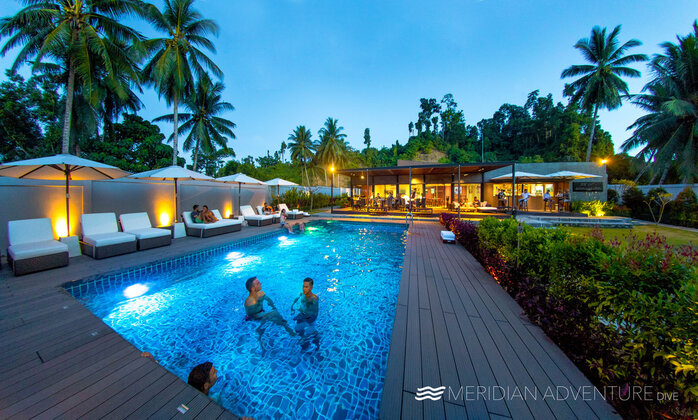
Meridian Adventure Dive Resort & Marina Club, Waisai, is the first PADI 5-star boutique hotel in the region. With modern, clean, and air-conditioned rooms plus high-performance, low-emission dive boats with access to over 100 dive sites, Meridian is an excellent choice for resort-based diving or for an extended stay in this spectacular area before and/or after your liveaboard adventure! Get EXCLUSIVE specials when you book with Bluewater Travel...
Best Diving Spots in Indonesia
Here are some of the best scuba diving spots in Indonesia, in alphabetical order. Pick one or scroll down to read the entire list:
- 1. Ambon Bay, Maluku - World-class muck diving
- 2. Alor, East Nusa Tenggara - Indonesia's hidden gem
- 3. Banda Sea, Maluku - Sea snakes and hammerheads!
- 4. Bali - Wrecks, tiny critters, manta rays, Molas--Bali has it all!
- 5. Derawan Islands, Borneo - Jellyfish lake, manta rays, and whale sharks!
- 6. Komodo, East Nusa Tenggara - Thrilling drift dives and world-class reefs
- 7. Lembeh, North Sulawesi - The world's muck diving capital
- 8. Manado & Bunaken, North Sulawesi - World-class wall dives & pristine reefs
- 9. Raja Ampat Area, West Papua - The holy grail of Indonesian scuba diving.
- 10. Wakatobi, South East Sulawesi - Exclusive area with some of the world's most beautiful coral reefs.
See also: Other Dive Areas in Indonesia - Liveaboards & Dive Resorts - Travel Tips
1. Ambon Bay, Maluku
Excellent muck dives.
Ambon is the capital city of Maluku Province, known to scuba divers for its world-class muck dives .
Critters that can be seen here include rhinopias, frogfish, ghost pipefish, lots of juvenile fish, stonefish, mandarin fish, nudibranchs, harlequin and Coleman shrimps, wonderpus, mimic and flamboyant cuttlefish, and even the much-sought-after psychedelic frogfish!
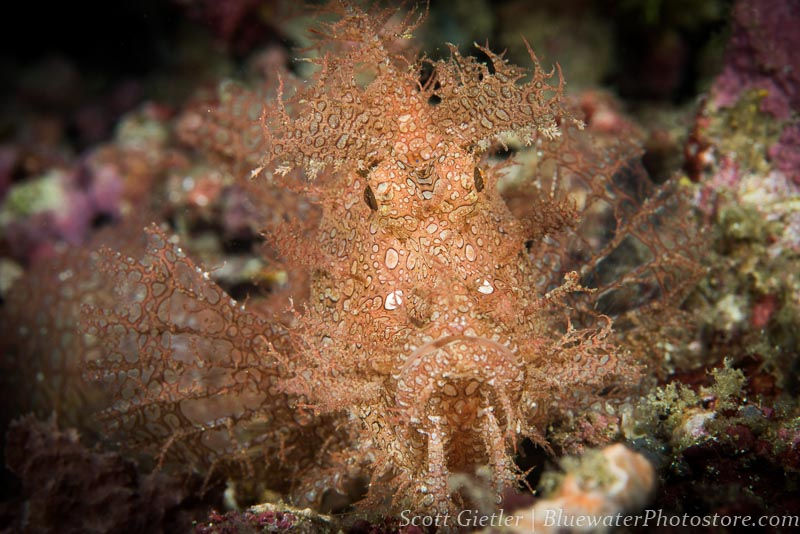
Rhinopias are highly sought after in Ambon.
Resort-based diving is the norm in Ambon although some liveaboards would often include it as the final stop/starting point of Raja Ampat and/or Banda Sea liveaboard trips.
Learn more about diving Ambon , including our selection of Ambon dive resorts and liveaboards.
Practical Information
- Diving Season: September to June. July to August is the Southeast monsoon season.
- Difficulty: Beginner to Advanced.
- Nearest Airport: Ambon (AMQ). Direct flights are available from Jakarta (CGK), Sorong (SOQ) and Manado (MDC)
- Topside Activities: Limited.
Other Destinations
2. Alor, East Nusa Tenggara
Indonesia's hidden gem .
Alor is one of Indonesia's hidden gems. This off-the-beaten-path dive destination offers a mix of both world-class wide-angle and macro sites. Pristine coral reefs, steep walls, sloping muck sites --the diving in Alor is really diverse and would please the most discerning diver and underwater photographer.
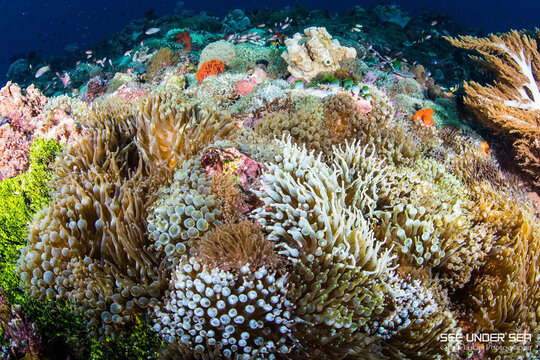
You can see plenty of small and medium-sized fish along with sponges and colorful corals while diving Alor. Macro photography enthusiasts can find small subjects such as frogfish, leaf scorpionfish, pygmy seahorses, eels, and various nudibranchs. Bigger animals like Mola molas and sharks can also be seen although sightings are less common.
Most of the diving in Alor can be done through a resort. Some liveaboards also include Alor from time to time while visiting the Banda Sea or Komodo.
See Erik Lukas's full report and photos from his Alor diving trip in 2017, or contact us for resort and liveaboard options.
PRACTICAL INFORMATION
- Diving Season: March to December offers the best conditions. The weather and diving conditions could be rough and unpredictable in other months. Find out why we love visiting Alor in August !
- Difficulty: Intermediate to Advanced. Some of the sites could have strong and unpredictable currents.
- Nearest Airport: Alor (ARD). Flights to Alor are available out of Jakarta (CGK) and Bali (DPS).
3. Banda Sea, Maluku
Excellent dive area for sea snakes and hammerheads .
The Banda Sea is an up-and-coming liveaboard diving destination in Indonesia, visited by most liveaboards around the months of September to October, and April or May before or after setting sail to Raja Ampat.
Most of the diving around the Banda Sea involves excellent wall dives and great macro sites, but the biggest draw is probably the resident sea snakes at Manuk and Gunung Api islands.
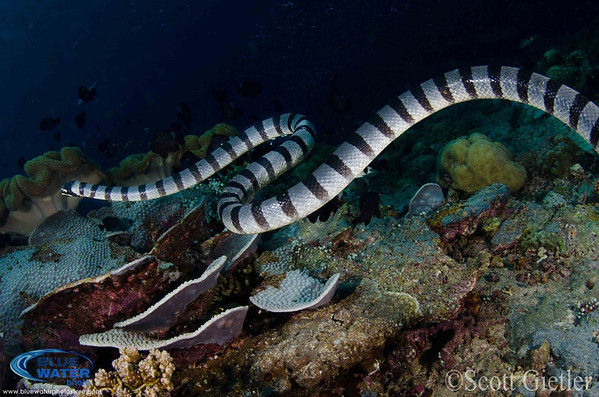
The Banda Sea has also been gaining popularity as one of the few destinations in Southeast Asia where divers have a decent chance to see schooling hammerheads . Divers can also see big schools of fish and occasional reef sharks and rays.
On top of all that, divers have the benefit of the best the region has to offer, which are amazing visibility and dramatic topography, as well as uncrowded dive sites and lush reefs!
Due to the remote location, diving in the Banda Sea is only possible via liveaboard.
- Diving Season: March to May and September to November offer the best conditions. The weather and diving conditions could be rough and unpredictable in other months.
- Difficulty: Intermediate to Advanced. Some of the sites could have strong and unpredictable currents.
- Nearest Airport: Popular ports include Ambon (AMQ), Alor (ARD), Maumere (MOF), Saumlaki (SXK), and Kaimana (KNG).
- Topside Activities: Limited.
Very Diverse dive Area with Plenty of OTher Things to DO
Bali, the Island of the Gods as they call it, is easily the most popular tourist hotspot in Indonesia and is probably the easiest scuba diving destination in the country for international travelers.
Unique critters, fascinating wrecks, beautiful walls, colorful corals, excellent muck dives, huge schools of fish, pelagics - Bali has it all . If you're particularly interested in diving with Mola Mola, Bali's sunfish, check out this podcast . Technical diving and freediving are also possible in Bali with a good number of reputable dive operations.
Topside, the island is no less vibrant, with many beautiful beaches, world-class surf spots, plenty of great bars and restaurants, and shopping areas in the south; fascinating Hindu temples pretty much everywhere on the island; and lush and unique ricefields and plenty of opportunities to see the unique local culture in Ubud .
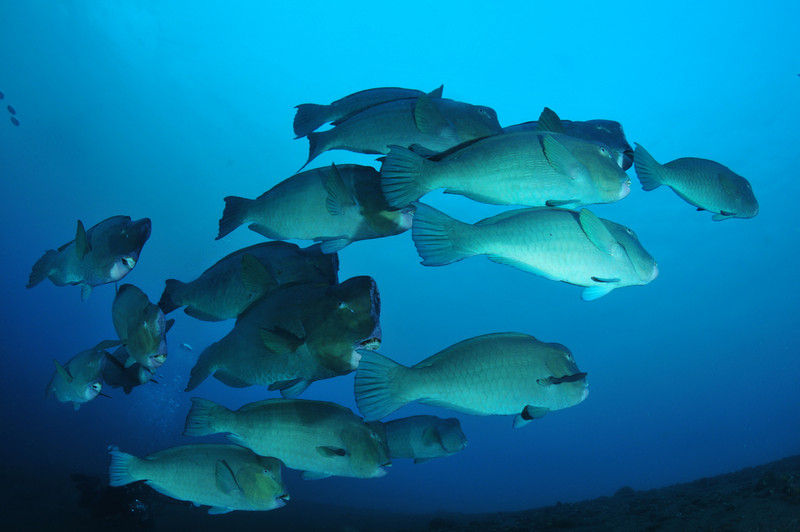
Schooling bumphead parrotfish, photographed by Bluewater owner Scott Gietler at USAT Liberty Wreck.
Bali's top dive sites can be found off its eastern and northern coastlines, and at Nusa Penida island.
The USAT Liberty Wreck in Tulamben, East Bali, is one of the most popular sites in the area. The site can be easily accessed from the shore and can be dived many times while shooting wide-angle or macro. You can see bumphead parrotfish, Napoleon wrasses, barracudas, jacks, sweetlips, turtles, and more.
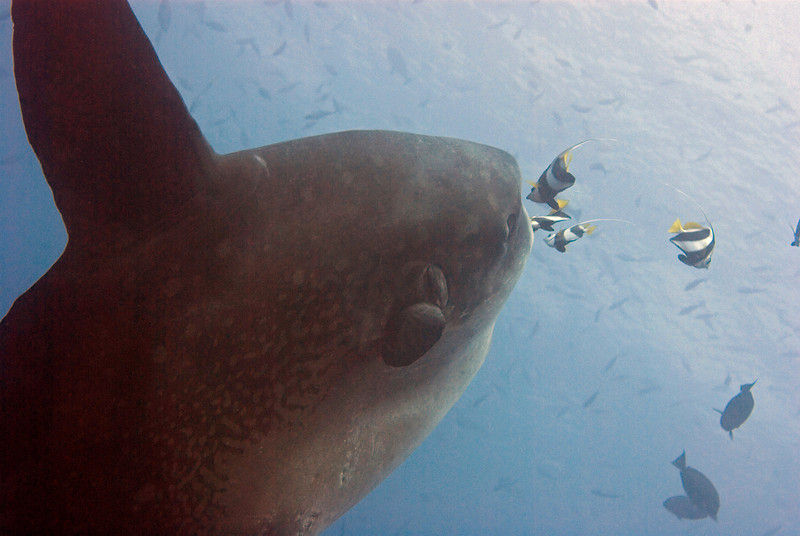
Up-close shot of a Mola by Bluewater owner Scott Gietler.
Nusa Penida is a reliable place for up-close manta ray encounters and diving with the odd-looking Mola molas . July to October are the popular months for Mola mola sightings, but the season has been slowly shifting in the past few years.
If you want to dive with this awesome animal in Bali, check the latest Mola Mola sighting information and tips with your dive operator or travel advisor before booking your trip!
Land-based diving is the norm in Bali with many great dive operators and resorts to choose from, for all kinds of budgets. Many tour operators offer visitors to opt-in for a land-based tour around the island to experience the local culture, an experience that we highly recommend!
Bali is also easy to combine with a trip to Komodo . Some liveaboards depart from Bali to visit Komodo, and even if they don't, Labuan Bajo (LBJ), the embarkation port of most Komodo trips, is only a one-hour flight away.
View dive resorts in Bali or learn more about diving Bali .
- Diving Season: Year-round, except for Mola mola diving, which is seasonal. December to February are the rainiest months and are best avoided. July to August is the peak tourist season.
- Difficulty: Beginner to Advanced. Bali has many beginner-friendly dive sites.
- Nearest Airport: Fly internationally into Bali (DPS), and you'll be there!
- Topside Activities: The list goes on: golfing, beach hopping, hiking, cultural tours, bar hopping, coffee tasting, etc.
5. Derawan Islands, East Borneo
Jellyfish lake, manta rays, and whale sharks.
Derawan is a remote group of islands in East Kalimantan (East Borneo), and is home to one of the three jellyfish lakes known to men, with the other two located in Palau and Misool Island in Raja Ampat.
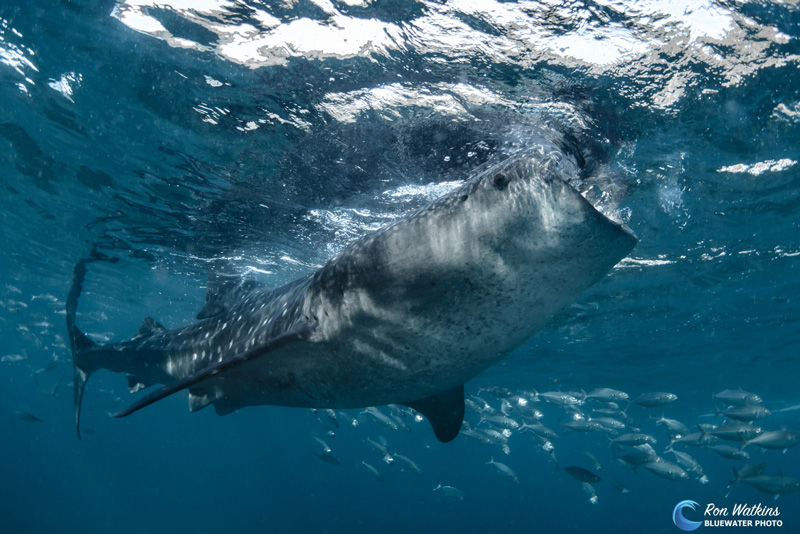
The diving is spread across its 4 main islands: Kakaban where the jellyfish lake is; Sangalaki a hotspot for manta rays and turtles; Maratua , where many reef sharks, huge schooling barracudas, and eagle rays reside; and Derawan itself, which offers good drift and muck dives, as well as a chance to snorkel with whale sharks.
The diving infrastructure in Derawan is not as strong as that of most of the destinations listed here, but there are a good number of reputable liveaboards and dive resorts in the area.
Contact us for dive resort and liveaboard options in Derawan, or learn more about diving Derawan .
- Diving Season: Year-round, with October to June the best time to see manta rays in abundance.
- Difficulty: Beginner to Advanced.
- Nearest Airport: Berau (BEJ) or Tarakan (TRK), accessible from Jakarta (CGK).
- Topside Activities: Limited
6. Komodo, East Nusa Tenggara
Amazing Drift Dives, Pristine REefs, and Big Schools of FIsh
One hour from Bali by plane lies Komodo National Park, a group of volcanic islands with over 5,700 giant lizards known as Komodo dragons. This UNESCO World Heritage Site also hosts a world-class scuba diving scene. Think thrilling drift dives with colorful corals in various formations teeming with marine life, big and small. Divers can see big schools of fish year-round, as well as eagle and manta rays.
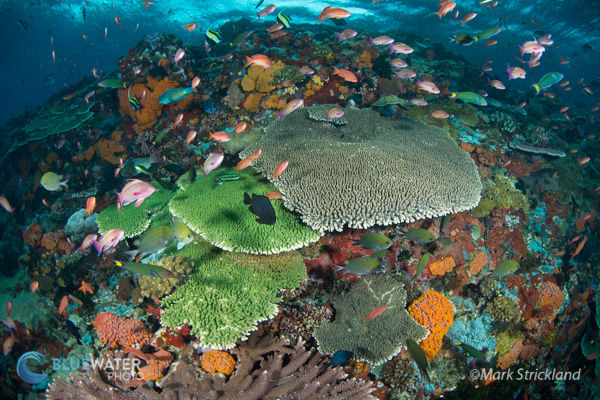
An outstanding variety of coral formations and incredible fish life make diving Komodo really special. By Mark Strickland.
Diving in Komodo can be divided into three distinct areas: North, Central, and South Komodo .
North Komodo is the hotspot for drift dives, with big schools of fish and various pelagic species, which can be seen at their cleaning stations. The currents are typically strong, and diving here is more suitable for experienced divers, but that's one of the main reasons why diving Komodo is so exhilarating and rich with sea life!
The Cauldron, or Shotgun, is a huge favorite among divers. The rip current that this site is famous for will grab and "shoot" you through the channel which overflows with various marine life like big schools of trevally, snappers, and reef sharks. Manta and eagle rays are also commonly spotted.
Central Komodo is no less exhilarating, with world-class dive sites like Batu Bolong, which boasts a mindblowing spectrum of colors and fish life, and Manta Point, where up to 50 mantas can be seen at once, mating and feeding if you come during the right season. There are also many excellent macro sites in the area.
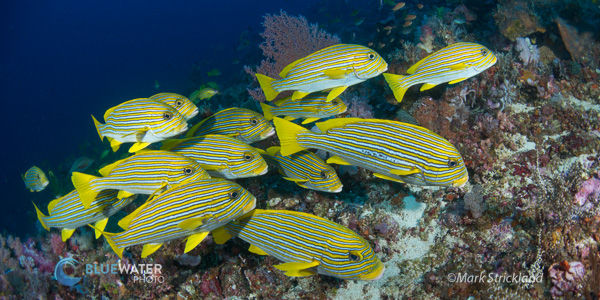
Schooling Sweetlips in Komodo by Mark Strickland.
North and Central Komodo areas can be dived year-round but March to October offers the best dive conditions, and we love to visit Komodo in May and September.
Even though they're geographically very close to each other, South Komodo can almost be considered an entirely different dive destination due to the differing climates. In North Komodo, water temperatures average between 27-28°C (81-82°F), while South Komodo is considerably colder, with water temperatures averaging 23-24°C (73-74°F ). Therefore, packing several different wetsuit combinations when diving both North and South Komodo is a must!
South Komodo also offers excellent critter life, boasting unique species that you might not be able to find in more reputable macro destinations like Lembeh, Ambon or Anilao, so definitely bring your macro lens along with you when diving South Komodo!
This area is best dived from November to February and is famous for its epic walls, dramatic swim-throughs, and overall stunning topography . The landscape of this area is also not to be missed.
Check out Mark Strickland's recap of photos of Bluewater's Komodo Dive Trip in 2017!
Similar to Bali, Komodo has a very strong diving infrastructure with plenty of dive operations to choose from. You can find budget-friendly dive hostels, luxury dive resorts, short liveaboard trips aboard a budget boat, longer trips on a luxury yacht, and the list goes on.
However, Komodo is not the easiest area to dive and choosing a reputable dive operation is key to having the best experience above and below the water. Do not hesitate to contact us for recommendations based on your preferences and requirements!
View all liveaboards and dive resorts in Komodo or learn more about diving Komodo .
- Diving Season: Year-round, with the best dive conditions in March to October (North & Central) and November to February (South).
- Difficulty: Intermediate to Advanced. The currents are typically quite strong.
- Nearest Airport: Labuan Bajo (LBJ), accessible from Bali (DPS).
- Topside Activities: A land-based tour to see the Komodo dragons is a must. There is also a good number of nature-based and cultural tours to choose from.
7. Lembeh, North Sulawesi
The place to be for uw macro photography enthusiasts .
Known as the world's capital for muck diving , Lembeh Strait in North Sulawesi offers second-to-none macro biodiversity. The number of species that you can cross off your critter list within a week of diving Lembeh is staggering, to say the least.
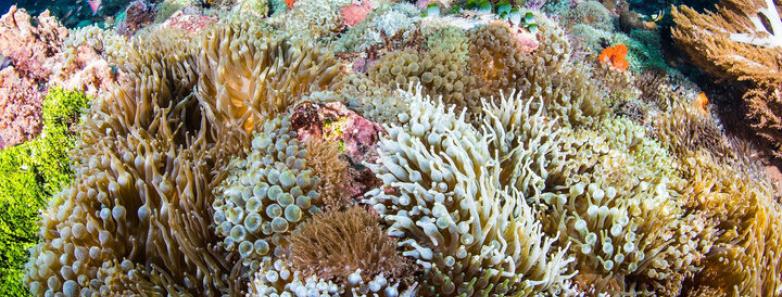
Hairy frogfish yawning. Shot by Matt Sullivan while leading a Bluewater macro photography workshop in Lembeh.
On a typical Lembeh dive trip, you can see hairy frogfish, flamboyant cuttlefish, juvenile barramundi, cod, juvenile pinnate batfish, rhinopias, harlequin shrimps, mandarin fish, snake blennies in the open, large beautiful stinging anemones...it's almost impossible to list them down on one page.
Check out the ultimate critter list with over 130 macro species found across Anilao, Bali, and Lembeh on our sister website uwphotographyguide.com .
Lembeh also offers excellent diving infrastructure along with its reputation as an underwater macro photography hotspot. Most dive resorts are photographer-friendly and have exceptionally skilled local dive guides to help you find the tiniest, rarest critters that are almost impossible to see with the naked eye.
Located only a 2-hour drive away from Manado Airport (MDC), Lembeh is easy to combine with other diving hotspots in Sulawesi, such as Bunaken, and can even be considered as an extension option after/before a trip to Raja Ampat. Direct flights to Bali are also available.
View all dive resorts in Lembeh and learn more about diving Lembeh .
- Diving Season: Year-round, the best dive conditions are from March to October (North & Central) and November to February (South).
- Nearest Airport : Manado (MDC), accessible from Bali (DPS) and other major airports in Indonesia.
- Topside Activities: Take a tour to Tangkoko National Park to see Tarsier monkeys and Celebes crested macaques.
8. Manado & Bunaken, North Sulawesi
Some of the world's best wall dives with excellent diversity.
Manado is more than just a stop for those intending to visit Lembeh. Manado Bay , which is only 30 minutes away from the airport, offers a mix of great muck and reef sites , treating divers to unique critters like mimic octopus and flamboyant cuttlefish, as well as various seahorses, squids, nudibranchs, and frogfish.
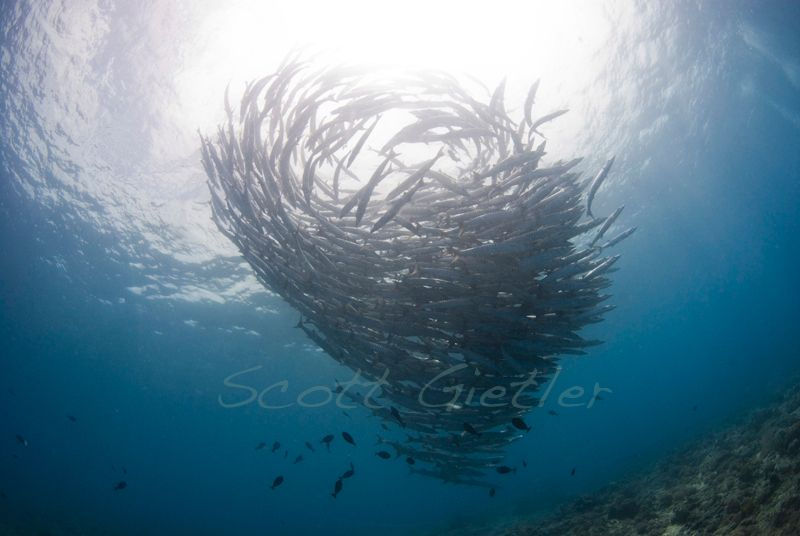
Barracuda tornado in Bunaken. Shot by Bluewater owner Scott Gietler.
Nearby Bangka Island boasts beautiful soft corals and an overload of untouched reefs , with bigger marine life like reef sharks, rays, tunas and barracudas and smaller critters such as pygmy seahorses and various shrimps.
Then, let's not leave out Bunaken National Park , a marine sanctuary , home to some of the world's best wall dive sites, with staggeringly beautiful coral walls and large and small marine life including reef sharks, schooling fish, sea snakes, a plethora of critters, and the occasional eagle rays and stingrays. Resident pods of dolphins and pilot whales can often be seen from the boat.
Diving in the area is predominantly land-based, with a number of great operations located in town and near Bangka island.
View all dive resorts in Manado & Bunaken and learn more about diving Manado & Bunaken .
Practical information
- Diving Season: Year-round, with the best dive conditions in March to October.
- Nearest Airport: Manado (MDC). It serves as a domestic and international airport with direct flights out of Jakarta (CGK), Bali (DPS) and various Asian cities, including Singapore (SIN) and Kuala Lumpur (KUL).
- Topside Activities: Bunaken is snorkeler-friendly, and most resorts offer land-based tours to the area's local villages, lakes, volcanos, and various nature and animal reserves. Paragliding and white water rafting tours can also be arranged.
9. Raja Ampat, West Papua
Richest Marine Life - The Holy Grail of Scuba Diving in Indonesia
No guide to diving in Indonesia would be complete without mentioning the holy grail of the country's scuba diving where the world's richest coral reefs can be found, Raja Ampat. Over 1,400 fish species and 72% of the world's known coral species call Raja Ampat home, hence the nickname ' species factory '.
Alongside Kaimana Regency and Triton Bay in the south and Cenderawasih Bay in the east, the Raja Ampat archipelago makes up a massive area collectively known as the Bird's Head Seascape . To sum it up, you can visit the Raja Ampat area many times in your life and discover something new each time .
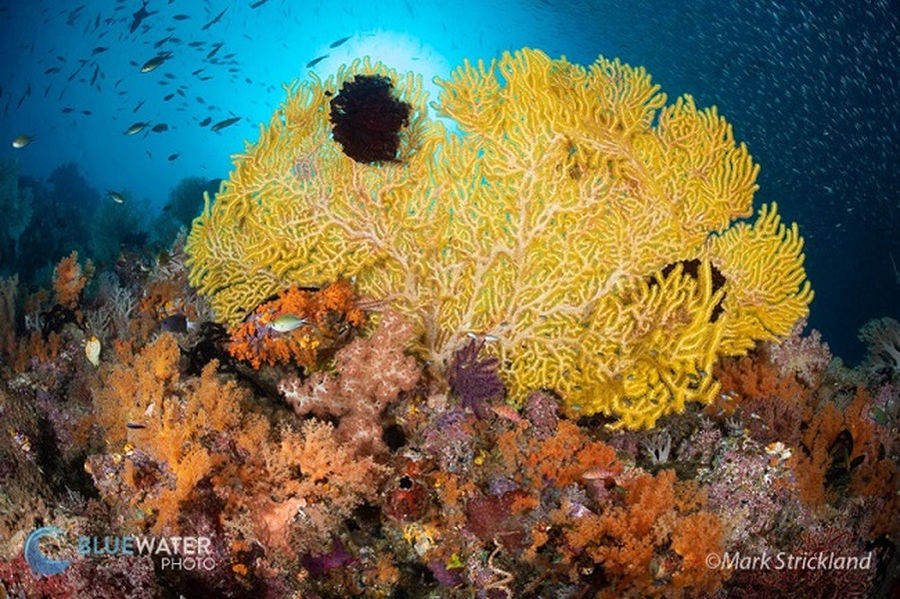
Yellow gorgonian captured by Mark Strickland while leading one of our Raja Ampat trips.
Some of Raja Ampat's best diving can be found in the Dampier Strait , a vast area separating Waigeo (North) and Batanta (Central); and Misool Island (South).
Cape Kri near Dampier Strait is world-famous as the most diverse dive site in the world. Dr. Gerald Allen hit the world record by documenting 374 fish species in a single dive at this site! Misool Island bursts with colorful soft corals and plentiful mangrove forests. You can even see both at some sites, with soft corals growing on the mangrove roots! Batanta, the smallest island out of the four main ones that make up Raja Ampat, offers world-class muck sites .
The long list of marine life that can be seen on a Raja Ampat dive trip includes some endemic species such as Raja Ampat epaulette shark, tasseled wobbegong shark, and Papuan garden eel. Bigger species, like reef sharks and manta rays, can also be seen at some of the sites.
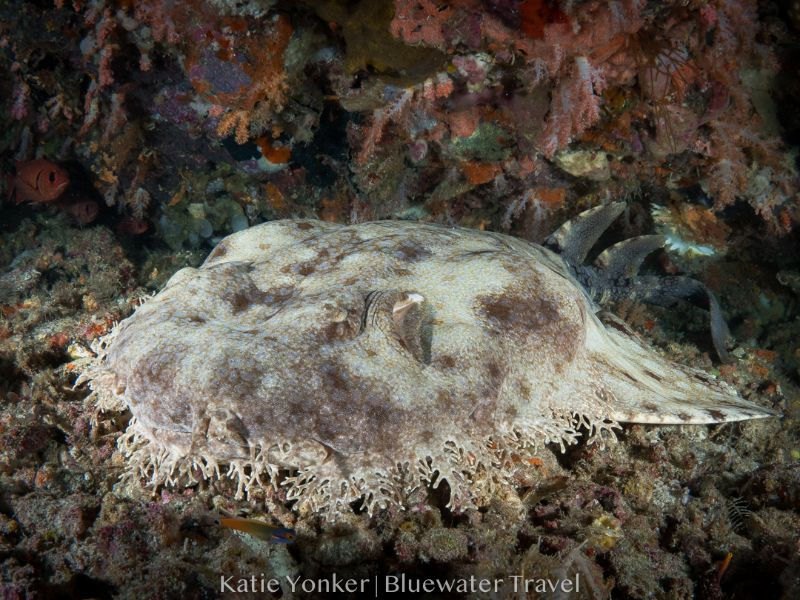
Tasseled wobbegong shark. Captured by Katie Yonker in Raja Ampat.
Cenderawasih Bay , in the northwestern tip of West Papua, is best known for up-close whale shark encounters ; while the untouched Triton Bay in the south tip of the province offers excellent biodiversity, due to its incredibly nutrient-rich water which in turn makes the visibility rather poor. Whale shark diving is also possible in Triton Bay.
A 10-night liveaboard trip is usually the minimum to see Raja Ampat's best sites from north to south in one visit, but various shorter and longer variations are available year-round, often in combination with other dive regions in Indonesia. Discover what we experienced during our 2024 group trip to Raja Ampat .
View all liveaboards and dive resorts in Raja Ampat or learn more about diving Raja Ampat .
- Diving Season: Year-round.
- Difficulty: Intermediate to Advanced. Beginners might not be able to dive some of the top sites.
- Nearest Airport: Sorong (SOQ). Some liveaboard trips may depart/arrive from/to different towns, so be sure to check where your trip departs from.
- Topside Activities: Limited, but there are many snorkeler friendly sites. Land-based visit to see the local villages could be arranged.
Other Destinations
10. Wakatobi
Exclusive area with some of the world's most pristine reefs.
Wakatobi National Park is another off-the-beaten-path dive vacation spot offering some of the world's richest marine biodiversity . This marine protected area is comprised of 4 main islands: Wangi-Wangi, Kaledupa, Tomia, and Binongko.
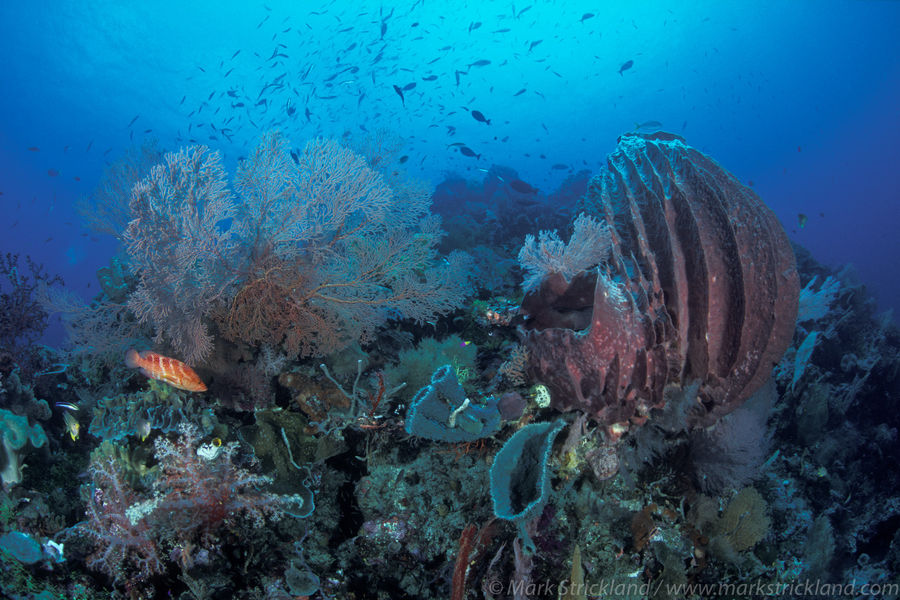
Reefscape photo taken in Wakatobi by photo pro Mark Strickland .
The reefs at Wakatobi, which was declared a national park in 1996 , are extremely healthy and offer unique large coral formations, various sea fans, and sponges overflowing with marine life. The underwater topography is no less unique, featuring various walls, ridges, and overhangs. While it's not the place for large pelagics, eagle rays and reef sharks can typically be seen on a Wakatobi trip.
There’s no shortage of macro life in Wakatobi since it’s home to any nudibranch species, rare invertebrates, various seahorses, cuttlefish, and frogfish in the lineup. Sweetlips, lionfish, jacks, angelfish, leaf scorpionfish, and other tropical fish can also be found while diving in Wakatobi.
Divers can opt to stay on a liveaboard boat or at a resort; the choice is entirely yours. To date, there is only one liveaboard that stays in Wakatobi year-round, the Pelagian , but there are a few other liveaboards that visit Wakatobi during the monsoon season in southern Raja Ampat from July to September.
Check out this Wakatobi trip report and photos to learn what it's like to dive the area or see dive resort and liveaboard options in Wakatobi.
- Diving Season: Year-round.
- Nearest Airport: Bali (DPS) is the international gateway for reaching Wakatobi. You'll need a connecting flight to Wakatobi, typically through a chartered airplane. Contact us for assistance.
- Topside Activities: Limited, but there are many snorkeler-friendly sites. Land-based visits to see the local villages can be arranged.
Other Great Dive Areas in Indonesia
There's no surprise that new scuba diving destinations keep popping up in this country. After all, it's the world's largest archipelagic country! Check out our list of dive areas off the beaten path in Indonesia . Is there another dive destination in Indonesia that should be on this list? Let us know your thoughts !
List of Destinations

Liveaboards & Dive Resorts in Indonesia
Interested in booking a dive resort or liveaboard in Indonesia? Bluewater Travel has lots of experience booking trips to Indonesia and over 70+ other destinations in the world. We are experts in boats, resorts, diving, and logistics. We can provide recommendations and help plan your trip from A to Z at no additional cost than doing it all yourself! To get started:
View our selection of Dive Resorts in Indonesia to find one that suits you best
Need recommendations? Contact us via email or by writing to us through the live chat box!
LOOKING FOR A LIVEABOARD IN INDONESIA?
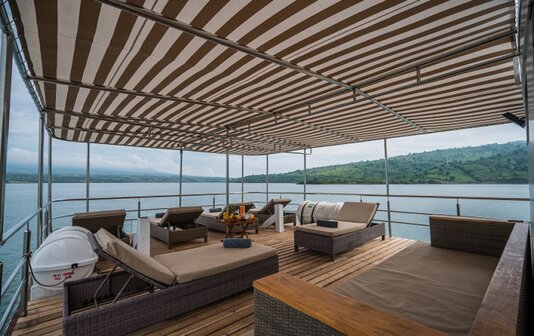
The MY Oceanic and SMY Ondina are two top choices! They have been operating for more than 20 years, pioneering many of the most reputed areas in the region. Their itineraries visit Raja Ampat, Komodo, Alor, Ambon, Cenderawasih Bay and the Banda Sea, giving you easy access to some of the best dive sites in the world. If you want to know more about these two liveaboard options, don't hesitate to contact our expert dive travel advisors at [email protected] .
Back to Menu
Indonesia Travel Information & TIPS
About the country.
This archipelagic country hosts over 13,466 islands, 922 of which are inhabited, and many with world-class dive sites. There are 5 main islands and 2 major groups of islands across 3 different time zones: GMT+7 ( West Indonesia ), GMT+8 ( Central Indonesia ), and GMT +9 ( East Indonesia) . You're completely spoilt for choice when it comes to choosing just some of the most beautiful Indonesian islands to visit out of all the possibilities.
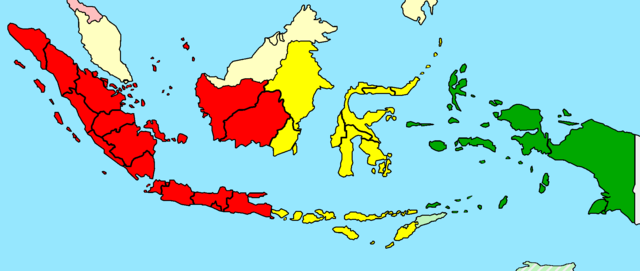
Red = West Indonesia, Yellow = Central Indonesia, Green = East Indonesia. Source: commons.wikmedia.org
In the west you've got Sumatra, Java, and Kalimantan ( Borneo ); then Sulawesi and Lesser Sunda Islands (Bali and Nusa Tenggara) in the center; and the Maluku Islands and Papua (New Guinea) in the east.
Most of Indonesia's best dives are spread across Central and East Indonesia, with the exception of Derawan Islands in Kalimantan, and Pulau Weh, in the northern tip of Sumatra.
Back to Menu
BEST TIME TO DIVE INDONESIA
Most of Indonesia can be dived year-round, with March to October being the most popular time to dive in many areas. This period marks the dry season in most parts of the country, except for some dive areas like Ambon and southern Raja Ampat, where most rainfall occurs from May/June to October/September due to the southeast monsoon . It's best to visit these areas in November to April for optimal dive conditions, and Raja Ampat is one of our top destinations to dive in December .
Weather & DIVING CONDITIONS
Generally speaking, Indonesia's climate is almost entirely tropical, with May to September as the dry season and October to April as the rainy season, with heavier rainfall from December through February.
However, the opposite might be true for certain dive areas in Indonesia, like Raja Ampat and Ambon, and the best time of year to visit Indonesia really depends on where you intend to stay in the country.
The water temperatures remain quite consistent throughout the country, hovering at 26°-29°C (82°- 85°F) year-round. However, the diving conditions and difficulty in Indonesia vary greatly, depending on where and when you dive.
For instance, you'll find colder sites and areas such as at Crystal Bay, the Mola mola hotspot in Bali where the temperatures drop to 18°-24°C (64°-75°F). That said, don't forget to review the recommendations for the dive area that you plan to visit or consult your travel advisor before booking a trip!
How to get to Indonesia
How you get to Indonesia depends on where you are traveling from, but there are international airports in some major cities. Domestic flights within Indonesia are more challenging so we've prepared a helpful guide to booking domestic flights .
Jakarta (CGK) is the main travel hub for visiting Raja Ampat, Alor, and most other remote areas in Indonesia.
Bali (DPS) is where you need to fly to dive Bali, Komodo, and Wakatobi. Flights to other areas such as Manado, and other remote areas are available, but the schedules tend to be less convenient than flights out of Jakarta.
Manado (MDC) also serves international flights and could be convenient if you're flying out of major Asian cities such as Kuala Lumpur (KUL) or Singapore (SIN).
Booking A flight to Indonesia
Flight delays and cancellations are quite common in Indonesia, and your trip needs to be carefully planned to avoid any unpleasantness while traveling in and out of the travel destination of your choice,
We highly recommend asking your travel advisor before booking international flights and domestic flights.
We can give you recommendations, including how much time you need to allow between connecting flights and which hotel to book before and after your liveaboard, all at no additional cost to doing it yourself. Feel free to contact us for assistance with choosing the best flights!
Back to Menu
Other Things to Do in Indonesia
The variety of land-based activities in Indonesia really depends on where you are and whether you stay at a resort or on a liveaboard. Most dive regions in Indonesia, except for Bali, are very remote and offer little other than diving, hiking, birdwatching, and cultural tours.
Our staff at Bluewater Travel can arrange a land-based extension before/after your dive trip based on your preferences and requirements. Don't hesitate to contact us !
- Currency: Indonesian Rupiah (IDR)
- Language: Bahasa Indonesia. English is widely spoken by dive liveaboard and resort staff.
- Time Zone: UTC+7 (West Indonesia), UTC +8 (Central Indonesia), and UTC +9 (East Indonesia).
- Electricity: 220 volts, with 2 round pin plugs (European Standard).
- Safety: Indonesia is generally fairly safe, with a low violent crime rate. Use common sense as you would in any busy travel destination or remote area.
- Vaccines: No mandatory vaccinations for US visitors. Generally speaking, it is recommended that you are up to date with Typhoid, Tetanus/Diphtheria, Hepatitis A, and Polio for any trip to the tropics. Malaria prophylaxis is strongly recommended if you plan to go ashore around dawn or dusk, especially for land-based resorts in certain rural areas in Indonesia. Check with your doctor for specific recommendations.
Book Your Next Trip to Indonesia
We can help you plan your dream dive vacation based on almost 2 decades of our team's combined experience. With Bluewater you never pay more and often pay less! And yes, we do accept credit card payments and we don't charge any fees!
Call us today at +1-310-915-6677 , email us [email protected] , or write to us in the live chatbox!
Further reading
See also these useful resources from our sister websites, Bluewater Photo and Underwater Photography Guide .
Best Dive Destinations for Underwater Photography
Best Macro Photography Destinations
Best Underwater Cameras
Wet Wide Angle Lens Buyer's Guide
Wet Macro Lens Buyer's Guide
Best Underwater Photography Equipment
BE THE FIRST TO GET NEWS AND SPECIALS
Sign up for the mailing list today

310-915-6677 [email protected]
- OUR DIVE TRAVEL EXPERTS
- TERMS OF SERVICE

Indonesia Scuba Diving Resorts & Liveaboards
Diving in indonesia.
Diving in Indonesia is incredible and suitable for beginning to seasoned divers! It’s an epicenter of biodiversity and home of more marine life than any other region in the world. It features 17,508 islands and is located at the heart of the coral triangle, making an Indonesia dive resorts or liveaboard a diver’s paradise. With over 3000 different species of fish, 20% of the world’s coral reefs, deep trenches, 600 coral species, countless macro life, and World War II wrecks, Indonesia offers some of the most fantastic dive areas that surpass what you might expect from a single nation.
Capture The Most Breathtaking Photo’s and Video On Your Next Indonesian Dive Trip!
Experience the cool waters of Komodo, drift through to the classic fields of Raja Ampat, and experience the numerous marveling fish in the Banda Islands. If you are looking to capture some pictures, the wild critters of Sulawesi await you!
Ultimate Dive Travel offers all packages which suit the visitor’s needs, including scuba diving Indonesia packages in Gangga Island, Kungkungan, Sulawesi, Lembeh, and Papua where you can stay in comfort on the doorstep of the most amazing marine life. Indonesia dive resorts allow divers to explore and experience the diversity of marine life in the area. Indonesia dive resort packages have been scaled up to a level of relaxation in beautiful water cottages, and offer guests a perfect view of the ocean from the verandas.
Looking For Liveaboard Dive Trips in Indonesia…We’ve Got You Covered
If you are looking for liveaboards Indonesia, Komodo and Raja Ampat are the primary locations that offer superb sceneries. With these liveaboards Indonesia safaris, you can explore remote sites and diverse water bodies comfortably.
For plenty of fish action, encounters with sharks and mantas or Komodo dragons, Indonesia Dive Resort offers guests an experience that exemplifies the explanation of a beautiful boutique dive vacation. Experience-looking divers can visit such deep places as Banda Island, Papua, and many more while on tour.
Fantastic times await you in Indonesia!
Contact us, and we will help you plan your dive trip
Resorts for Diving in Indonesia
Bunaken oasis dive resort.
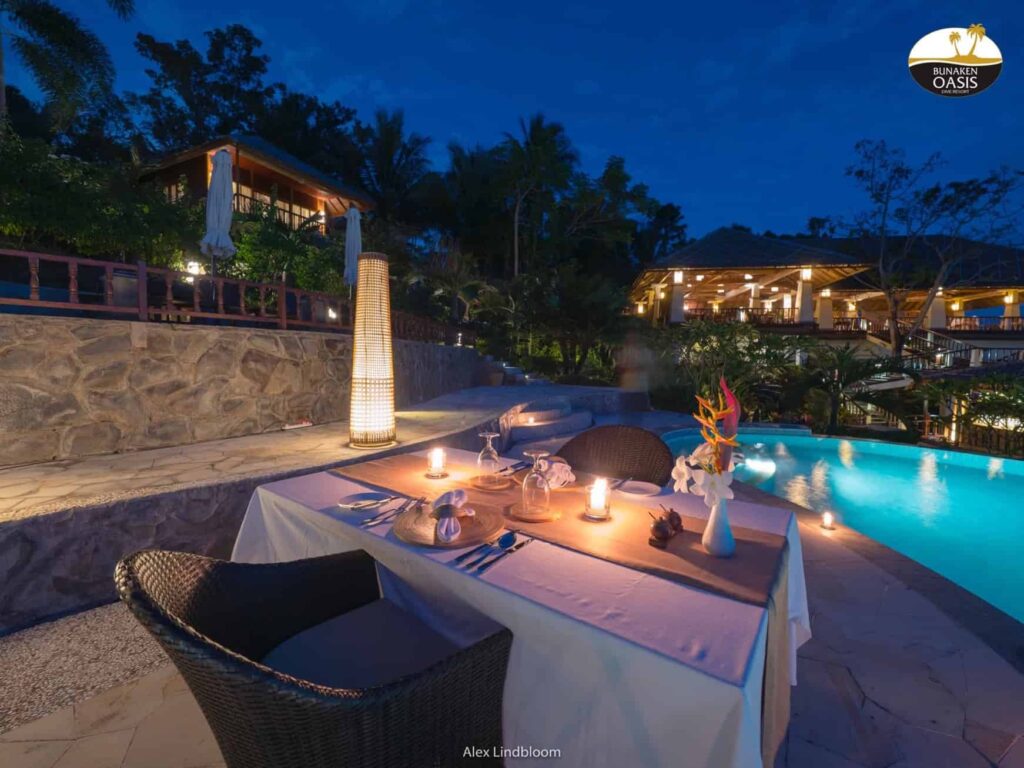
Bunaken Oasis redefines diving in Bunaken. Positioned very much at the luxury end of the spectrum, our aim is to provide a 5-star luxury diving experience whilst keeping our ecological footprint to a minimum.
The resort offers 12 large, traditionally built villas, including one family villa with two bedrooms, and one near the Long House for those who may have difficulty walking.
Gangga Island Resort
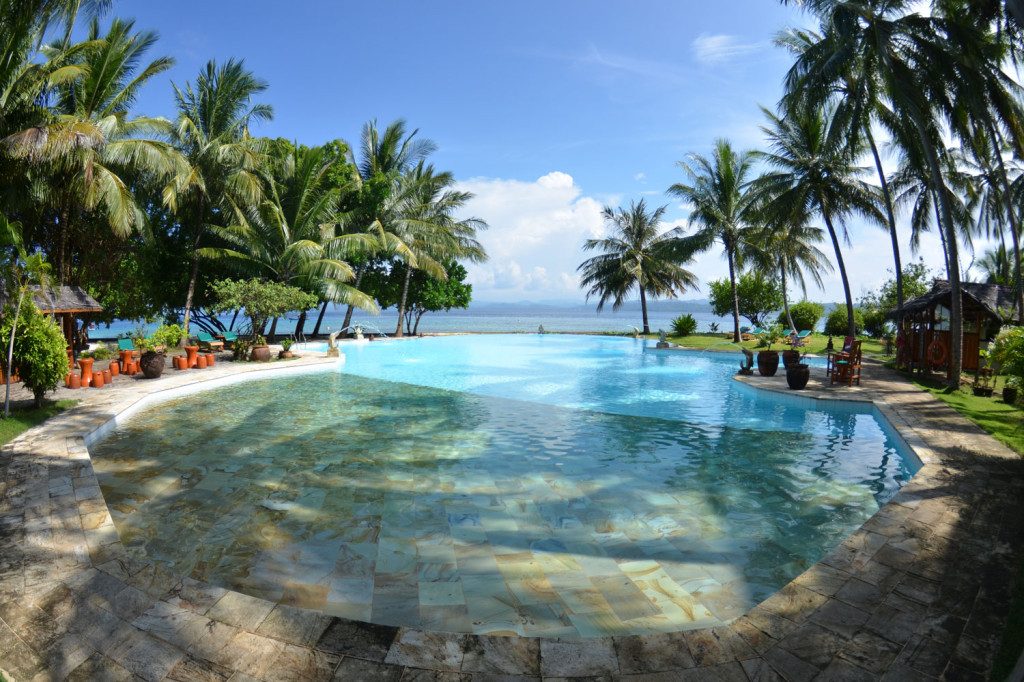
Gangga Island Resort & Spa provides ultimate seclusion and relaxation. Built under shady palms and surrounded by tropical gardens, Gangga Island Resort consistently meets the highest international standards of service and comfort, making it the perfect place for holidaymakers, honeymooners, and SCUBA diving enthusiasts.
Lembeh Resort
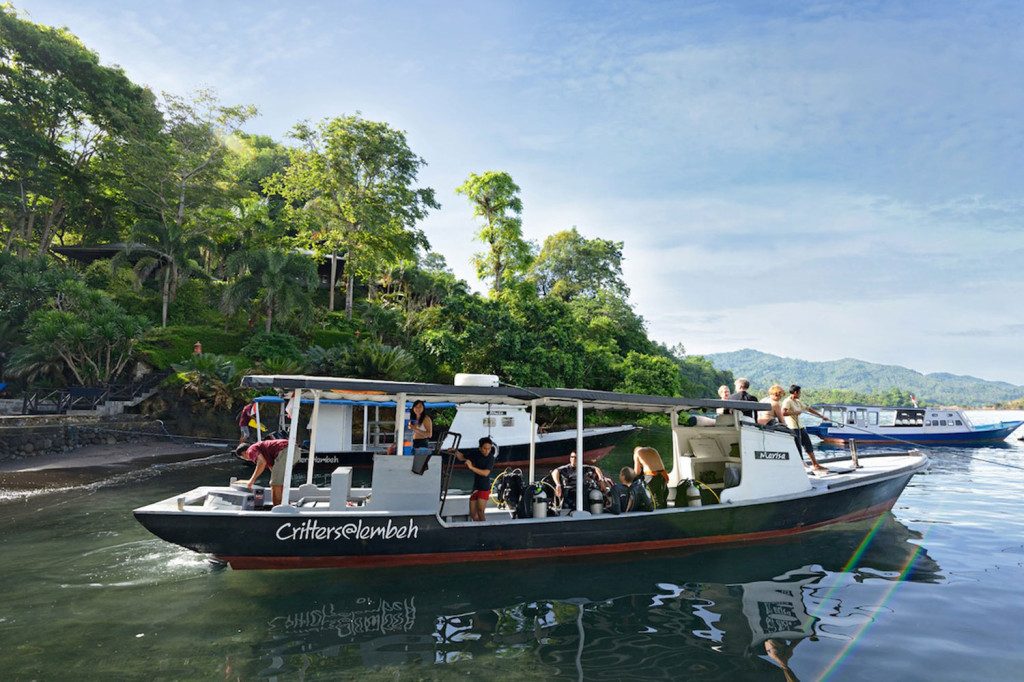
Lembeh Resort offers comfortable accommodations set in beautifully landscaped tropical gardens overlooking Lembeh Strait. For a truly exceptional experience in a relaxed and professional atmosphere, Lembeh Resort is a great Scuba diving choice.
Papua Paradise
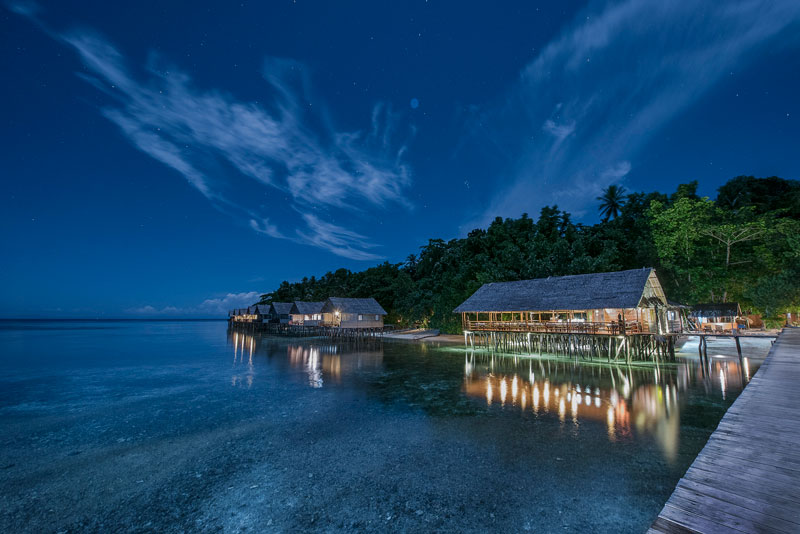
Built on an idyllic tropical island, surrounded with pristine reefs and unspoiled ora and fauna, Papua Paradise Eco Resort brings you closer to Mother Nature at her best. Situated in the heart of Raja Ampat the resort has all the essential standards of service and comfort, making it an unforgettable holiday for divers, snorkelers, bird watchers and nature enthusiasts.
The Pavilions Bali

Step into the private world of The Pavilions Bali. Retreat to your own villa, relax in the seductive setting and indulge in the quiet intimacy.
Turn into the elegantly shaded bamboo driveway of The Pavilions Bali to receive a warm and serene welcome to start your escape. Our 25 private villas hold the traditions of Balinese design alongside all the modern and personal touches expected from a luxurious boutique resort.
SCUBA Seraya - Bali
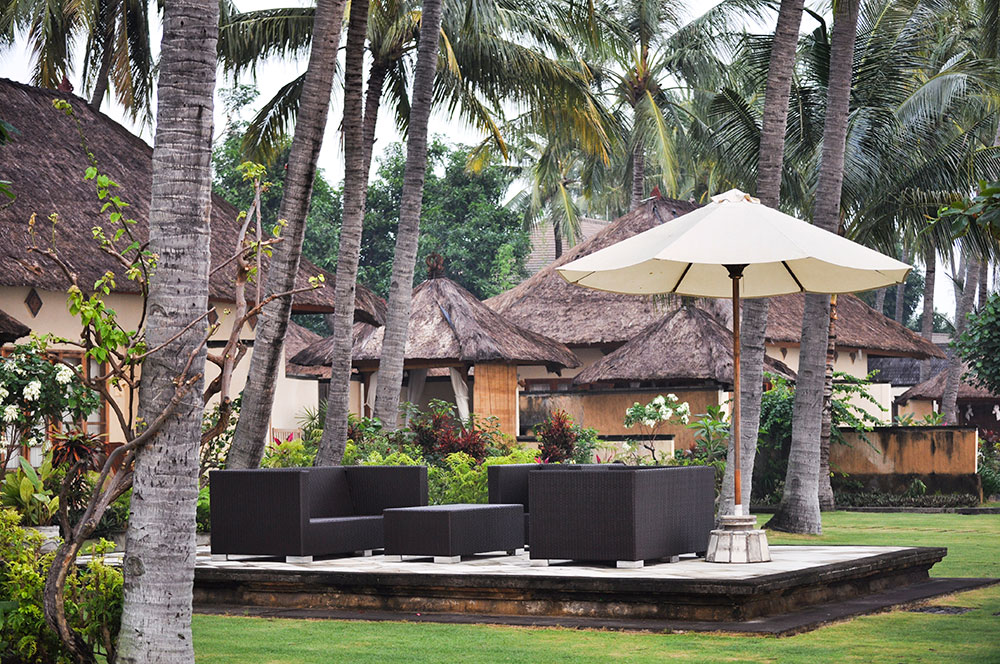
Bali charms visitors from all over the world. Known for its balmy weather, lush green rice fields, tropical vegetation, deep azure blue seas and rich exotic culture, Bali rates as one of the world’s top vacation destinations.
Sorido Bay Resort
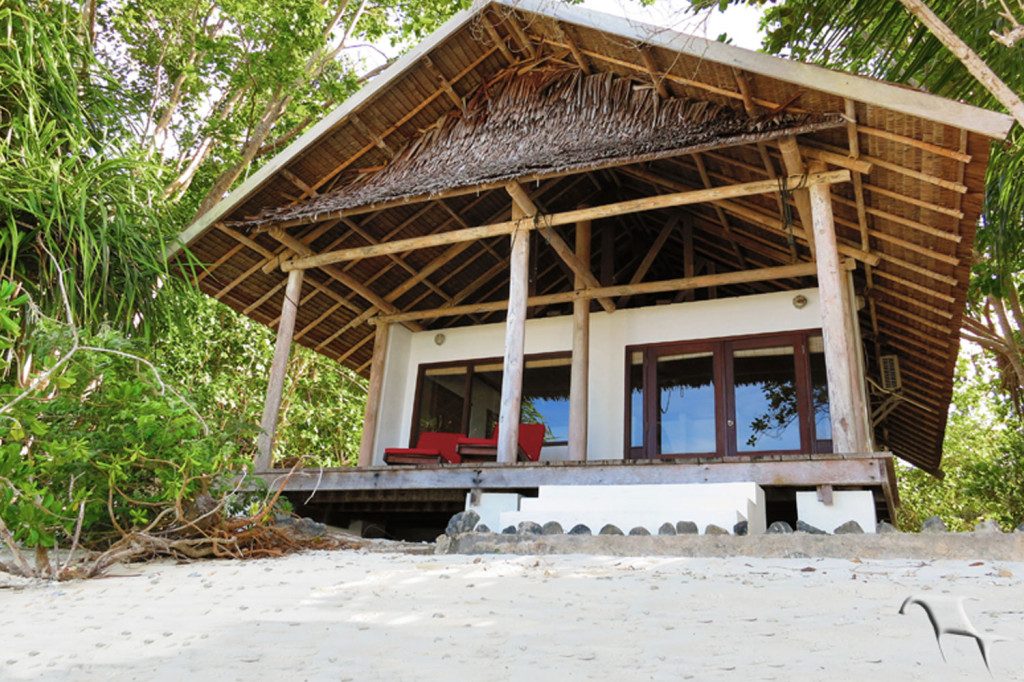
Experience Western-style comforts in a traditional Papuan setting. Located on a beautiful deep lagoon and white sand beaches of Kri Island in West Papua, the all-inclusive scuba dive resort in Indonesia is central to the most spectacular dive sites in Raja Ampat.
Tasik Ria Resort
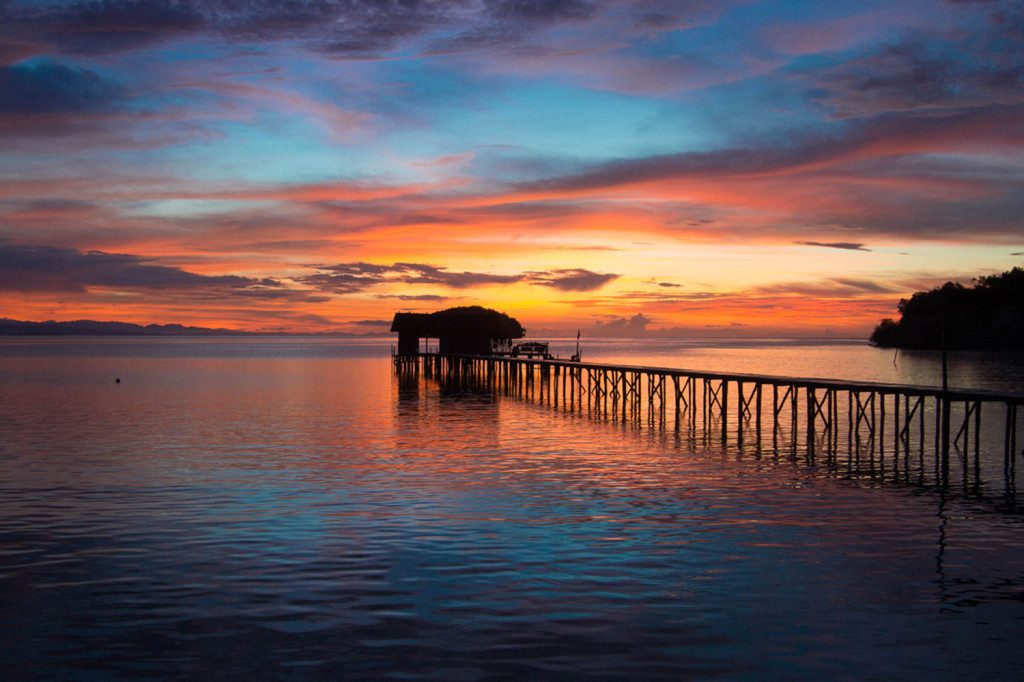
When you’re thinking of taking a diving vacation, you ideally want the best from every aspect of your hard-earned time out. Because, at Tasik Divers, we’re divers too, we totally understand what you want and work hard to deliver it.
Papua Explorers Resort
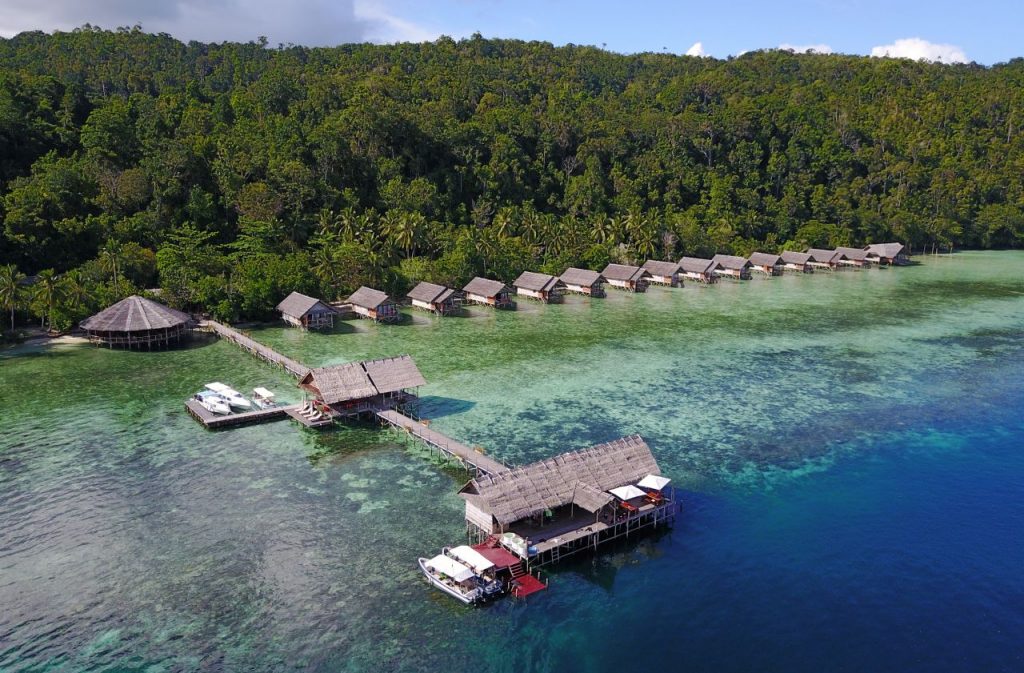
Bringing together over 25 years of dive industry experience from all over the world, our management team is comprised of a team of 7 people (including 6 instructors) with a collective 12 years experience working in the Raja Ampat region.
Indonesia Liveaboards
Gaia love liveaboard.
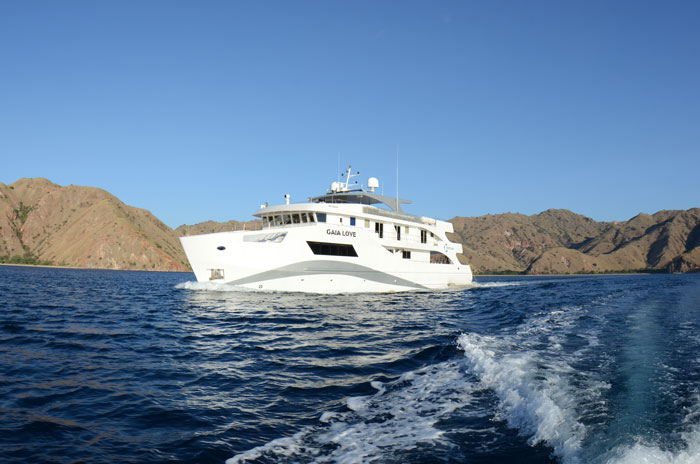
The Gaia, meaning “Mother Earth,” represents a new breed of Indonesian liveaboards. Designed and built in Batam, Indonesia, it is specifically for sailing and exploring the surrounding waters. Ultimate Dive Travel was the first American wholesaler to check out the liveaboard in person. The amount of detail that has gone into customizing the boat according to divers’ needs is nothing short of impressive.
Coralia Livaboard
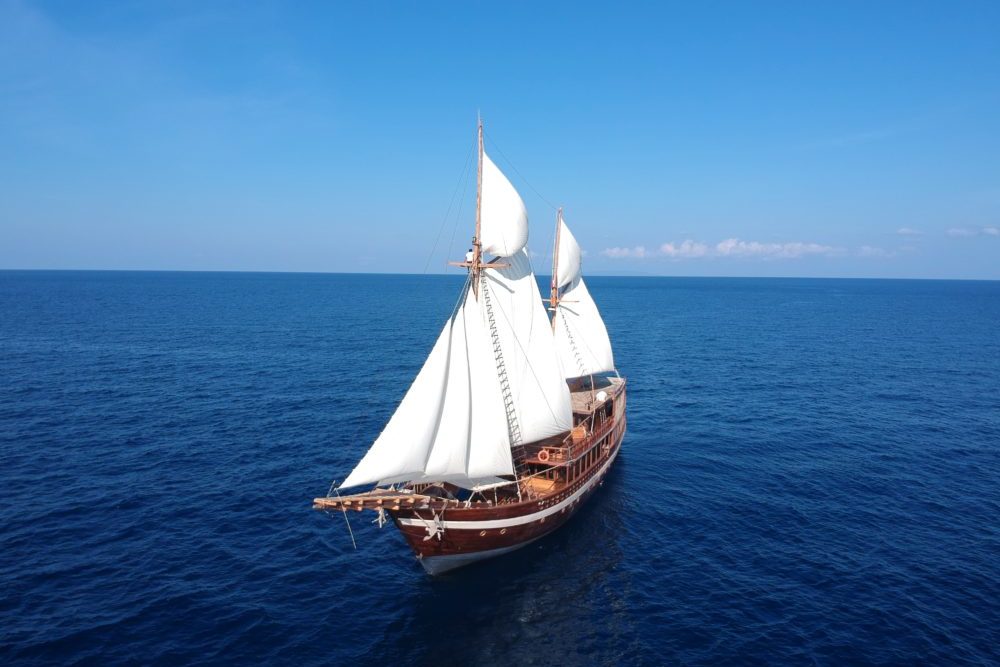
Coralia is a liveaboard that is committed to creating sustainable and unforgettable human–nature experiences while protecting the oceans and developing the local communities. The eight spacious cabins offer modern comfort and style while incorporating traditional details. With Coralia’s length of 48 meters, her decks are spacious and offer plenty of spots to enjoy the view, dine, sunbathe, or simply relax.
Dewi Nusantara
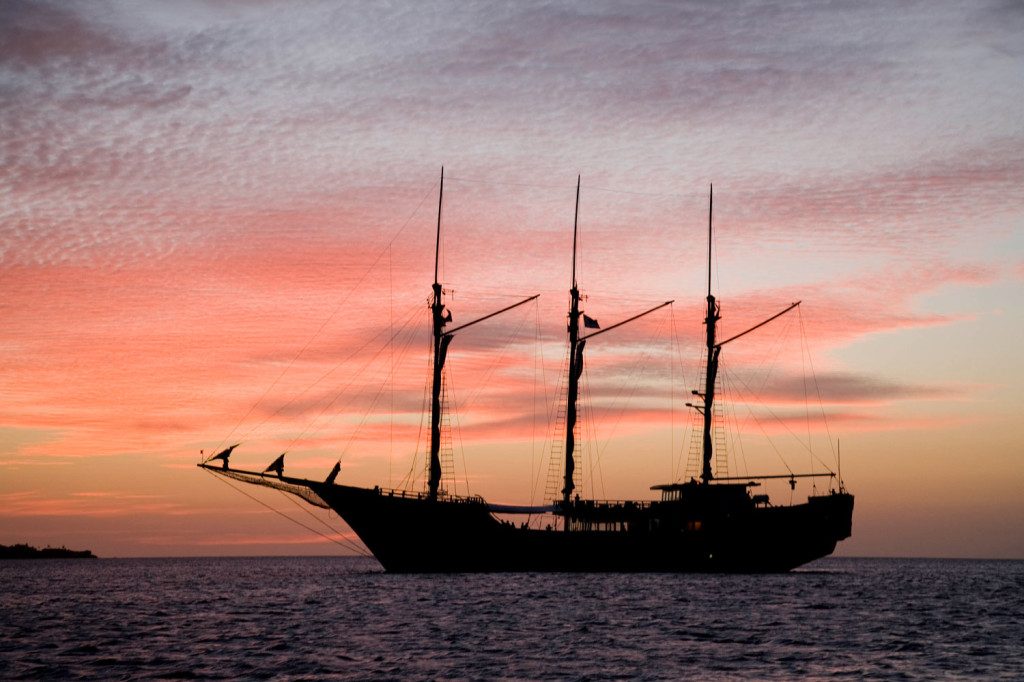
The Ultimate Luxury Liveaboard Diving Adventure, The Dewi Nusantara team has long been at the very forefront of the dive and cruise liveaboard industry in this fascinating area of Asia. After 16 years of continuous operations, our experience in the dazzling waters of the Indonesian archipelago is unparalleled.
Samata Luxury Liveaboard
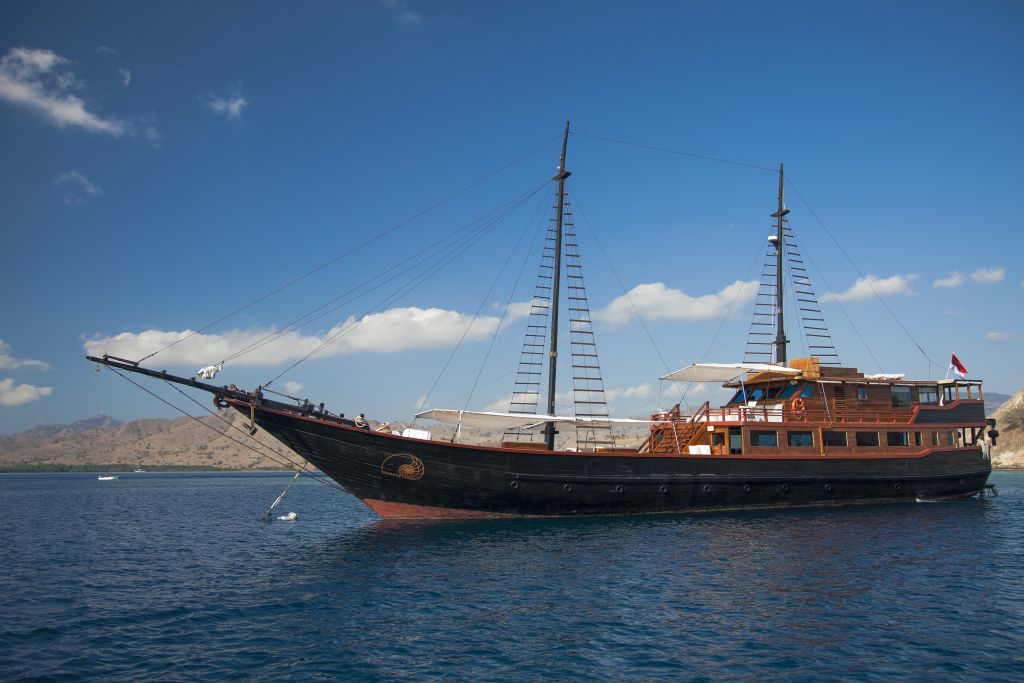
Samata Luxury Liveaboard is an ultra-luxury private charter phinisi yacht based in Indonesia, ranked by Asia Pacific Boating Magazine as one of Asia’s best 50 Superyachts. Combines traditional Phinisi design with contemporary European styling. Measuring 42 meters from bow to stern, Samata boasts three decks, open-plan living, and modern amenities. With a crew of 14.
Arenui Boutique Liveaboard
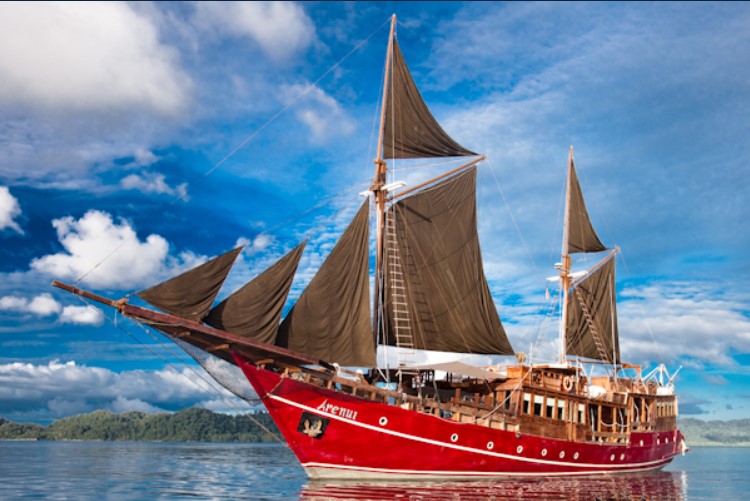
At the Arenui, we are proud and thrilled to have transformed a dream into reality: diving cruises without the hardship. The Arenui dive liveaboard is a traditional and magnificent Phinisi, a classic Indonesian wooden sailing vessel, set to explore the majestic underwater world of the Indonesian archipelago. Without a doubt we can boast one of the finest crews in Indonesia. With 22 crew serving a maximum of 16 guests, we aim to make your cruise a truly relaxing and first-class experience.
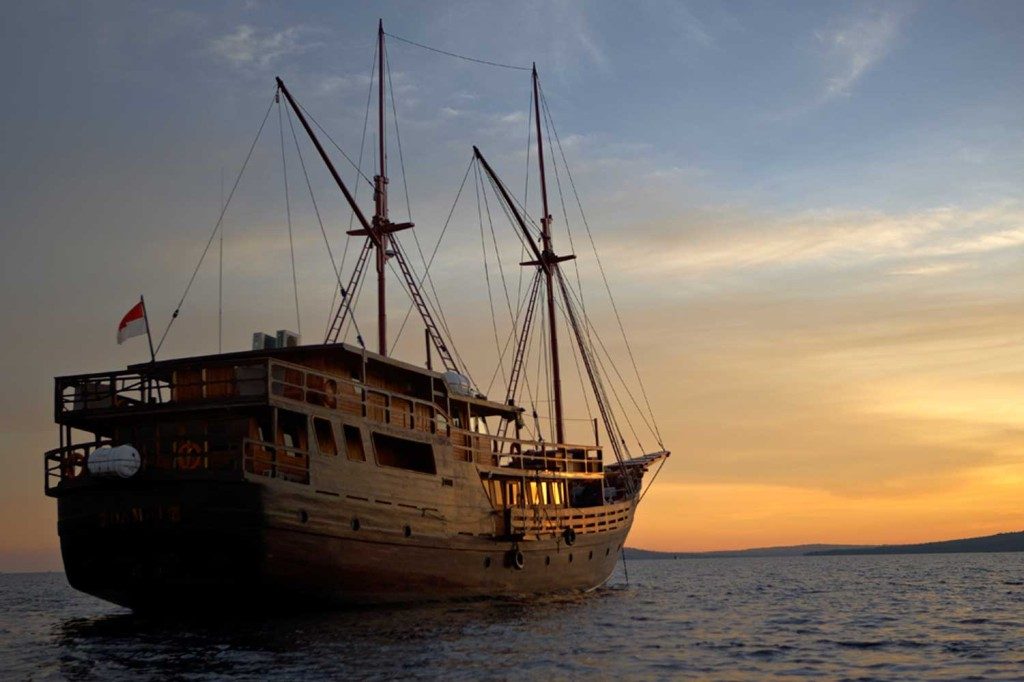
Specifically designed for divers the Damai I is equipped with the latest navigation, communication and safety equipment. It has an overall length of over 40 meters (130 feet) and a beam of over 8 meters (26 feet.) The vessel has been designed with three large deck areas for relaxing either in the sun or shade and 6 cabins and a maximum of 10 guests means more than enough room for everyone. Enjoy unlimited diving, gourmet meals including unlimited house beverages, land tours and your 1st spa treatment is on the house.
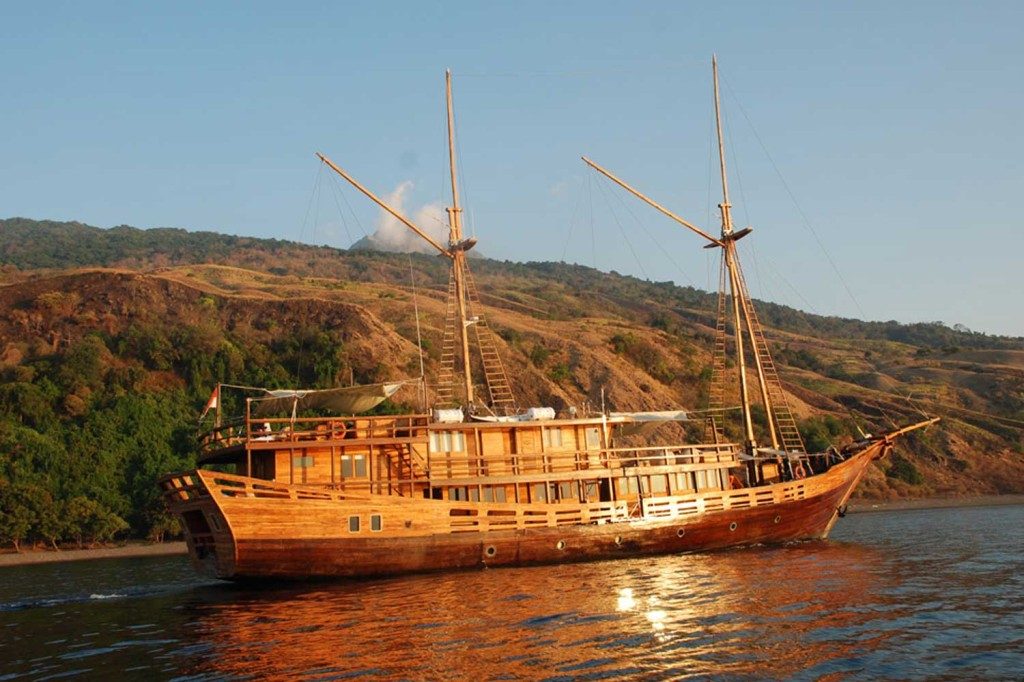
Specifically designed for divers the Damai II is equipped with the latest navigation, communication, and safety equipment. It has an overall length of over 40 meters (131 feet) and a beam of over 9 meters (29 feet.) The vessel is slightly larger than the Damai I ensuring three large outside deck areas with an outside dining facility, our famous massage, and spa treatment area and plenty of extra lounging and sunbathing space. There are 6 cabins and a maximum of 10 guests which means more than enough room for everyone. Enjoy unlimited diving, gourmet meals including unlimited house beverages, land tours, and your 1st spa treatment is on the house.
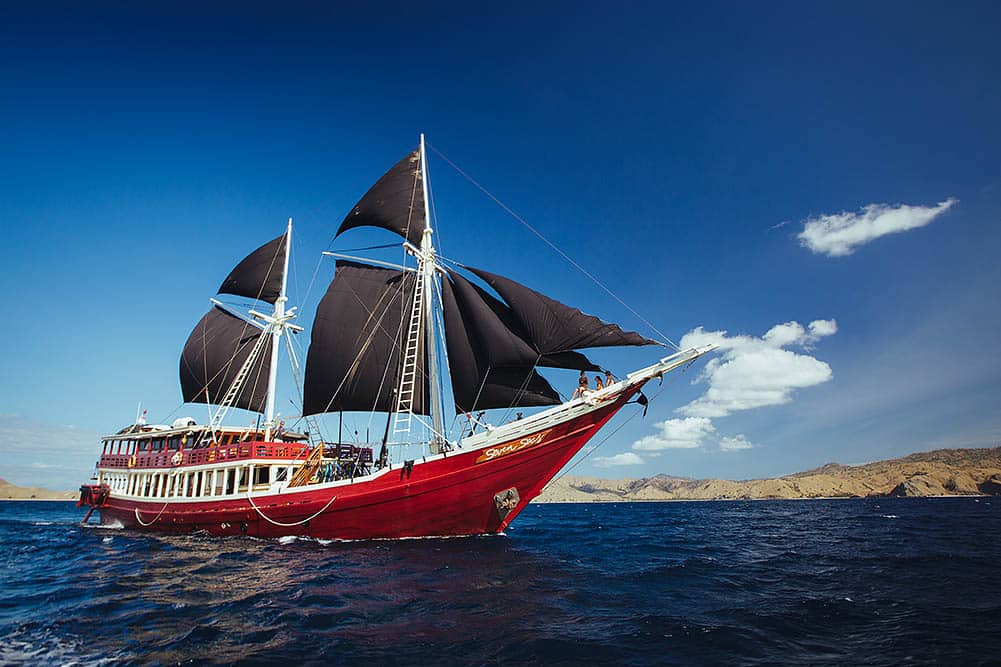
The Seven Seas is a 45m liveaboard Buginese schooner accommodating 16 quests in 4 double rooms and 4 twin rooms. The double rooms feature king size beds and the twin rooms house large single beds, bunk style. Each room has its own en-suite bathroom with showers, full sized WC and hairdryers. Built for comfort, the Seven Seas features a main lounge as well as a dining area both with air conditioning. The liveaboard SCUBA boat includes a lounging area with shaded lounge beds so that you can experience relaxation at its finest, live-aboard style.
MSY Seahorse
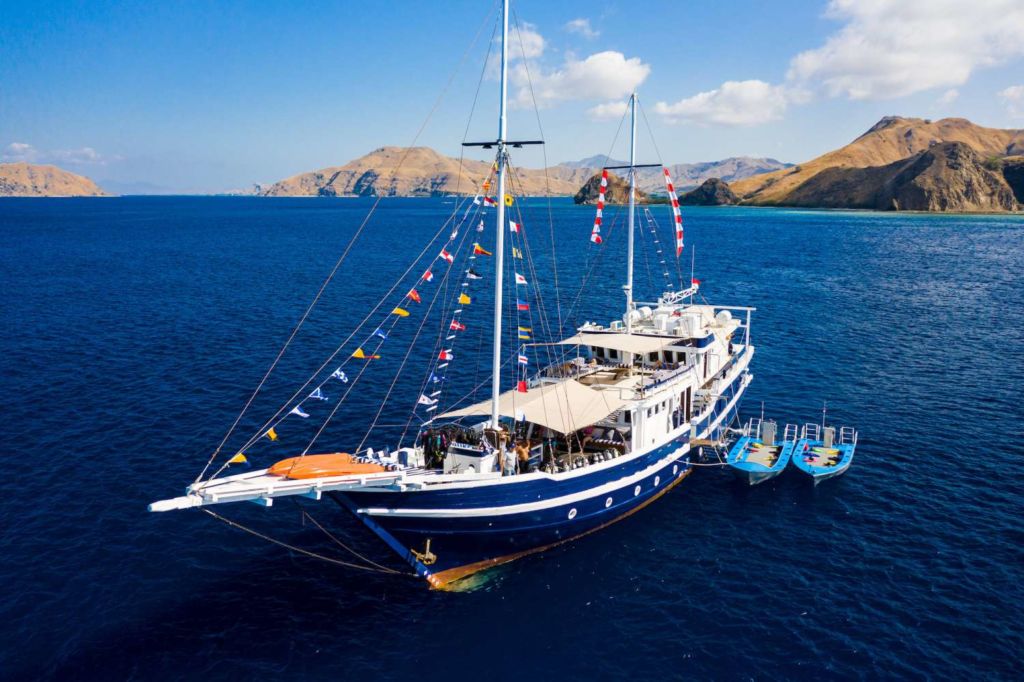
Adelaar Komodo Liveaboard
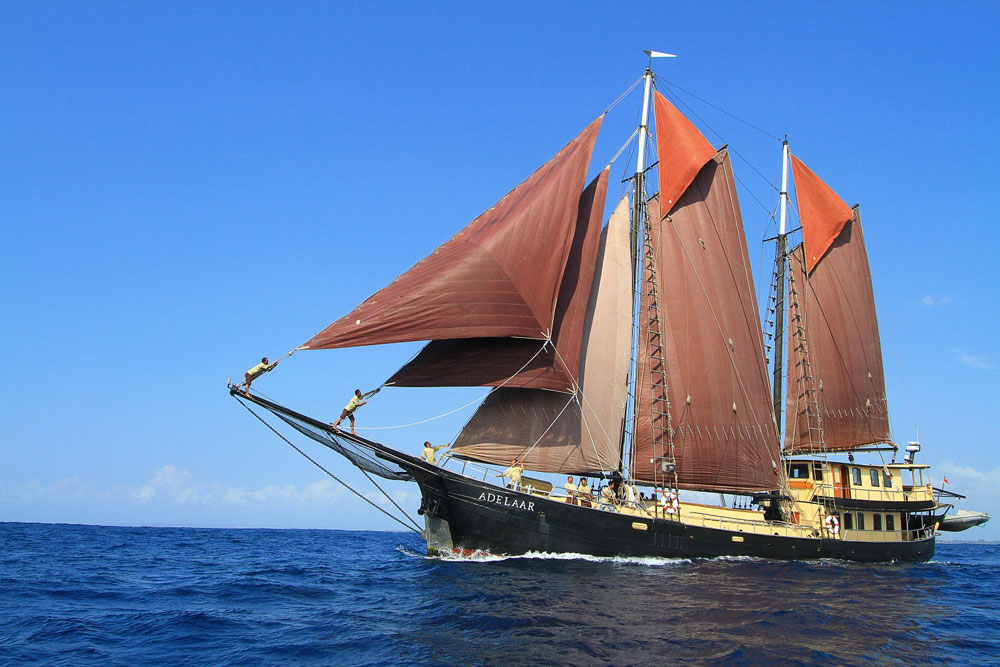
ADELAAR runs regular fixed departure cruises from Bali to Komodo and back all year round. Divers from around the globe join our signature 11 days 10-night intimate trips, to experience the spectacular dive sites in and around Komodo National Park. Whether a novice or seasoned diver, our guides will take you to explore these renowned world class dive sites. Between dives, relax and soak up the stunning imagery of wild Indonesia. Our journey begins in Bali, and as we set sail to the string of sleepy islands through to Komodo, you’ll notice life is so much better at sea. All this is done in comfort & style aboard our luxurious Komodo Liveaboard. Our schooner comfortably accommodates up to eight guests, in four exquisite cabins.
Call us today at (800) 737-3483 to book your dive trip to Indonesia. Or simply reserve your Indonesian dive trip online by clicking below.
DIVE KOMODO-SUMBAWA 19-27 May 2026
DIVE BEST OF BORNEO & WEST SULAWESI 14-25 Jun 2025
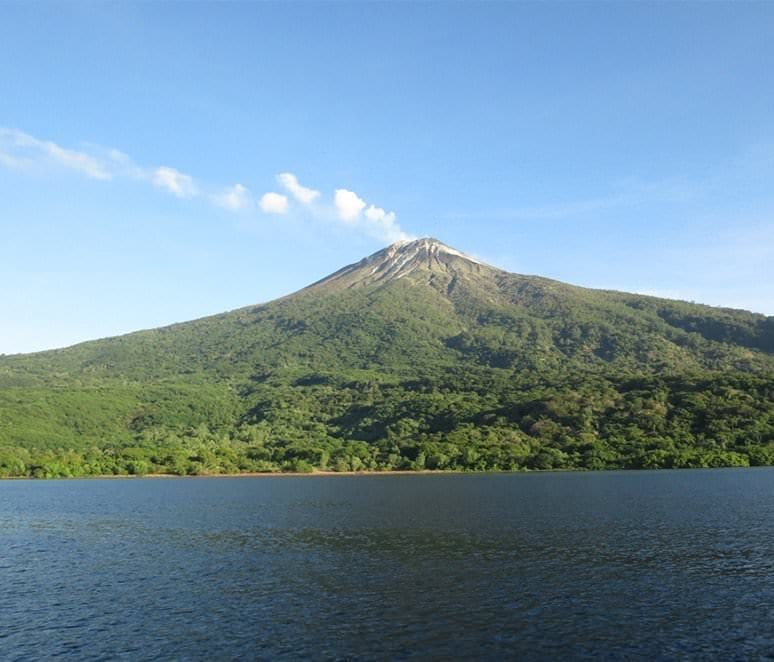
DIVE FORGOTTEN ISLANDS & ALOR 18-30 Apr 2024
LAST CABIN CONTACT US
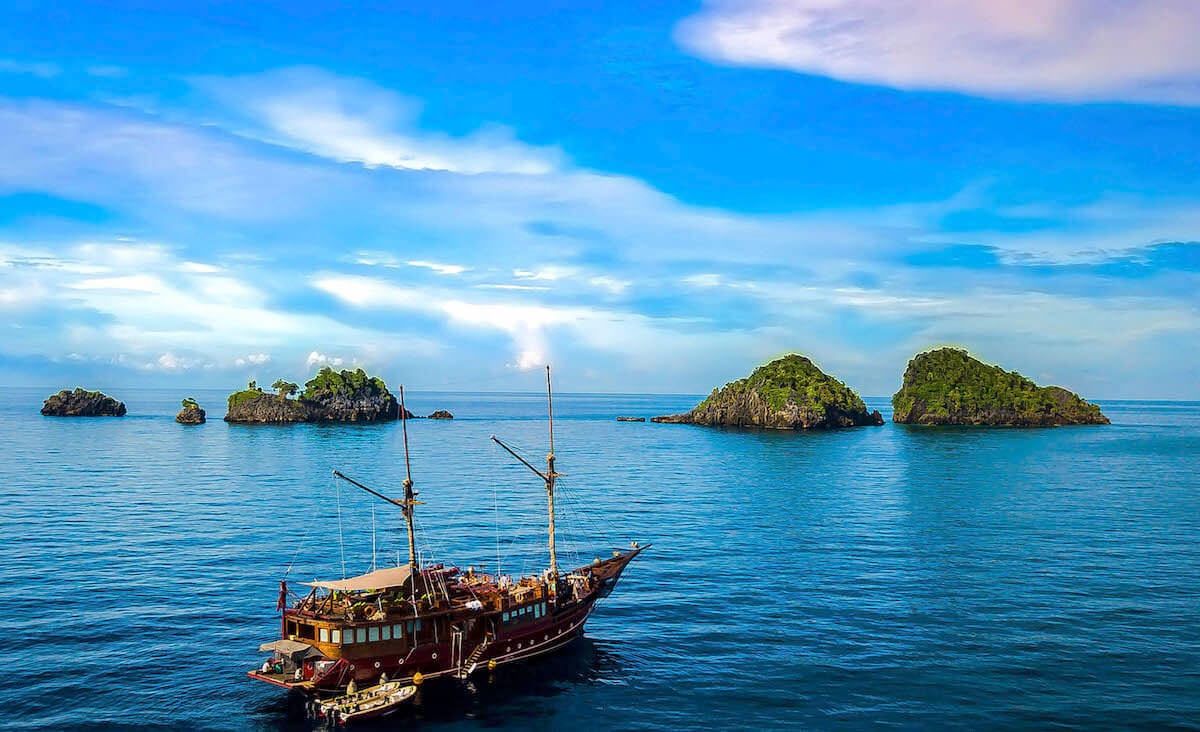
DIVE GREATER RAJA AMPAT 22 Nov-5 Dec 2024

SO, WHAT MAKES US SPECIAL?
Here at the Arenui, we have built a stunning wooden vessel that offers a taste of the local culture (a traditional Indonesian Phinisi) but fitted it with all the modern conveniences of a luxury hotel. We designed spacious boutique cabins that once again invite our guests to enjoy the country they’re visiting (local handicrafts and inspirations).
We added a luxury restaurant serving international and local cuisine (evenings are waiter served a-la carte) and added both an outdoor sky restaurant and a top-deck sky lounge for massages, sunbathing, relaxing and enjoying the island views.
Then we trained up an enthusiastic local crew, including two highly sought-after chefs and four eagle-eyed dive guides and four western cruise directors. With a total of 24 team members, our 16 guests are guaranteed a truly personalized service.
Next we chose to focus on diving the stunning Indonesian archipelago, a true remote paradise, packed with 5-star dive sites to match our 5-star liveaboard and crew.
Indonesia offers everything from healthy coral reefs to sandy critter hide-outs, with so much to see that one trip is never enough. Dive Komodo for incredible diversity from frogfish and nudibranchs to schooling jacks and mola-mola (oceanic sunfish).
Travel to the untouched reefs of Alor and Flores, before heading into the Banda Sea to dive the wonders of Maluku (and visit the famous Spice Islands) but don’t forget to make time for Raja Ampat and its world-famous gorgonian sea fans, enigmatic wobbegong sharks and manta rays.
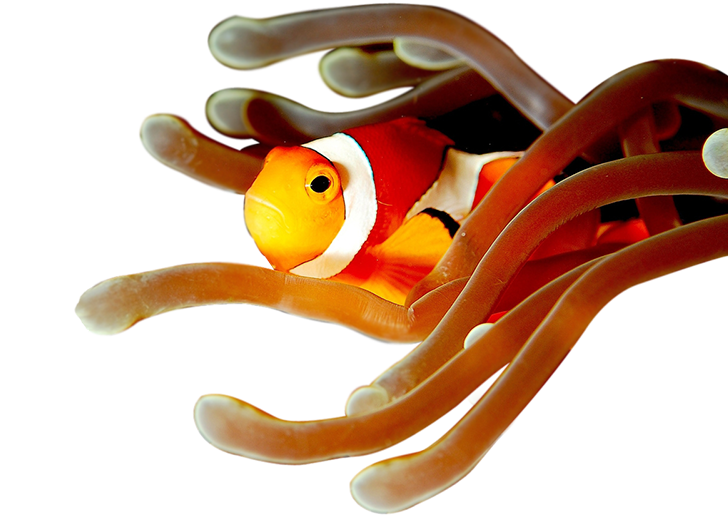
How to use this website
The aim of our website is to promote our luxury dive cruises but also to promote diving in Indonesia.
As such, we have tried to provide an extensive amount of information (and photographs) to show you more about the major dive destinations and also advice on travel within this incredible paradise! You will find pages dedicated to both the details of our boutique boat and our luxury services, as well as our diving practices and crew, but also about the best dive areas such as Komodo and Alor or Maluku and Raja Ampat, plus the practicalities of travel within Indonesia.
We recommend starting with a look at what makes us special (our concept). If you want more details on how our beautiful boat was constructed see the section on our vessel history, including the safety features and boat layout.
Once you find a trip or destination you are interested in, be sure to read more about the itinerary (including a map of the cruise route) by clicking the links from the schedule page. Or why not head over to our Facebook page and click on each ‘event’ to read more and find great video links too!
And don’t forget to sign up for our eNewsletters, to hear about last-minute spaces and interesting industry news too. Just fill in the form at the end of this page.
We hope this website will inspire you to visit Indonesia and dive in true luxury with the Arenui – the Boutique Liveaboard!
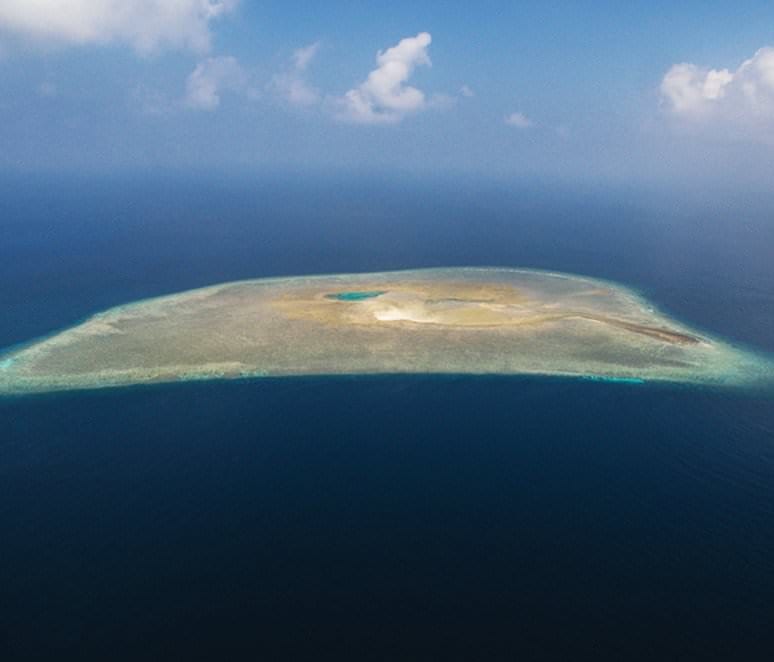
FORGOTTEN ISLANDS
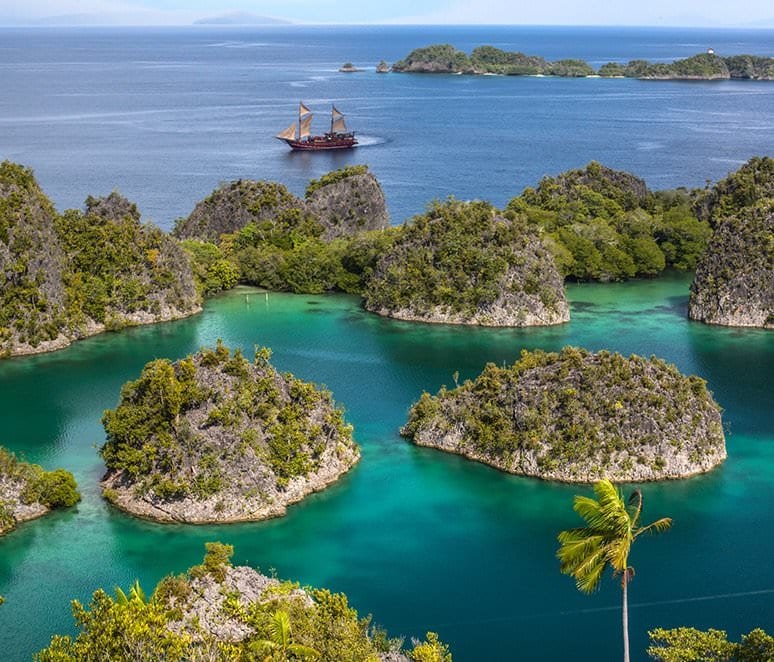
Maluku / Spice Islands
The boutique liveaboard.
Our slogan, “the Boutique Liveaboard”, expresses our vision of providing the highest quality in everything we do – from diving to dining, from our leisure activities to our exquisite accommodations – and, above all, providing outstanding service at all times to our guests.
As an example of this philosophy, we offer our guests the choice of both comfortable indoor and outdoor areas for relaxing and dining. During meals, there is always an extensive selection of dishes and a tantalizing list of fine wines. When resting in between dives, our guests have the possibility of indulging themselves in a relaxing massage on deck.
All amenities are provided for your well-being and we aim to offer a truly exceptional service to all on-board: you are all our special and honoured guests. In this respect, we believe that individual service with a personal touch makes all the difference. This personalized service, and the attention given to even the minute details of all aspects of our operations, are what differentiate the Arenui from conventional liveaboards.
Come discover for yourself the intimate, luxurious and warm atmosphere unique to the Arenui!
Subscribe to our Newsletter
ARENUI Indonesia's boutique dive liveaboard experience!

IN DIVE WE TRUST STRANGER ONCE FRIENDS FOREVER
15 things to know before going to Indonesia: culture, etiquette and safety

Dec 7, 2023 • 10 min read
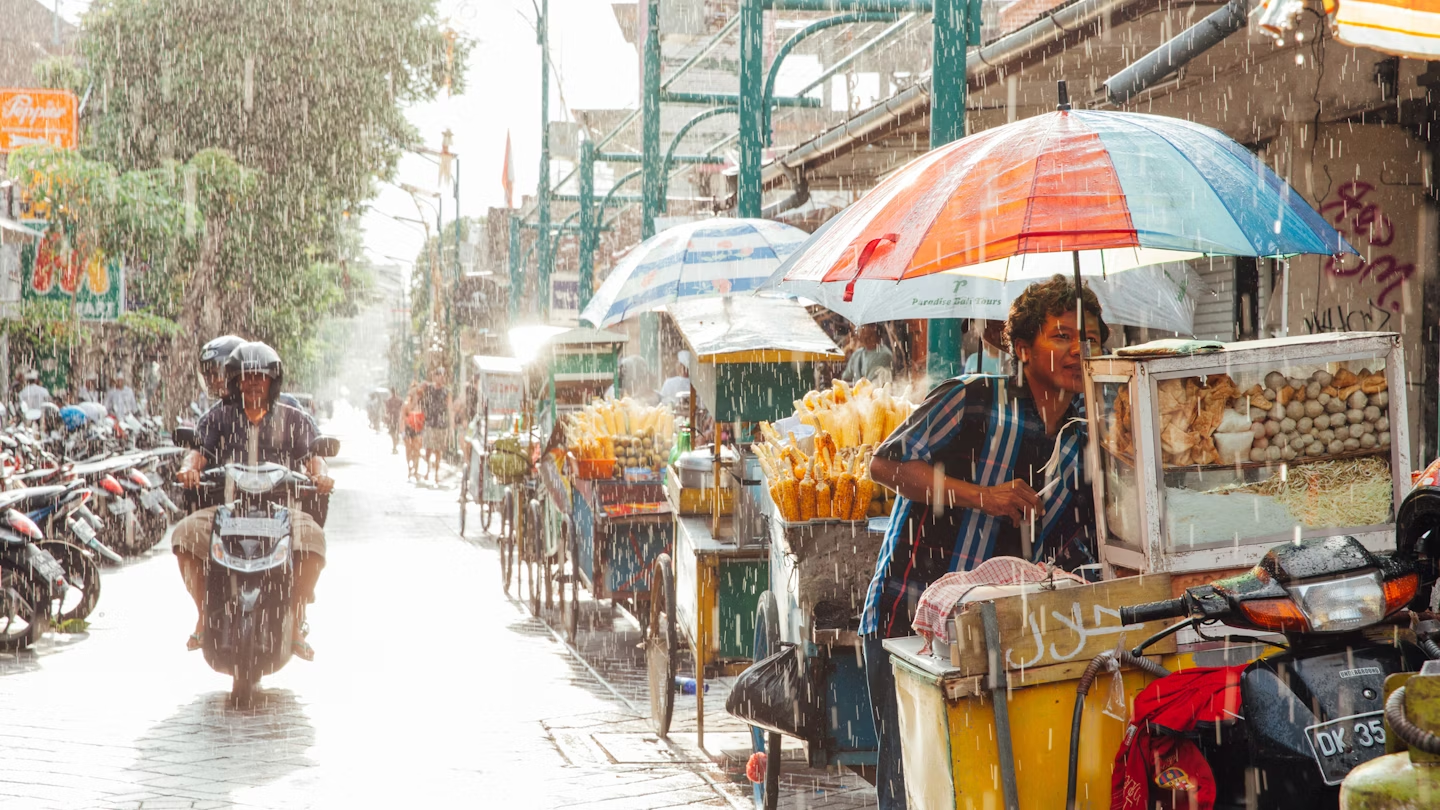
From etiquette to safety, here are 15 things you need to know before you go to Indonesia © ErmakovaElena / Getty Images
If you’re looking for culture, activities, wildlife or sheer adventure, Indonesia is one of the richest countries in the world. With an estimated 13,466 islands, it's a whopper too. But Indonesia beyond Bali and Lombok (and the Gili Islands ) remains largely unknown to many travelers. To pick just one example, Sumatra (80 times the size of Bali) is almost a world in itself. And yet people ask the question: “Is Indonesia worth visiting?”
Of course! This chain of islands – many culturally unique – stretches west to east across more than 5000km (3110 miles), making it one of the world’s most excitingly diverse countries. From getting ready before you go to important etiquette and safety information, here are 15 things you need to know to help you plan your trip to Indonesia.
1. Pick the best season depending on where you're going
Most visitors to Bali do their best to avoid the rainy season (normally November to March), but there is really no bad time to visit Indonesia. Even at the height of the monsoon, rains are normally short and sharp and can form an unforgettably dramatic sound and light show. You will often have several bright sunny days between relatively brief storms. There are benefits too in reduced crowds (and dropped prices) since this is also low-season… but the greatest disadvantage comes with the first rains of the year that wash plastic trash (one of Indonesia’s greatest problems) down the rivers and onto the beaches.
At other extremes of the archipelago, West Papua and the Maluku Islands tend to have their dry seasons between September and March. Giant Sumatra (1000km/620 miles long) and Kalimantan (Indonesian Borneo) are big enough to have weather patterns all of their own. As a general rule, March to October is a good bet for avoiding the heavy rains in these areas. This can be important in jungle regions since some areas might be inaccessible during the rains.
2. Choose the right visa
It is possible for citizens of the UK, USA, Canada and Australia to be granted a Visa on Arrival (VOA) at some international airports, seaports or land crossings. However, it is best to apply for an e-Visa (e-VOA) at least 48 hours before departure instead. This can also be extended for a further 30 days. The initial 30-day tourist visa costs around US$35. Make sure you have at least six months before your passport expires before departure.
If you're planning to stay longer in Indonesia to work or study, there are different visa options available. For citizens of other countries, check your visa options and apply online .
3. Learn a few words and phrases in Indonesian
It’s been said that one in 10 of all the world’s languages are spoken in Indonesia. Many islands have their own unique languages (some have hundreds), and English is spoken only in tourist areas. Fortunately for the traveler, Bahasa Indonesia (literally "Indonesia language") is spoken by everyone, with the exception of the youngest preschool children and some of the elderly in rural areas.
Indonesian is a relatively easy language to learn and people from all walks of life will appreciate even minimal efforts to communicate in their own tongue. (Bahasa Indonesia shares much in common with Malay, so your efforts to learn the language will also serve you on trips to Malaysia , Sarawak and Sabah ).
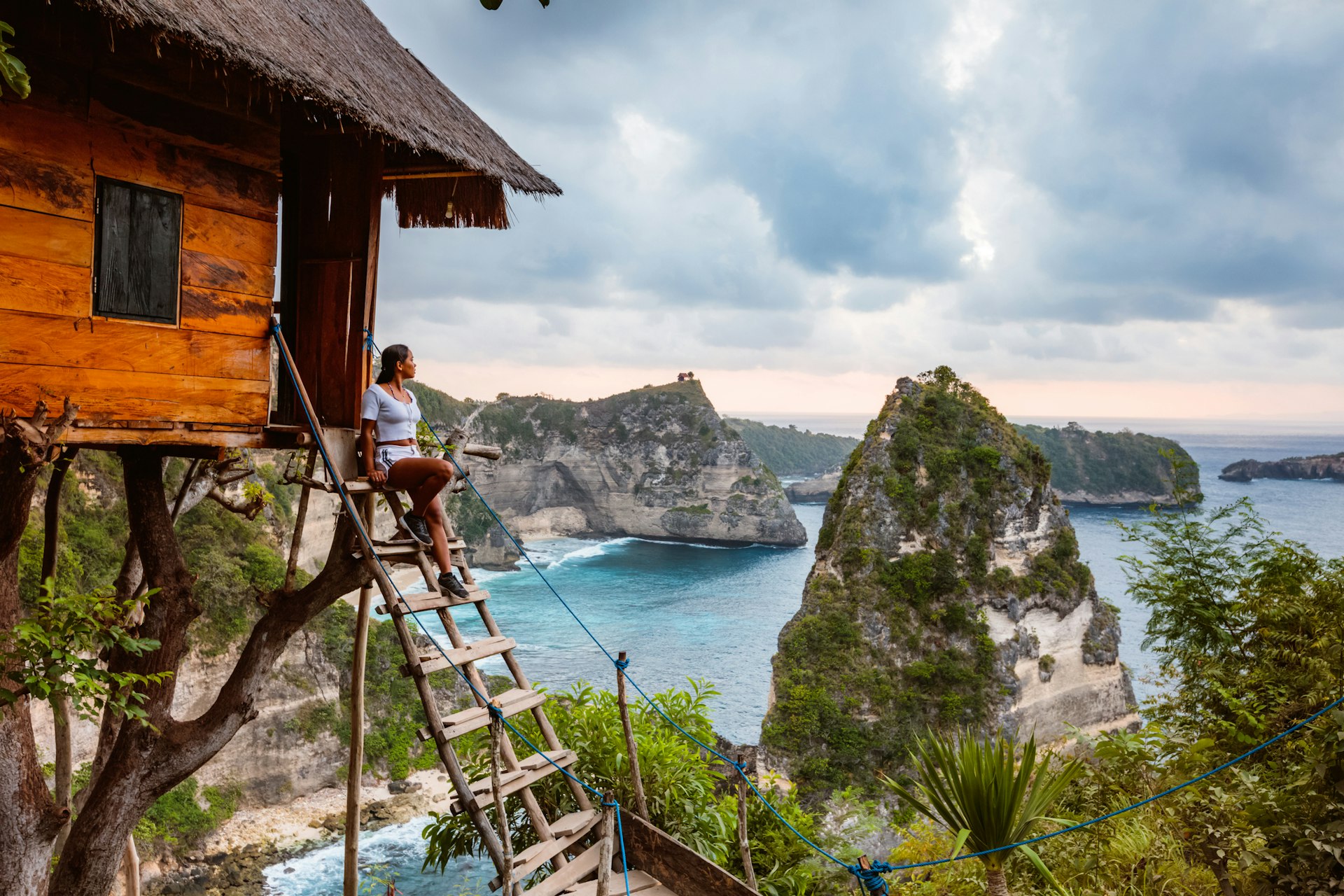
4. What to wear: pack for the tropics, but be respectful
Indonesia is tropical, and wherever you go in this country, you’re likely to want shorts, t-shirts or beach clothing much of the time. It can be surprisingly chilly in the highlands, however, and if you plan to do some trekking or volcano climbing, you will appreciate some warmer layers. Also beware that transportation (planes, trains and buses) are often surprisingly cold, and air-con units in shopping malls and hotels are often set to frigid levels, allowing fashionistas to dress in the sort of chic style you might associate with a European fall.
Even in beach areas, it’s considered extremely impolite to walk around shirtless (especially to enter a shop or restaurant), although you will see this often in the party areas of Bali. Male Indonesians will often be shirtless if in the comfort of their own home but would never dream of removing a shirt on someone else’s property.
If you are visiting temples, you will often be expected to wear a sarong and (for women) to cover your shoulders. Religious buildings and ceremonies in most parts of the country will often be off-limits if you’re wearing shorts. In most of Muslim Indonesia, dress codes are relatively relaxed, but you are likely to feel more comfortable (and appear more respectful) in long pants in communities that are predominantly Muslim.
5. Buy a local SIM card and download useful apps
Buy a local SIM card upon arrival at the airport so that you have calling credit and internet data wherever you go. It is inexpensive and easily done – staff will upload and activate the card for you within a couple of minutes. Make a note of your national consulate or embassy contact details in case of emergency.
Prior to traveling, download the transportation apps for Grab and/or Gojek . For solo travelers , this may be reassuring because drivers/riders are vetted and reviewed, and there is a security alert button to hit if you feel threatened.
6. Etiquette includes respecting your hosts’ religious beliefs
Indonesia is the world’s most populous Muslim country. While this is true (87% of the country’s 275 million people are Muslim), it is also misleading since – with the exception of Aceh (northern Sumatra ), where Sharia law still prevails – Indonesia’s Islamic restrictions are very relaxed. Indonesian Muslims are also among some of the most hospitable people you will ever meet.
Vast tracts of the country are also predominantly Christian (large sections of the Maluku Islands, for example) and Bali itself is almost entirely Hindu. Intermingled with these "formal" religions – and sometimes almost inseparable from them – are an entire spectrum of animistic beliefs. Your trip will be all the richer for any attempts to understand and appreciate the beliefs of your hosts.
7. Kick off your shoes when entering a building
Most people realize that in Asia, you shouldn’t walk into a house wearing shoes, but it surprises many visitors to Indonesia that this also often extends to homestays and sometimes even to hotel rooms. While it is not strictly necessary, many owners of small souvenir shops also appreciate your politeness in leaving slip-off shoes at the door.
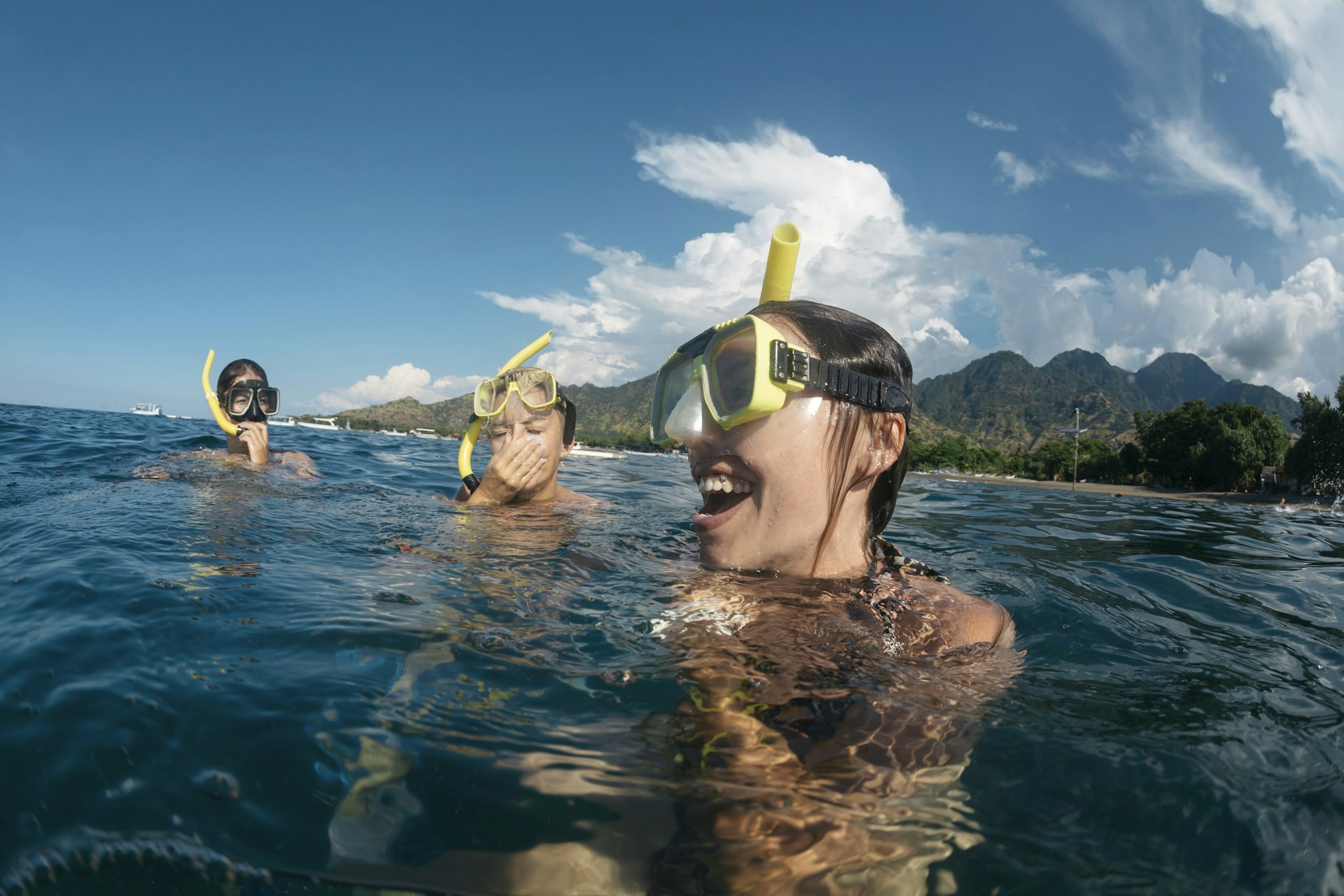
8. Never ask elderly people their names
In many traditional communities (including rural Bali) there’s a strong prohibition on speaking the name of an older person. The gods have a list of people who are "due to be called," and there’s a pervasive belief that speaking a name can remind the gods that someone has been "overlooked." Older women are invariably known simply as Nenek (grandmother), and older men are most commonly known as Bapak (mister) or Kakek (grandfather). In general, an older person should always be referred to respectfully as Pak (mister) or Ibu (mother).
9. Offer a gift to your hosts
If you’re visiting a family home, a small gift (an oleh oleh ) might be appreciated – especially something that is representative of your own country. Locally bought sarongs – often available for just a couple of dollars – are a conveniently lightweight alternative. It’s considered uncouth for an Indonesian to make a big fuss about receiving a gift, so don’t feel offended if it is received with just a brief word of thanks and then carefully put away (still unwrapped) to be inspected later.
10. Staying safe in Indonesia: there's a small risk of pickpocketing
In general, you are more at risk of crime in a European or American city than in Indonesia, and most trips are hassle-free. However, it's worth staying alert in crowded bars and marketplaces as there’s a small risk of pickpocketing or being approached by scam artists here.
The vast majority of Indonesians from all regions (and all cultures and religions) are instilled with an almost inviolable tradition of hospitality towards strangers and travelers. Wherever you travel throughout the world’s greatest island nation – among the fabled Dayak ex-headhunter communities of Kalimantan or among the ex-cannibal communities of the Batak (Sumatra) or Asmat (West Papua) – you’re likely to realize very quickly that you are among friends. Almost uniquely, Lombok has a reputation for organized robberies on quiet roads, but elsewhere, community law is usually enough to ensure that such penjahat (evildoers) are promptly punished.

11. Be prepared for volcanoes and earthquakes
Volcanic eruptions and earthquakes are almost a daily event on the Ring of Fire. The excellent Volcano Discovery site and app provides up-to-the-moment details (and alerts) – and some fascinating background reading – for almost 200 Indonesian volcanoes. When there's heightened activity, be sure to respect official advice concerning exclusion zones.
During a period of particularly regular and intense earthquakes, travel with a small lightweight (particularly sensitive) wind chime – the sort you’d usually string up in a garden. Hang it in the wardrobe (away from the fan) in hotel bedrooms, and it serves as a very effective early-warning system for tremors.
12. Drug laws are extremely strict in Indonesia
Indonesia has some of the strictest anti-drug laws on the planet. Possession of illegal narcotics can result in up to four years imprisonment, while a conviction for trafficking can often result in a death sentence – carried out by firing squad.
13. Know the laws regarding LGBTQI+ travelers
In Aceh, where pre-marital sex, in general, is considered a crime, same-sex relationships are also criminalized. This is the case to a lesser extent in the Sumatran city of Palembang. Throughout most of the rest of the country, discreet same-sex couples will find themselves welcomed.
Displays of public affection, regardless of sexual orientation, are considered inappropriate by typically conservative Indonesians. Parts of Indonesia – especially Maluku – have traditionally had a very natural acceptance of waria (considered to be men born with women’s souls), but increasing anti-LGBTQI+ rhetoric among politicians is making the situation harder for Indonesians in same-sex relationships. Few Western-style tourist hotels have an issue with same-sex couples sharing rooms, but, especially for travel in more off-the-beaten-track areas, increasing numbers of same-sex couples appreciate the anonymity of booking through sites like Airbnb .

14. Get up to date with vaccinations before you go
Travelers to Indonesia should check official sources such as their embassy or consulate for what vaccinations are required for your visit at least eight weeks before travel. Hepatitis A and B vaccines are recommended. Typhoid vaccinations and malaria prophylaxis are also recommended for some areas. If you are coming from a country with a prevalent risk of yellow fever, you may be required to produce a yellow fever certificate upon arrival.
15. Don’t drink the tap water
Even locals don’t drink tap water in Indonesia; they buy bottled water or boil it. To be on the safe side, where possible, use bottled water for ice and for cleaning teeth, too. Indonesia suffers from a problem with plastic garbage: if you are staying in a property for more than a couple of days (or are traveling in a group), consider buying a big 19-liter bottle (known locally as a galon ), which you can then exchange for refills, rather than run through scores of liter bottles throughout your stay.
This article was first published Apr 11, 2022 and updated Dec 7, 2023.
Explore related stories
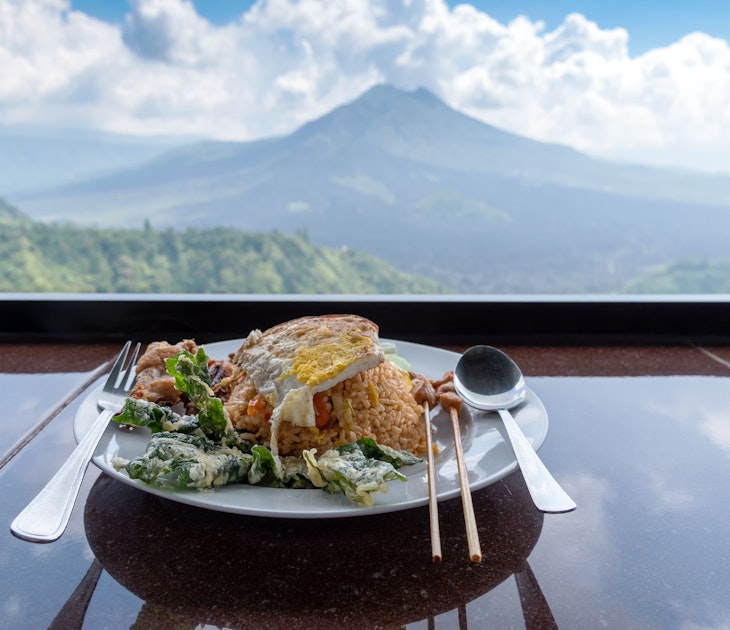
Tips & Advice
Apr 29, 2024 • 6 min read
Explore Indonesia’s diverse culinary landscape across the world's largest island nation, from satay to the globally renowned beef rendang.
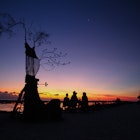
Apr 22, 2024 • 6 min read
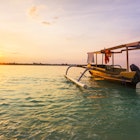
Apr 21, 2024 • 6 min read

Apr 18, 2024 • 5 min read

Apr 16, 2024 • 12 min read

Feb 3, 2024 • 7 min read

Jan 29, 2024 • 8 min read
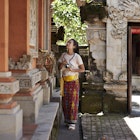
Jan 18, 2024 • 8 min read
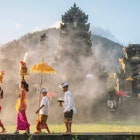
Jan 17, 2024 • 6 min read

Southeast Asia Travel Guide
Last Updated: November 27, 2023

Backpackers have been traveling through Southeast Asia since the late 1960s and early 1970s, leaving a well-worn trail around the region.
Starting in beautiful Thailand, the trail makes its way to up-and-coming Laos, through Vietnam, and to the temples of Angkor Wat. It then winds back into Thailand, where people head south to party in the Thai islands before moving down to Malaysia and Singapore.
There are a few variations to the trail, but this is what it mostly covers.
I’ve been visiting this region since 2004 and spent years living in Thailand . I love backpacking Southeast Asia and have written extensively about it as I know it like the back of my hand.
It’s an especially great region for new travelers because it’s easy to travel around, it’s safe, and there are lots of other travelers you can meet. But it’s also perfect for veteran travelers too as there are tons of off-the-beaten-path destinations that the standard backpacker trail doesn’t cover.
In short, Southeast Asia has something for every traveler — and every budget.
This Southeast Asia travel guide will help you travel the region like a pro, ensuring you save money and make the most of your time in this fun, gorgeous, and lively corner of the world.
Table of Contents
- Things to See and Do
- Typical Costs
- Suggested Budget
- Money-Saving Tips
- Where to Stay
- How to Get Around
- How to Stay Safe
- Best Places to Book Your Trip
- Related Blogs on Southeast Asia
Click Here for Country Guides
Top 5 things to see and do in southeast asia.
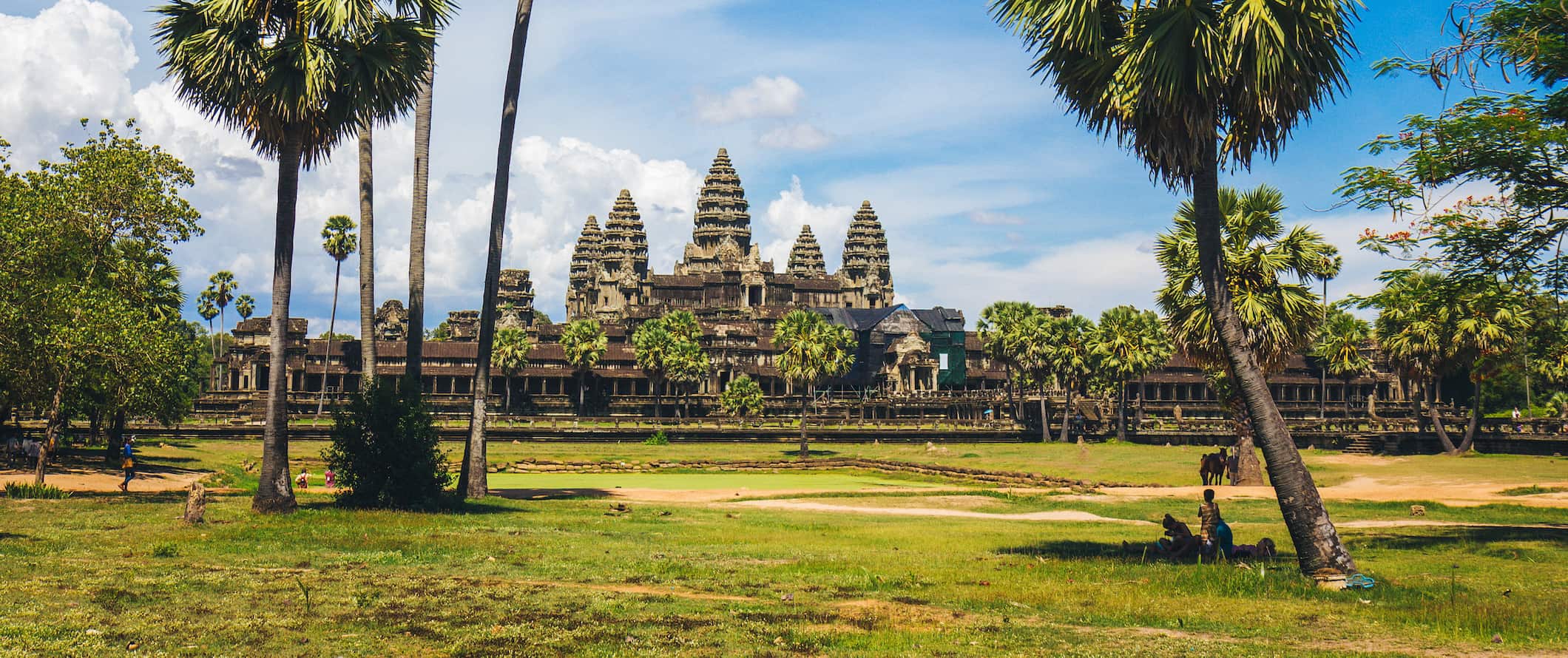
1. Admire Angkor Wat
One of the greatest human creations in history, the Angkor Wat temple complex is best explored over the course of a few days. The area is a UNESCO World Heritage Site created by the Khmer Empire and absolutely enormous. Temples to visit include Angkor Wat, Bayon Temple which has 216 gigantic stone face carvings, and Ta Prohm. I spent three days here and that simply wasn’t enough. A one-day pass is $37 USD, while a 1-week pass is $72 USD. If you’re here for multiple days, be sure to hire a driver and see some of the more out of the way ruins away from the main temple complex (and the crowds).
2. Explore Bangkok
Bangkok is the hub of travel activity in Southeast Asia. You can get anywhere you want from here. Though I hated it at first, the more I’ve spent time here the more I love it. Bangkok is like an onion whose many layers need to be peeled back. Some things not to miss include the spectacular Bangkok Grand Palace, Wat Pho, Chatuchak Market and Asiatique, and a canal trip on the Chao Phraya River. This is a city for foodies and wild nightlife.
3. Relax on some tropical islands
No visit to Southeast Asia would be complete without a visit to at least one of the thousands of tropical islands in the region. My top five include the Perhentian Islands (Malaysia), Rabbit Island (Cambodia), Ko Lanta (Thailand), and Boracay (Philippines). Lombok Island (Indonesia) has a chill vibe with unspoiled, perfect “desert island” beaches. There’s so many islands to visit. Be sure to add at least one to your trip. The country guides will have more information for you.
4. See Ha Long Bay
Sailing trips to this island-filled bay with stunning emerald waters, limestone formations, and marine life give you an appreciation for the natural beauty in Vietnam. Tours from Hanoi start at around $110 USD for two-day trips and increase from there. I love the colorful grottoes, hanging stalactites, and stalagmites of Surprise Cave (Sung Sot), Fairy Cave (Tien Ong), and Heaven Palace (Thien Cung). Make sure you go with a reputable company though as some of the cheaper boats are less than ideal. If you’d rather just visit for one day, day trips from Hanoi cost $55 USD.
5. Wander Kuala Lumpur
Other things to see and do in southeast asia, 1. go jungle trekking.
This region of the world is covered in amazing jungles with diverse wildlife, plentiful camping opportunities, and cool waterfalls. The best jungle treks are found in northern Thailand, Western Laos, and Malaysian Borneo (the latter are also the hardest and most intense). Some of my favorites include Danum Valley (Borneo) for its incredible wildlife; Ratanakiri (Cambodia) for its pristine wilderness and thousand-year-old trees; and Pu Luong Nature Reserve (Vietnam). Costs vary but jungle trekking generally costs $30-50 USD per day.
2. Attend the Full Moon Party
The biggest one-night party in the world welcomes up to 30,000 people with a party that stretches until dawn. Cover yourself in glow paint, grab a bucket of booze, and dance the night away with new friends on the island of Ko Phangan in Thailand. As the name would suggest, the party is on the night of the full moon. If you miss it, there’s always the half-moon party, quarter-moon party, and black-moon party. Really, every night is a party on Ko Phangan . Just avoid the flaming jump rope that occurs — I’ve seen people get burned badly!
3. Learn to dive
There are many great dive sites around the region for those interested in underwater exploration. You can learn to dive here at a fraction of what it would cost back home too. Some of the best places are Ko Tao (Thailand), Sipadan (Malaysia), as well as Gili Islands (Indonesia) and Coron, Palawan (The Philippines). A typical diving course is completed in three days. A PADI course typically runs $275 USD in Thailand, including three nights’ accommodation, though at smaller schools you can often negotiate down to $250 USD. Day trips for certified divers start at $165 USD. For information on Ko Tao, check out this blog post .
4. Eat street food in Singapore
Singapore is a foodie’s heaven. Try the hawker stalls of Singapore as well as Little India and Chinatown for some of the best and cheapest food in Asia. If you’re looking for a nice place to sit down and eat, eat at Singapore’s famed restaurants during lunch when restaurants offer discounts, making them a great deal. You’ll also find the most affordable Michelin-starred restaurants here (Tian Tian Hainanese Chicken Rice and Hawker Chan), offering world-class meals for just a couple of bucks!
5. Overload on temples
You can’t turn a corner without seeing a Buddhist temple in this part of the world. You’ll get temple overload at some point but visit as many as you can as each is unique to the country and region of the temple. There are so many places with high concentrations of ornate and beautiful temples. Check out Chiang Mai’s Wat Doi Suthep Temple and hike up the 300 steps to the golden Chedi that’s 600 years old!; Bagan’s Shwesandaw Pagoda from the 11th century with its stunning golden dome; Angkor Wat’s Ta Prohm is covered in iconic vines and enveloped in ancient jungle roots; Hue’s colorful Thien Mu Pagoda is perched atop a lush green embankment; Hoi An’s Quan Cong Temple with incredible Chinese architecture with hand-carved beauty and skill, and Luang Prabang’s Vat Xieng Thong with its golden, canopied roof. Most are free to enter, however, dress codes are enforced (you need to have your shoulders and legs covered).
6. Dive Sipadan
Located off Malaysian Borneo, Sipadan is one of the best dive sites in the world. If you have your dive certificate, make sure you venture out here. I absolutely love this area because it’s teeming with live turtles, diverse cave systems, sharks, dolphins, colorful coral, bright fish, and everything in between. Not a lot of people make it to this part of Malaysia, but it’s worth it to go the extra mile and make your way off the tourist trail a bit. Don’t miss Barracuda Point and The Drop-Off. Keep in mind that only 176 permits to dive at the island are issued each day, costing 140 MYR per person. The resorts on the neighboring islands each get a specific number of permits per day and require divers to stay with them for a few days. So you’ll need to stay at those resorts and dive into the surrounding areas before they can get you a Sipadan permit.
7. Fall in love with Bali
Bali is the most popular destination in Indonesia, and its famous Kuta beach is known for its wild parties and surfing ( though I think it’s overrated ). However, there is much more to Bali than just wild nights and sun-soaked days. If you’re a thrill seeker, hike up to the top of Mount Batur, an active volcano, for a breathtaking sunrise. Paragliding and white water rafting are also super popular here, as is surfing (it’s an affordable place to learn if you’ve never done it). There are also lots of hot springs to enjoy, the Ubud Monkey Forest (a popular temple and nature reserve home to hundreds of monkeys), and numerous places to scuba dive, including the Liberty wreck and Manta Point.
8. Take in Ho Chi Minh City
Frantic, chaotic, and crazy, Ho Chi Minh City in Vietnam is the embodiment of the controlled chaos that rules Southeast Asia. You can’t quite figure out how this teeming mass of people and cars work together, but it does. Highlights here include touring the tunnels used by the Viet Cong in the 1960s, taking in the view from the Saigon Skydeck, eating your way through the street food scene, and seeing the city’s numerous temples.
9. Admire the sunrise over an Indonesian Volcano
One of the most popular tourist attractions on Java is Mount Bromo and its National Park. Don’t miss out on getting a photo of the smoldering Bromo volcano as it lies surrounded by the almost lunar landscape of the Sea of Sand. Get up early to catch one of the most memorable sunrises of your life. If you’re there in mid-August, you’ll be just in time to see Upacara Kasada, the traditional Hindu ritual of the Tenggerese, a Javanese tribe of the region.
10. Hike in Khao Sok National Park
Located in southern Thailand, Khao Sok National Park is constantly rated as one of the best parks in Thailand, with incredible trekking, camping, limestone karsts, cooling rivers, and a glistening lake. Visit for semi-challenging hikes, tons of wildlife, walking paths, and breathtaking sunsets. Park entrance costs around $6 USD while full-day guided tours are $95 USD. I highly recommend spending at least one night here to get the full experience.
11. Visit Kampot
Most people come to Kampot to enjoy the scenic riverside views, as well as the rolling hills that surround the city. Since you can explore easily enough on foot or by bicycle, Kampot is a great place to slow down and relax. There’s not much to do here but have lazy days by the river, chill, and eat (don’t miss the famous Rusty Keyhole for BBQ!). Don’t miss the pepper farms, as this region of Cambodia is filled with pepper farms where you can learn about the history of the spice, see how it is grown, and pick up what is considered some of the finest pepper in the world. Tours are usually free.
12. Take a cooking class
Food from this region is as varied as the countries themselves and learning how to cook a few dishes is a great souvenir of your time here. Even if you don’t plan to cook back home, you can still spend a day making and eating scrumptious food. Most big cities have cooking schools offering classes of 2-6 hours, often including a trip to the local market beforehand to select ingredients. I absolutely love cooking classes and urge you to take one at least once. They are a fun experience!
13. Take a food tour
If you’d rather eat instead of cook, taking a food tour is a fun way to gain insight into the region’s amazing noodle dishes, fresh seafood, sweets, and street food while learning about the history and culture behind the cuisine. Most major cities in Southeast Asia offer food tours. These include tours around local markets, street stalls, and tours to locally-owned restaurants and cafes where you can sample the local cuisine and connect with a local chef. If you’re nervous about street food, this is a great way to try some in a controlled setting. Tours usually last 2-4 hours and include multiple stops and several different dishes, with prices costing $40-75 USD per person.
14. Visit an elephant sanctuary
While riding an elephant is on many a Southeast Asia bucket list, once you know how much the animals suffer from abuse in order to provide these rides, you might think twice about taking one. An even better way to interact with elephants is to volunteer at or visit the Elephant Nature Park near Chiang Mai in Thailand. It’s a phenomenal place, allowing you to give back to the community and these magnificent animals all at once. After coming here, you will understand why you should NEVER ride an elephant. A one-day visit costs $70 USD.
15. See The Killing Fields
A visit to Choeung Ek, also known as the Killing Fields, may not be the most cheerful way to spend an afternoon, but it makes for an educational and memorable experience. Over 3 million people were killed by Pol Pot’s regime, including countless women and children. I recommend getting a guide so you can really understand what you’re seeing as you explore the area. Also, this horrific tragedy took place less than 50 years ago and is still very present so please be respectful as a visitor. The site is located 10 miles from Phnom Penh. Half-day guided tours start at $66 USD.
16. Swim with Whale Sharks in Donsol
If you’re in the Philippines, check out the Donsol Whale Shark Interactive Ecosystem Project because there are not many experiences quite as adrenaline-inducing as swimming with a whale shark for the first time in crystal waters. These incredible creatures are around 45 feet (14 meters) long and yet incredibly gentle and curious. I loved floating at the surface being able to look below and see them slowly swim below me. Get some people together and rent a boat for a half day, explore the area, and go ‘shark-seeing’ for a good cause.
For a ton more information, visit my country specific travel guides for more detailed information on each place:
- Cambodia Travel Guide
- Indonesia Travel Guide
- Laos Travel Guide
- Malaysia Travel Guide
- Singapore Travel Guide
- Thailand Travel Guide
- Vietnam Travel Guide
Southeast Asia Travel Costs
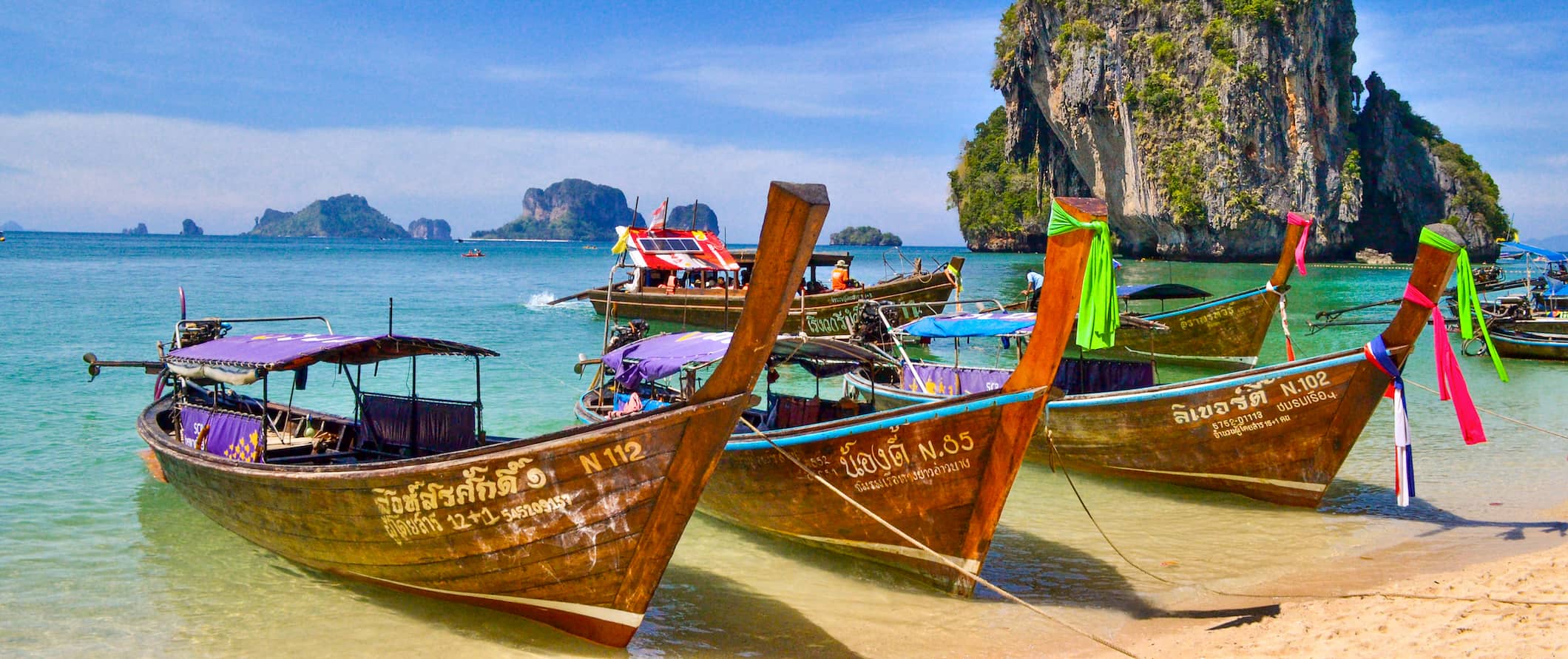
Accommodation – Accommodation in Southeast Asia is really cheap, making it the perfect place to travel if you are on a budget. Hostels are plentiful, as are budget guesthouses and hotels. It’s also very cheap to splash out here if you’re in need of some luxury.
Generally, you can find hostel dorm rooms for as little as $6-8 USD in Cambodia and $3-6 USD in Laos. In Thailand, 4-6-bed dorm rooms are $8-12 USD, while in Vietnam you can expect to pay $5-7 USD. In Indonesia, prices range between $5-10 USD for a 4-6-bed dorm room. Expect to pay at least $15-20 per night for a private room with air conditioning. Free Wi-Fi is standard in most hostels, free breakfast is common, and many hostels even have pools. In more remote areas, hot water isn’t common so make sure to check in advance if that’s an issue for you.
Simple guesthouses or bungalows throughout Southeast Asia generally cost $12-20 USD per night for a basic room with a fan (sometimes air conditioning) and hot water. If you want something nicer that includes a more comfortable bed and a TV, expect to pay $25-35 USD per night.
For backpackers, budgeting around $10 USD per night for accommodation is pretty safe no matter where you go in Southeast Asia. If you’re looking for a higher-end hotel room with more amenities, expect to pay $20-50 USD per night for a room. Anything over that is luxury territory.
Camping is available in certain areas, usually for just a few dollars per night for a basic tent plot without electricity. However, this is about the same price as hostels so it’s not really any cheaper.
Food – While each country’s cuisine varies, overall, Southeast Asian food is aromatic, spicy, and flavorful. Typical spices and herbs include garlic, basil, galangal, cilantro, lemongrass, kaffir lime leaves, chilies, and fish sauce. No matter what region you’re in, you can expect to find a variety of curries, salads, soups, noodle dishes, and stir-fries.
Rice and noodles are central to Southeast Asian food, while the meat is usually pork, chicken, fish, or seafood, which is everywhere on the islands and coastal areas.
While traveling Southeast Asia, street food is the most popular food and cheapest option. On average, these meals cost $1-5 USD. You find these stalls throughout this region lining most streets and every market. They are ubiquitous in the region. In Singapore, street food (from “hawker stands” as they’re known there) costs around $4-5 USD for a meal. Even if you go into small local restaurants, the price doesn’t increase that much.
Food that costs $2 USD at a street stall generally only costs $4-6 USD at a local restaurant. If you went into a restaurant in Thailand, you’d pay around $3-4 USD for a pad Thai that would have cost $1-2 USD on the street.
In Cambodia, street food is around $1-2 USD, while restaurants charge around $3-5 USD for a dish like amok (a coconut milk dish) or luc lac (pepper gravy beef).
Western meals, including burgers, pizza, and sandwiches usually cost around $7-10 USD. But these generally aren’t that great. If you want something that actually tastes as it does back home, expect to spend at least $10-12 USD for your meal.
While cheap, alcohol can take a bite out of your budget if you’re not careful. Those $1-2 USD beers add up! Wine and cocktails are more expensive, generally around $3-5 USD. A cappuccino is typically around $2 USD. Bottled water is plentiful and costs less than $1 USD.
There’s a growing cutting-edge foodie scene in the region and, if you want to splurge, you can do so on some really good meals. Big cities like Bangkok, KL, and Singapore, all have world-class Michelin star restaurants as well some incredible fusion restaurants.
Since dining out is so cheap in the region, there’s no point in grocery shopping unless you’re looking to get some pre-made salads or fruits. Additionally, a general lack of kitchens in most hostels and hotels makes it difficult to cook even if you wanted to. If you do purchase your own groceries, expect to spend around $25 USD per week for basic groceries like local produce, rice, and some meat (while avoiding expensive imported items like cheese and wine).
Backpacking Southeast Asia Suggested Budgets
On a backpacker budget of $45 USD per day, you can stay in hostel dorms, eat out at local markets and street stalls, limit your drinking, do mostly free activities, minimize paid activities, and use public transportation to get around. You’re not going to be able to splash out but you’ll be able to live the typical backpacker experience without really stressing over expenses.
On a mid-range budget of $85 USD per day, you can stay in budget hotels or private hostel rooms, eat more restaurant meals, do more paid activities like cooking classes, take some taxis, and enjoy a few more drinks. You won’t live large, but you won’t be missing out either.
On an upscale budget of $150 USD or more per day, you can stay in nicer hotels with more amenities, eat out as much as you want, do more paid tours including private tours, hire a driver, fly between destinations, and basically do whatever you want. The sky is the limit with this kind of budget!
You can use the chart below to get some idea of how much you need to budget daily, depending on your travel style. Keep in mind these are daily averages — some days you’ll spend more, some days you’ll spend less (you might spend less every day). We just want to give you a general idea of how to make your budget. Prices are in USD.
Southeast Asia Travel Guide: Money-Saving Tips
Backpacking Southeast Asia is cheap. There’s little opportunity to spend a lot of money since everything is already so inexpensive unless you intentionally are trying to splash out on fancy meals and high end hotels. The two reasons why most travelers end up overspending is that they eat a lot of Western food and drink way too much. If you want to save money while traveling in this part of the world, cut down on your drinking and skip the Western food. While country guides have more specific ways to save money, here are some general ways to save money in Southeast Asia:
- Stay with a local – Accommodation is cheap in Southeast Asia but nothing’s cheaper than free! Use Couchsurfing to stay with locals who have extra beds and couches for free. You’ll also meet great people who can show you around and share their insider tips and advice.
- Book tours and day trips as a group – You have more negotiation power when you’re with a group of people buying multiple spots or tickets. Traveling alone? Meet a friend at a hostel and see if they want to join the same tour as you. I’ve met some great friends over the years doing this and highly recommend it.
- Don’t book in advance – Don’t book any tours or activities before you get to your destination. They’ll be much cheaper when you arrive as you’ll be able to negotiate a lower price as you’ll find companies are often offering the same tour and competing. Anything you see online is more expensive than you need to pay!
- Eat on the street – The street food is the best food. The food is the best and cheapest you’ll find. It’s a great way to try new foods and get to chat with locals as well. This is where locals eat so if you want insight into local culture, good food, and savings, eat the street food. Look for where locals are eating to ensure that it’s safe to eat.
- Bargain hard – Nothing is ever at face value here. Bargain with sellers as most of the time, the price they’ve quoted is way higher. There’s a haggling culture in the region so play the game and save some money. It’s important not to convert it in your head to your own currency because it will usually sound cheap even though you might still be getting ripped off. You’ll never get the local price, but you might come close!
- Minimize your drinking – Drinks really add up. Even with cheap drinks, if you’re not aware, you’ll end up spending more money on beer than on food and accommodation. If you want to drink, head to the supermarkets, drink at the hostel, or check out the local happy hours.
- Pack a water bottle – A water bottle with a purifier comes particularly in handy in Southeast Asia since you can’t usually drink the tap water. Save money and thousands of plastic bottles and get a bottle that can purify the tap water for you. My preferred bottle is LifeStraw as it has a built-in filter that ensures your water is always safe and clean.
Where to Stay in Southeast Asia
I’ve been traveling Southeast Asia since 2005 and have stayed in hundreds of places. Here are some of my favorite places to stay in Southeast Asia:
- The Siem Reap Pub Hostel (Siem Reap)
- Onederz Siem Reap (Siem Reap)
- Mad Monkey Siem Reap (Siem Reap)
- Onederz Sihanoukville (Sihanoukville)
- Monkey Republic (Sihanoukville)
- Onederz Phnom Penh (Phnom Penh)
- Sla Boutique Hostel (Phnom Penh)
- The Magic Sponge (Kampot)
- Indigo House Hotel (Luang Prabang)
- Sa Sa Lao (Luang Prabang)
- Sanga Hostel (Pakse)
- Nana Backpackers Hostel (Vang Vieng)
- Dream Home Hostel (Vientiane)
- Traveller Bunker Hostel (Cameron Highlands)
- De’Native Guest House (Cameron Highlands)
- Kitez Hotel & Bunks (Kuala Lumpur)
- Sunshine Bedz Kuala Lumpur (Kuala Lumpur)
- Ryokan Muntri Boutique Hostel (Penang)
- Mad Monkey Hostel (Bangkok)
- D&D Inn (Bangkok)
- Kodchasri B&B (Chiang Mai)
- The Royal Guest House (Chiang Mai)
- Green Leaf (Khao Yai)
- Lonely Beach Resort (Ko Chang)
- The Sanctuary (Koh Phangan)
- Na-Tub Hostel (Koh Phangan)
- Pineapple Guesthouse (Phuket)
- Dream Lodge
- The Pod Capsule Hostel
- The Scarlet
- Under the Coconut Tree Guesthouse (Hoi An)
- Fuse Beachside (Hoi An)
- Pretty Backpackers House (Da Lat)
- Hanoi Old Quarter Hostel (Hanoi)
- Luxury Backpackers Hostel (Hanoi)
- The Hideout (HCMC)
- City Backpackers Hostel (HCMC)
How to Get Around Southeast Asia
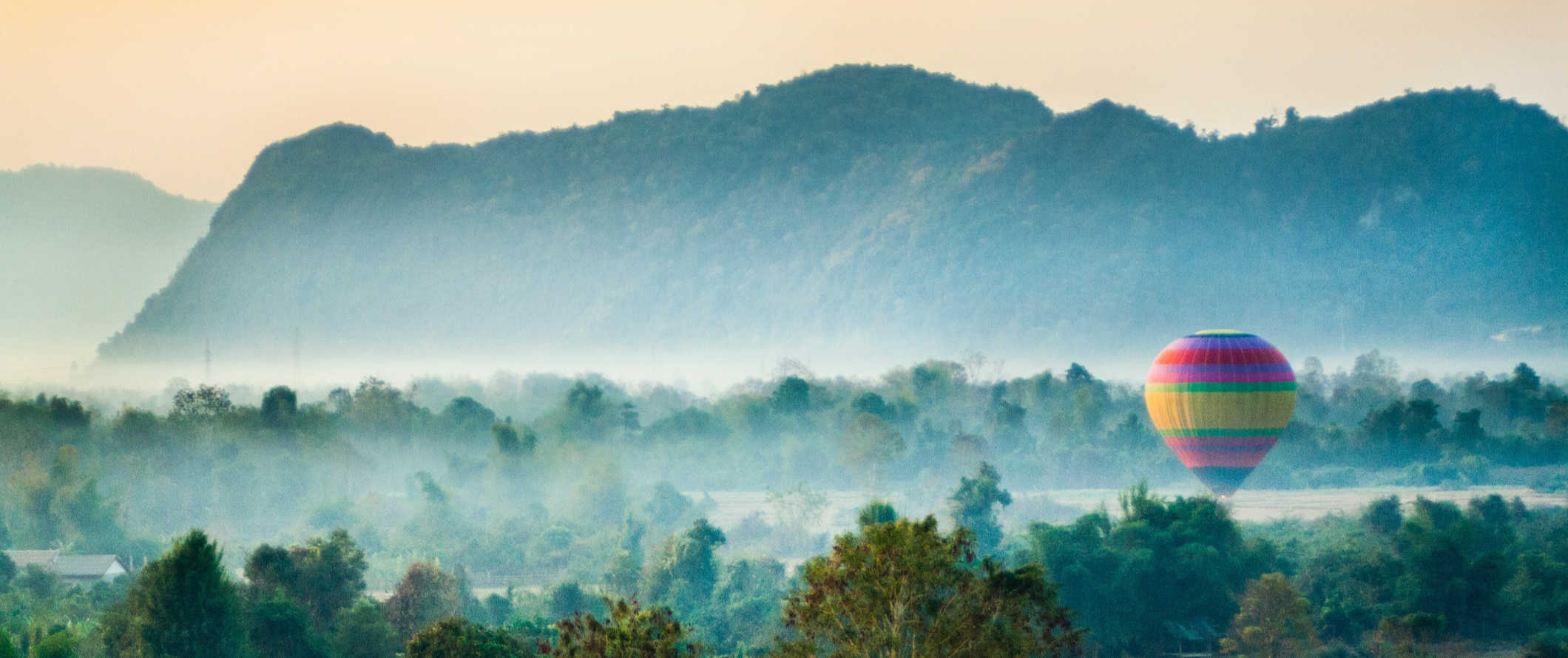
Public transportation – Public transportation costs from a few pennies to a few dollars, with Singapore and Malaysia offering the most comprehensive public transportation systems. In Thailand, local buses cost around $0.25 USD per trip, while the Metro and Skytrain in Bangkok cost $0.50-1.50 USD per trip. In Cambodia, a bus ticket in Phnom Penh costs just $0.40 USD per ride.
Major cities generally have subway systems but mostly you’ll be using the bus or shared taxis to get around.
Tuk-tuks (small, shared taxis with no meter) are available around much of the region and require a bit of haggling. They usually have 3-6 seats and generally cost more than public transportation but are faster. To find a reputable driver, ask your accommodation as they usually know someone. Tuk-tuk drivers can often be hired for the day for a discounted rate (this is what a lot of people do to visit the Killing Fields and Angkor Wat in Cambodia, for example).
Taxi – Taxis in the region are generally safe, though it’s not uncommon to have to haggle. Scams to rip you off aren’t uncommon either, so always ask your accommodation to call you a taxi whenever possible so you know you’ll get a reputable company.
In Singapore and Indonesia, taxi drivers do put on the meter. In Bangkok, you can get taxi drivers to use the meter, but if you’re hailing one in a tourist area, he might try to avoid using it. In Vietnam, the meter is sometimes rigged, but if you can get a reputable company like Mai Linh, you won’t have any problems.
Ridesharing – Grab, DiDi, and Gojek are Asia’s answer to Uber. They work the same way: you hire a driver to take you somewhere via the app, and you can pay via the app or in cash. It’s often more affordable than a regular taxi, though drivers are a bit unreliable as the practice is not as widespread here as in other parts of the world.
Just keep in mind that some drivers are driving motorcycles so be sure to double check what kind of vehicle is picking you up if you don’t want to ride on the back of one.
Bus – The easiest and cheapest way to travel around Southeast Asia is by bus. The backpacker trail is so worn that there is a very well-established tourist bus system to take you anywhere. Buses costs vary between $5-25 USD for a 5-6 hour journey. Overnight buses cost $20-35 USD depending on distance (they often have reclining seats so you can get a decent sleep).
You can check ticket prices and book tickets for all the different bus companies across Southeast Asia at 12go.asia.
Train – Train service is limited in the region and not something to really consider when you travel Southeast Asia. You can take a train up and down the coast of Vietnam and there’s some limited scenic rails in Malaysia. Thailand is the only country that has an extensive train system that lets you travel all its regions (and onward to Singapore) from Bangkok.
The train prices in Southeast Asia are determined by distance and class. Night trains with sleeper cars are more expensive than day trains. The night train to Chiang Mai from Bangkok takes twelve hours and costs $27 USD for a sleeper seat. However, that same train during the day is $8-9 USD. In Vietnam, trains run up and down the coast and cost $60 USD from Hanoi to Ho Chi Minh City.
Flying – The cost of flying around Southeast Asia has come down in recent years due to the rise of low-cost airlines. Scoot, Jetstar, and AirAsia are the biggest. Nok Air has a lot of flights within Thailand , and VietJet Air is popular in Vietnam . Lion Air serves Indonesia , but its safety record is really spotty and I personally would not fly them. If you book early, you can save on fares, as most of the airlines offer deeply discounted fare sales all the time, especially Air Asia.
Just make sure that the airport these budget airlines fly into isn’t too far out of your way (transportation from the secondary airport sometimes negates the savings from using the budget airline itself).
Also, keep in mind that you usually must pay to check your baggage on these cheap flights. If you wait to pay for your luggage at the gate, you end up paying almost double. Travel carry-on only to avoid this added cost.
All in all, I only recommend flying if you are pressed for time or find a super cheap deal. Otherwise, stick to the bus.
Hitchhiking – Hitchhiking in Southeast Asia is safe, though popularity of the practice varies by country (it’s more common in Malaysia, but not so much in Cambodia). Dress respectably, smile while making eye contact with drivers, and use a cardboard sign to tell people where you’re headed. Be prepared for long bouts of no pick-ups, especially if you’re traveling through more rural areas. Pack plenty of water and food. Also, make sure the people picking you up understand you’re hitchhiking and not flagging down a taxi.
Hitchwiki is a great resource for hitchhiking tips.
Car rental I don’t recommend renting a car in Southeast Asia. Rental cars are expensive ($40 USD per day or more) and the roads here are in poor shape. I would never drive around the region.
When to Go to Southeast Asia
The best time of year to visit Southeast Asia is from November to April when temperatures are milder (though temperatures vary drastically by region). It may be mild in Thailand in January and hot in Malaysia but in Northern Vietnam, it’s cold! Also, one of the biggest mistakes people make is not taking into account the rainy season. In some cases it won’t make a big difference but definitely does if it’s a beach trip.
In Indonesia, the best time to visit is April to October. Temperatures average 24-30ºC (75-86ºF), and the weather is mostly dry. July to September is the peak holiday season and when you can expect to pay the highest rates. December to February is the rainy season.
In Malaysia, January-March and June-September are the best time to visit, as these months have the lowest average rainfall. It is still hot and humid during this time though. The rainy season is from October to December. Singapore’s climate/weather is much like Malaysia’s.
In Vietnam, the weather varies by region. In Central Vietnam (including Hoi An and Nha Trang), January-May is the best time to visit because it is dry and the temperatures average 21-30°C (70-86°F). June to August is also a decent time to visit. If you want to stick around Hanoi, March to April is great, or October to December (for mildest temperatures). The rainy season is May-September.
Thailand has three seasons: hot, hotter, and hottest. It’s always warm, though the weather is nicest between November and February (which is also peak tourist season). Bangkok is “coolest” and driest during this time (but still averaging a hot 29°C/85°F each day). April and May are the hottest months, and the rainy season is June-October. The gulf islands get pretty rainy from August to December.
The dry season in Cambodia is from November-May and the cool season is from November-February (and when most people visit). Temperatures during this time are still high, but humidity is lower. Laos has the same cool season as Cambodia, with the dry season running from November-April.
In the Philippines, it’s mostly warm all year long with an average daily high of 26°C (80°F). There are rainy and dry seasons and temperatures are hot and dry from March-May and cooler December-February. The best time to visit is between January-April when it’s less humid. Monsoon Season is July-October.
For more information on when to go to places, visit the specific country guides.
How to Stay Safe in Southeast Asia
Southeast Asia is an incredibly safe place to backpack and travel — even if you’re traveling solo and even as a solo female traveler. Violent crime is super, duper rare. Petty theft (including bag snatching) is the most common type of crime in Southeast Asia, especially around popular tourist landmarks. Always keep your valuables out of reach on public transportation and in crowds just to be safe. Never leave your valuables unattended while at the beach and always keep a hold of your purse/bag when out and about as bag snatching is common.
That said, outside touristy areas, theft is really rare. Heck, it’s pretty rare in touristy areas too! But a little vigilance goes a long way and it’s better to be safe than sorry.
There are some common scams around that you’ll want to be aware of, such as the motorbike scam. This involves a bike rental company trying to charge you for damage to the bike that you didn’t cause. To avoid this, always take photos of your rental before you leave so you can protect yourself from baseless claims.
Another common scam involves a tuk-tuk driver taking you somewhere you didn’t want to go in hopes you’ll buy something from the shop/restaurant he dropped you off at (he gets a commission if you do). Simply refuse to buy anything and demand to go back to where you were — or find another driver.
For other common travel scams, read this post about major travel scams to avoid in the region .
Solo female travelers should feel safe here, though it’s generally a good idea to avoid walking around alone at night just to be safe. It’s always a good idea to carry some extra cash to get home in a taxi if you need to. Additionally, always keep an eye on your drink at the bar and never accept drinks from strangers. Be sensible when it comes to dating while traveling and meeting people in public places. As I’m not a woman, please check out some solo female travel blogs to get the best insight.
Overall, the people who get in trouble here tend to be involved with drugs or sex tourism. Avoid those two things and you should be fine. Keep in mind that it’s not always obvious how old someone is or if they’re a sex worker so be mindful when getting involved in romantic interactions. Also, penalties for drug use in this region are stiff so even if you’re here to party, skip the drugs.
Always trust your gut instinct. Make copies of your personal documents, including your passport and ID. Forward your itinerary along to loved ones so they’ll know where you are.
For more in-depth coverage of how to stay safe in Southeast Asia, check out this post that answers some frequently asked questions and concerns.
The most important piece of advice I can offer is to purchase good travel insurance. Travel insurance will protect you against illness, injury, theft, and cancellations. It’s comprehensive protection in case anything goes wrong. I never go on a trip without it as I’ve had to use it many times in the past. You can use the widget below to find the policy right for you:
Southeast Asia Travel Guide: The Best Booking Resources
These are my favorite companies to use when I travel. They consistently have the best deals, offer world-class customer service and great value, and overall, are better than their competitors. They are the companies I use the most and are always the starting point in my search for travel deals.
- Skyscanner – Skyscanner is my favorite flight search engine. They search small websites and budget airlines that larger search sites tend to miss. They are hands down the number one place to start.
- Hostelworld – This is the best hostel accommodation site out there with the largest inventory, best search interface, and widest availability.
- Agoda – Other than Hostelworld, Agoda is the best hotel accommodation site for Asia.
- Booking.com – The best all around booking site that constantly provides the cheapest and lowest rates. They have the widest selection of budget accommodation. In all my tests, they’ve always had the cheapest rates out of all the booking websites.
- Get Your Guide – Get Your Guide is a huge online marketplace for tours and excursions. They have tons of tour options available in cities all around the world, including everything from cooking classes, walking tours, street art lessons, and more!
- SafetyWing – Safety Wing offers convenient and affordable plans tailored to digital nomads and long-term travelers. They have cheap monthly plans, great customer service, and an easy-to-use claims process that makes it perfect for those on the road.
- LifeStraw – My go-to company for reusable water bottles with built-in filters so you can ensure your drinking water is always clean and safe.
- Unbound Merino – They make lightweight, durable, easy-to-clean travel clothing.
Get the In-Depth Budget Guide to Thailand!

My detailed 350+ page guidebook is made for budget travelers like you! It cuts out the fluff found in other guidebooks and gets straight to the practical information you need to travel around Thailand. You’ll find suggested itineraries, budgets, ways to save money, on and off-the-beaten-path things to see and do, non-touristy restaurants, markets, bars, safety tips, and much more! Click here to learn more and get your copy today.
Southeast Asia Travel Guide: Related Articles
Want more info? Check out all the articles I’ve written on Southeast Asia travel and continue planning your trip:

The 4 Best Hostels in Singapore
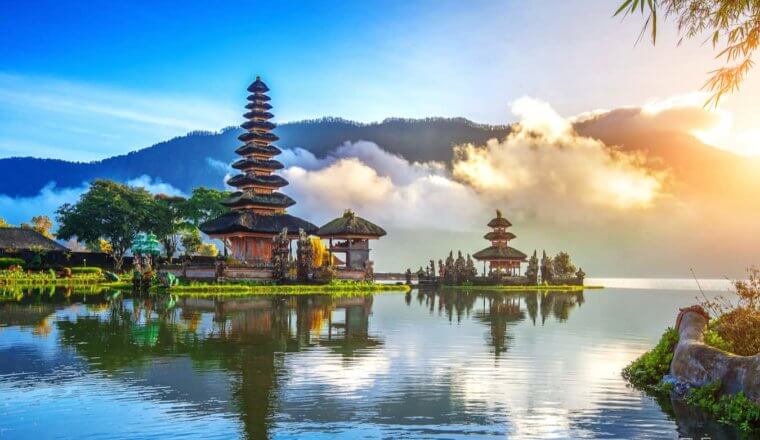
The 6 Best Hostels in Bali
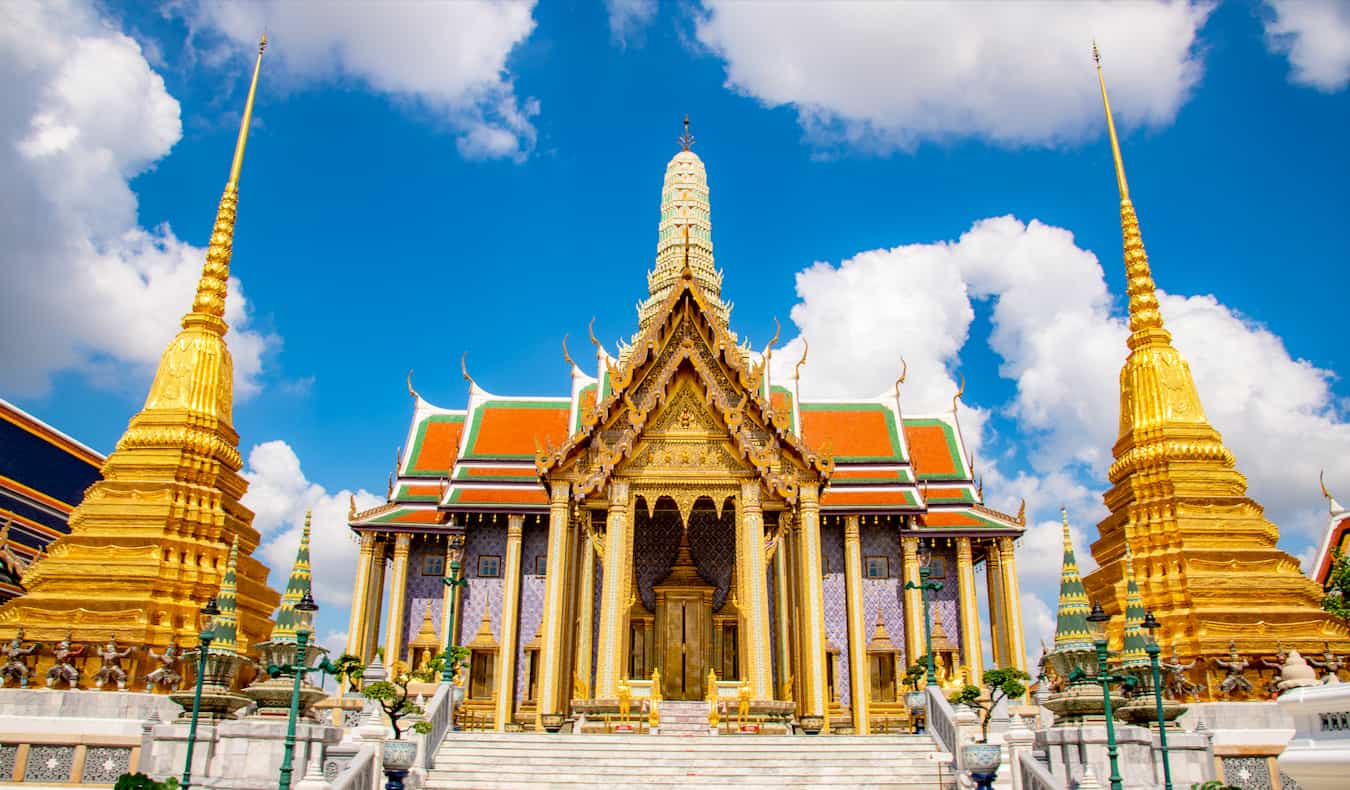
The 22 Best Things to Do in Bangkok

5 LGBTQ Travel Tips for Asia

Is Southeast Asia Safe for Travelers?
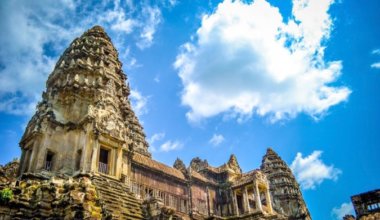
Backpacking Cambodia: 3 Suggested Itineraries for Your Trip
Get your free travel starter kit.
Enter your email and get planning cheatsheets including a step by step checklist, packing list, tips cheat sheet, and more so you can plan like a pro!

- Where To Stay
- Transportation
- Booking Resources
- Related Blogs
Things to Do in Monino, Russia - Monino Attractions
Things to do in monino.
- 5.0 of 5 bubbles
- Good for Kids
- Budget-friendly
- Hidden Gems
- Good for Big Groups
- Adventurous
- Good for a Rainy Day
- Good for Couples
- Honeymoon spot
- Good for Adrenaline Seekers
- Things to do ranked using Tripadvisor data including reviews, ratings, photos, and popularity.

1. The Central Air Force Museum
The Unique Burial of a Child of Early Scythian Time at the Cemetery of Saryg-Bulun (Tuva)
<< Previous page
Pages: 379-406
In 1988, the Tuvan Archaeological Expedition (led by M. E. Kilunovskaya and V. A. Semenov) discovered a unique burial of the early Iron Age at Saryg-Bulun in Central Tuva. There are two burial mounds of the Aldy-Bel culture dated by 7th century BC. Within the barrows, which adjoined one another, forming a figure-of-eight, there were discovered 7 burials, from which a representative collection of artifacts was recovered. Burial 5 was the most unique, it was found in a coffin made of a larch trunk, with a tightly closed lid. Due to the preservative properties of larch and lack of air access, the coffin contained a well-preserved mummy of a child with an accompanying set of grave goods. The interred individual retained the skin on his face and had a leather headdress painted with red pigment and a coat, sewn from jerboa fur. The coat was belted with a leather belt with bronze ornaments and buckles. Besides that, a leather quiver with arrows with the shafts decorated with painted ornaments, fully preserved battle pick and a bow were buried in the coffin. Unexpectedly, the full-genomic analysis, showed that the individual was female. This fact opens a new aspect in the study of the social history of the Scythian society and perhaps brings us back to the myth of the Amazons, discussed by Herodotus. Of course, this discovery is unique in its preservation for the Scythian culture of Tuva and requires careful study and conservation.
Keywords: Tuva, Early Iron Age, early Scythian period, Aldy-Bel culture, barrow, burial in the coffin, mummy, full genome sequencing, aDNA
Information about authors: Marina Kilunovskaya (Saint Petersburg, Russian Federation). Candidate of Historical Sciences. Institute for the History of Material Culture of the Russian Academy of Sciences. Dvortsovaya Emb., 18, Saint Petersburg, 191186, Russian Federation E-mail: [email protected] Vladimir Semenov (Saint Petersburg, Russian Federation). Candidate of Historical Sciences. Institute for the History of Material Culture of the Russian Academy of Sciences. Dvortsovaya Emb., 18, Saint Petersburg, 191186, Russian Federation E-mail: [email protected] Varvara Busova (Moscow, Russian Federation). (Saint Petersburg, Russian Federation). Institute for the History of Material Culture of the Russian Academy of Sciences. Dvortsovaya Emb., 18, Saint Petersburg, 191186, Russian Federation E-mail: [email protected] Kharis Mustafin (Moscow, Russian Federation). Candidate of Technical Sciences. Moscow Institute of Physics and Technology. Institutsky Lane, 9, Dolgoprudny, 141701, Moscow Oblast, Russian Federation E-mail: [email protected] Irina Alborova (Moscow, Russian Federation). Candidate of Biological Sciences. Moscow Institute of Physics and Technology. Institutsky Lane, 9, Dolgoprudny, 141701, Moscow Oblast, Russian Federation E-mail: [email protected] Alina Matzvai (Moscow, Russian Federation). Moscow Institute of Physics and Technology. Institutsky Lane, 9, Dolgoprudny, 141701, Moscow Oblast, Russian Federation E-mail: [email protected]
Shopping Cart Items: 0 Cart Total: 0,00 € place your order
Price pdf version
student - 2,75 € individual - 3,00 € institutional - 7,00 €

Copyright В© 1999-2022. Stratum Publishing House

IMAGES
COMMENTS
Liveaboard dive trips in Indonesia can speed you off to Komodo National Park for sharks, mantas, dolphins, and tiny macro-critters or to Raja Ampat's pristine coral gardens and record numbers of crazy coral reef species. Explore the gin-clear waters of the Banda Sea and its undersea mountains, or feast your eyes on Alor's rugged volcanic ...
Dive Trips Indonesia were amazing from the start to the finish, a very professional organisation . We felt totally safe and so well looked after in every area . Our comfort safety and enjoyment was their number one priority . So much planning went into each dive and each briefing was very thorough, thankyou to the crew for their attentive care
Indonesia regularly tops DIVE's annual travel awards - here's our selection of Indonesia's best diving spots from a vast archipelago which is made up of more than 17,500 islands that stretch over an area more than 5,000km in length. 1) Pulau Weh, Sumatra; 2) Sangalaki, East Kalimantan; 3) Bunaken Marine Park, Sulawesi; 4) Lembeh Strait ...
03 Jul - 10 Jul 2024. Raja Ampat, Indonesia. Full board. 4 star hotel. Papua Paradise Eco Resort. PADI 5 star dive center. Onsite. Incl. 20 boat dives per diver. From USD 3,010.
There truly is no equal when it comes to scuba diving in Indonesia. With more than 3,000 fish species, 600 coral species, ... This dive site is ideal for beginners along with any experts looking to start their dive trip on a beautiful multi-level diving site. There is a canopy of rich and vibrant coral stretching from 5-24m of depth.
It is a violation to operate and conduct any form of scuba diving programs or organize dive travel services without a valid and official license in Indonesia. All Trident Dive Indonesia scuba diving trips and programs are conducted, organized, arranged, and managed by Trident Dive Indonesia.
Diving itineraries are 7 to 10 nights, and although you can dive year-round, the prime time is between May and October during the Southeast Monsoon. Liveaboard Indonesia trips to Komodo often depart from Bima Bay or Labuan Bajo, both an hour's flight from Bali or Jakarta. The excursions not only explore Komodo but also venture to dive sites ...
Top Dive Sites around Indonesia. There are currently 188 dive sites listed around Indonesia, of which 146 are Reef dives, 61 are Drift dives and 51 are Wall dives. Explore the dive site around Indonesia with the help of the filters above or the interactive map. Also checkout each dive site's detail page and cast your vote if you know the site ...
Indonesia has a vast Landscape and Ocean and booking a trip with Liveaboard Indonesia gives you the perfect opportunity to explore. Generally, Scuba Diving itineraries range from 2 - to 20 days, depending on the location you choose. The conditions for diving and the weather, make Indonesia a perfect Scuba Diving destination all year round.
Bali Diving Trips & Safaris (Dive Packages) Indonesia's diving is among the best in the world. Diving in Bali is an easy and inexpensive way to see the best of Indonesia. Often overlooked by divers headed elsewhere in Indonesia, Bali SCUBA diving is special in its own right. Either as an add-on to an Indonesia diving trip or as a complete and ...
January to December. The diving season in Indonesia is year round thanks to the number of islands and dive areas. Diving liveaboards to Komodo and Bali run all year but are in the most demand from April to November. Weather conditions mean Raja Ampat's dive season is from October to April and most operators don't offer dive cruises outside of ...
Raja Ampat Area, West Papua - The holy grail of Indonesian scuba diving. 10. Wakatobi, South East Sulawesi - Exclusive area with some of the world's most beautiful coral reefs. See also: Other Dive Areas in Indonesia - Liveaboards & Dive Resorts - Travel Tips. 1. Ambon Bay, Maluku.
Call us today at (800) 737-3483 to book your dive trip to Indonesia. Or simply reserve your Indonesian dive trip online by clicking below. Reserve Now. The Best Scuba Diving in Indonesia is available from Ultimate Dive Travel. We book only the highest-rated resorts and liveaboards.
When to dive in Bali. The dry season in Bali runs from April to October however the best diving season is from May to November. The best time to see Manta Rays is April and May. The best time or season to see the famous Mola Mola, Oceanic sunfish is from August to October.
Explore diving in Indonesia. Indonesia is an epicenter of biodiversity, hosting a greater variety of marine life than anywhere else on earth. With over 17,508 islands and situated in the heart of the coral triangle, Indonesia is a diver's paradise. From tiny pygmy seahorses and macro critters to magnificent manta rays and the mighty Mola ...
With a total of 24 team members, our 16 guests are guaranteed a truly personalized service. Next we chose to focus on diving the stunning Indonesian archipelago, a true remote paradise, packed with 5-star dive sites to match our 5-star liveaboard and crew. Indonesia offers everything from healthy coral reefs to sandy critter hide-outs, with so ...
IN DIVE WE TRUSTSTRANGER ONCEFRIENDS FOREVER. DIVE TRIPS. Divephoria is diving community in Indonesia with different background but share SAME PASSION. We engaging communities through friendliness, fun, enjoyment vibrant dive trips! With the euphoria of dive we make hanging out a memorable diving and friends.
If you're looking for culture, activities, wildlife or sheer adventure, Indonesia is one of the richest countries in the world. With an estimated 13,466 islands, it's a whopper too. But Indonesia beyond Bali and Lombok (and the Gili Islands) remains largely unknown to many travelers.To pick just one example, Sumatra (80 times the size of Bali) is almost a world in itself.
3. Learn to dive. There are many great dive sites around the region for those interested in underwater exploration. You can learn to dive here at a fraction of what it would cost back home too. Some of the best places are Ko Tao (Thailand), Sipadan (Malaysia), as well as Gili Islands (Indonesia) and Coron, Palawan (The Philippines).
Things to Do in Monino, Russia: See Tripadvisor's 294 traveler reviews and photos of Monino tourist attractions. Find what to do today, this weekend, or in September. We have reviews of the best places to see in Monino. Visit top-rated & must-see attractions.
1 likes, 0 comments - scubaverse_media on June 5, 2024: "Vote for Bunaken Oasis Dive Resort in the World Travel Awards! In the vibrant heart of Sulawesi, Indonesia, nestled among the pristine...". Scubaverse | Vote for Bunaken Oasis Dive Resort in the World Travel Awards!
Bali dive resorts have some of Indonesia's best and most accessible scuba diving. Dive vacations in Bali are famous for colourful reefs, legendary surf breaks and world-class dive sites. Due to its unique position at the edge of the channel, there is a huge diversity of marine life and has become known as the 'Island of the Gods'. .
Pool «Kristall» - school of the Olympic reserve: diving, synchronized swimming, swimming. Home arena hockey team Kristall Elektrostal - Ledovyi Dvorets Sporta «Kristall» in 1995 year. The city ice hockey team Kristall Elektrostal was established in 1949 and plays in the Junior Hockey League Division B. Notable people Nikolay Vtorov Street
Burial 5 was the most unique, it was found in a coffin made of a larch trunk, with a tightly closed lid. Due to the preservative properties of larch and lack of air access, the coffin contained a well-preserved mummy of a child with an accompanying set of grave goods. The interred individual retained the skin on his face and had a leather ...
Moscow Oblast ( Russian: Моско́вская о́бласть, Moskovskaya oblast) is a federal subject of Russia. It is located in western Russia, and it completely surrounds Moscow. The oblast has no capital, and oblast officials reside in Moscow or in other cities within the oblast. [1] As of 2015, the oblast has a population of 7,231,068 ...
5. Find & book dive trips in Indonesia: check out the dive center, location, duration, price, inclusions and cancellation policy. Book online.